THE BEST OFF-GRID STAYS IN AUSTRALIA GLAMPING BY A RIVER IN NEW ZEALAND
BIKING IN TASMANIA (WITH EVERY COMFORT) A TROPICAL ISLAND ONLY FOR YOU


THE BEST OFF-GRID STAYS IN AUSTRALIA GLAMPING BY A RIVER IN NEW ZEALAND
BIKING IN TASMANIA (WITH EVERY COMFORT) A TROPICAL ISLAND ONLY FOR YOU

KNOW 10 NEW REASONS TO GO TO BALI
DINE CHECK IN TO THESE HOTEL RESTAURANTS
INNOVATE HOW TO BE A COURAGEOUS LEADER

The Audi Q5 Sportback Life. Unrestrained.
With stunning, coupé-like design, combined with class-leading technology, the Q5 Sportback will draw you in before sending you into the future.




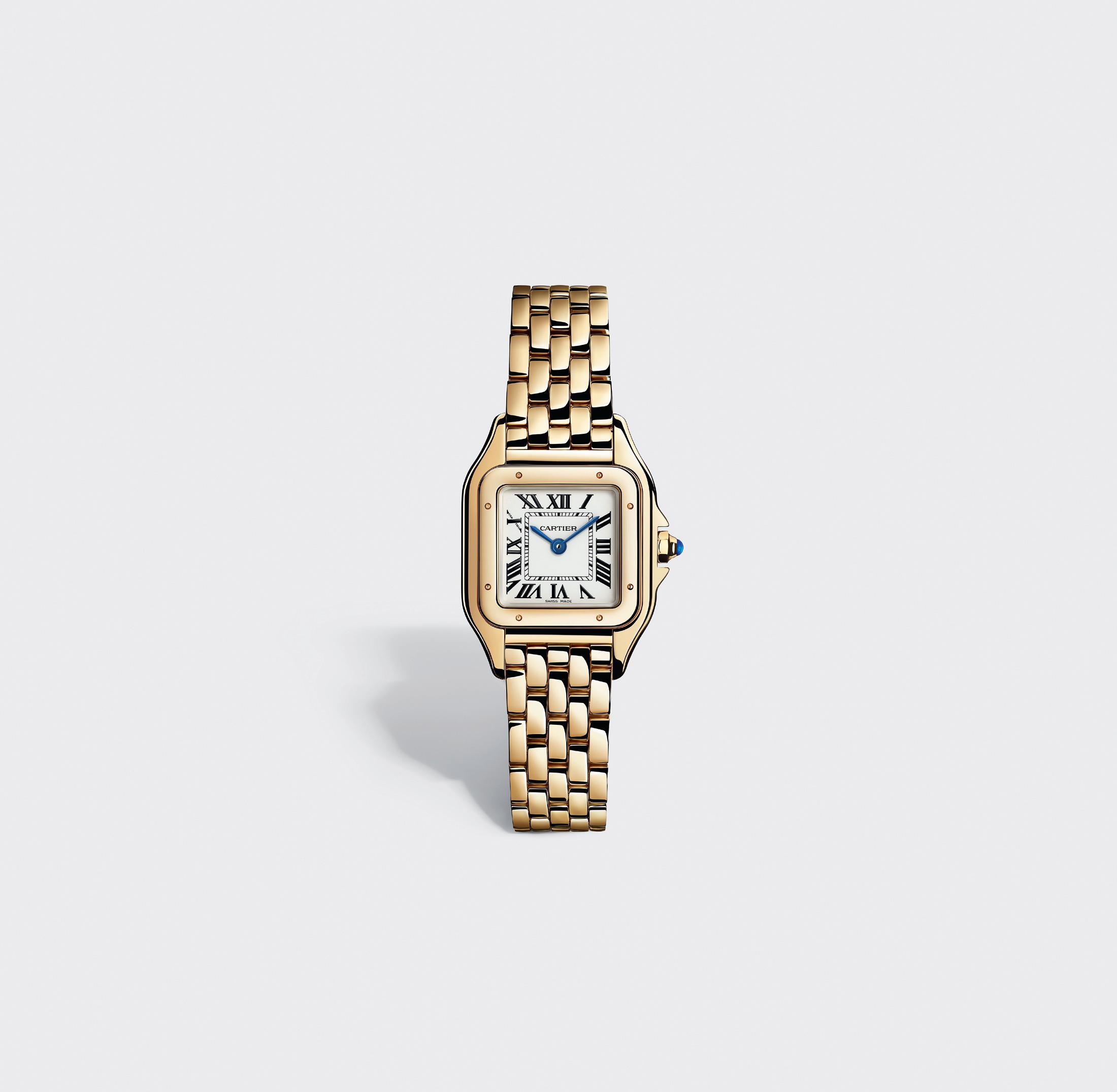


The Crowd-pleaser: Asian bolognese at XO
Best of: Gold Coast, Queensland
Wine List: Barolo 64 Local Heroes: Mornington Peninsula, Victoria
Call of the wild Get close to nature at these five high-end stays across Australia 82 Go with the flow Settle in at a glamping site on New Zealand’s North Island 90 Close to home Take the kids on a wildlife adventure at Australia Zoo
Only you Enjoy the luxury of privacy on a Tahitian island retreat
Ride or dine Hit an exhilarating bike trail with gourmet comforts in Tasmania



156 Changing Lanes: Three corporate leaders tell how they made the switch to a different industry
164 View From The Top: Alastair Symington, Group CEO and managing director, Blackmores
166 Career Path: Gill Minervini, festival director, Vivid Sydney
168 Clock Wise: Sinéad Burke, CEO, Tilting the Lens
170 Small Business: Conquer supply-chain issues and protect your business from disruption in the future
172 Upstart: Bio-Gene
115 New Zealand’s four major cities have all the adventure, dining and natural wonders you’re looking for
132 On The Inside: Arijiju, Kenya
134 Creative Process: Clara Adolphs
136 Foundations: Daylesford Longhouse, Victoria
138 The Statement: Wiggle side chair
140 The Classic: The little black dress
142 Packing List: Fashion for travelling in style
146 Watch special: The latest timepieces from the world’s premier brands 134 On board
185 Inflight entertainment
190 Health, safety and security on board and when you land
194 Games Special report


Editor-in-Chief Kirsten Galliott
Content Director
Genevra Leek
Deputy Content Director
Faith Campbell
Content Manager
Natalie Reilly
Digital and Content
Operations Lead
Hana Jo
Online Editor
Christina Rae
Managing Editor, Qantas Hotels
Bridget de Maine
Digital Producer
Anneliese Beard
Head of Sales, Travel
Tony Trovato
+61 404 093 472
NSW Sales Manager
Callum Bean
+61 404 729 224
Creative Director
Tony Rice
Art Directors
Kate Timms
Nick Clark
Visual Director
Elizabeth Hachem
Copy Director
Rosemary Bruce
Deputy Copy Director
Sandra Bridekirk
Copy Editors
Pippa Duffy
Nick Hadley
Production Manager
Chrissy Fragkakis
NSW Senior Account Manager
Crystal Wong
+61 420 558 697
National Advertising Manager,
Business & Travel
Isabella Severino
+61 459 999 715
Qld, WA and SA Sales Manager
Sarah Harding
+61 403 699 867 For editorial inquiries, contact:
Head of Sales, Victoria
Chris Joy +61 406 397 715
Senior Account Manager, Victoria Miranda Adofaci +61 410 387 707
Senior Account Manager, Victoria Jo Farrugia +61 450 968 882
Digital Sales Director
Mike Hanna +61 402 640 095
Digital Campaign Manager and Product Specialist
Anna Delgado +61 404 855 041
International Representatives
Greater China and Japan
Peter Jeffery +852 2850 4013 peterjeffery@asianimedia.com
South-East Asia and the UK
Nick Lockwood +65 9776 6255
nick.lockwood@ pharpartnerships.com
United States
Ralph Lockwood +1 408 879 6666 ralph.lockwood@ husonmedia.com
For advertising inquiries, contact: qantasadvertising@mediumrarecontent.com
Head of Rare Creative Paulette Parisi Content and Partnerships Director Mark Brandon Senior Content Editor Natalie Babic Partnerships Editor Helen Martin Senior Writer Terry Christodoulou Creative Director Philippa Moffitt Designer Mark Gattellari Strategy and Insights Director Jane Schofield Senior Strategy Manager Natalie Pizanis Qantas Senior Partnerships Manager Alana Baird Qantas Loyalty Partnerships Manager Molly Maguire Content and Events Campaign Manager Jessica Manson
For Rare Creative inquiries, contact: rarecreative@mediumrarecontent.com
Managing Director Nick Smith Chief Commercial Officer Fiorella Di Santo
Head of Content, Travel and Business Kirsten Galliott Head of Design, Travel and Business Tony Rice Head of Audience Intelligence Catherine Ross Financial
Controller Leslie To Finance Manager Yane Chak Junior Accountant Yongjia Zhou
Qantas magazine is published for Qantas Airways Ltd (ABN 16 009 661 901) by Medium Rare Content Agency (ABN 83 169 879 921), Level 1, 83 Bowman Street, Pyrmont, NSW 2009. ©2023. All rights reserved. Printed by IVE Group. Paper fibre is from sustainably managed forests and controlled sources. No responsibility is accepted for unsolicited material. Articles express the opinions of the authors and not necessarily those of Qantas Airways Ltd or Medium Rare Content Agency. ISSN 1443-2013. For a copy of Medium Rare Content Agency’s Privacy Policy, please visit mediumrarecontent.com.




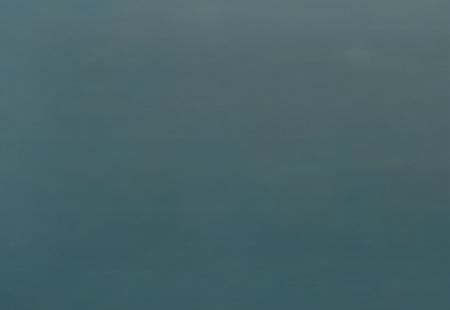
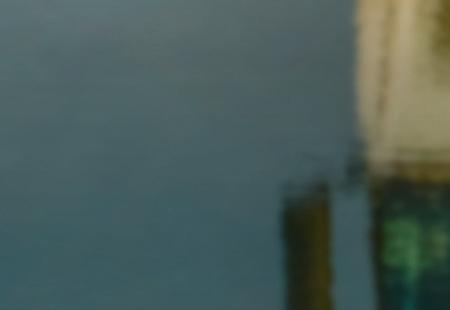
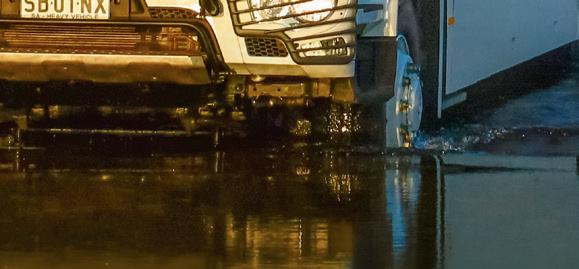




















We’re all so busy all the time.
We’re chasing our tails. We feel bombarded, maybe even overwhelmed (or is that just me?). The lessons we took from COVID seem to have disappeared and many of us have gone straight back to the way things were before 2020. As it was then, time is the true luxury.
So when does time slow for you?
I’d suggest it’s when we travel. Perhaps it’s on a beach holiday where the important decisions revolve around what to eat and when to swim. Maybe it’s on a road trip when the rhythm of life drops down a gear. Or in a beautifully appointed lodge in the middle of nowhere and the only sounds are the breeze in the trees and the familiar cackle of a kookaburra.
It’s these kinds of holidays that have informed this issue, which is all about celebrating wild luxury.
To get out in nature used to require an off-road vehicle, a sleeping bag and a tent. Although I dream of getting better at camping (really!), I’m always swayed by a house with views of water or forest or sky –the kind of outlook that forces me to stop, sink into a chair and lose an hour watching the light change.
These are the moments when time really does seem to slow.
There’s a scientific explanation for this. When we do or see things that are familiar, our brain quickly processes the information. But when we do or see something new – something fresh and exciting – our brain needs to work harder to take it in and understand it. Our perception of time seems to lengthen.
Of course, we can’t actually get more than 24 hours in a day. But perception of time is powerful. And when we travel, we create time.
So this month, I’m intent on being a little less frenetic and a lot more serene. What about you?
Kirsten Galliott Editor-in-Chiefkirstengalliott

Our writers are not armchair travellers. Rest assured any assistance we accept from the travel industry in the course of preparing our stories does not compromise the integrity of our coverage.


One of the questions I’m often asked is what Qantas is doing to lower emissions. It’s not surprising given we know how important this issue is for our customers and how reliant the airline industry is on fossil fuel at present.
One tool we have available is Sustainable Aviation Fuel (SAF), which cuts emissions by up to 80 per cent. We’ve made a commitment for it to make up 10 per cent of our fuel mix by 2030. We’re already purchasing SAF overseas for flights from London and on services from California from 2025. The biggest challenge we have is the fact we don’t have a SAF industry in Australia. That’s something we’re working to change. Alongside Airbus, we’ve recently invested seed funding for a Queensland biofuel production facility that will turn agricultural by-products, including sugarcane waste, into jet fuel. Construction is expected to start next year, with the facility producing up to 100 million litres annually. It’s the first investment from the joint US$200-million fund we set up to accelerate the establishment of a SAF industry in Australia. We have several more projects we’re looking to support this year.
SAF isn’t the only lever we’re pulling. Our fleet renewal program will also help significantly reduce emissions, with new aircraft using up to 25 per cent less fuel than some of our existing fleet. We’re continuing to invest in high-quality offsets to bridge the gap while SAF and other zero-emission technologies are developed.
And we’re also supporting our customers to be more sustainable. Last year Qantas Frequent Flyer launched the Green Tier status, which rewards members for making more sustainable choices, such as offsetting their car and home. Since then, more than 400,000 customers have taken steps towards attaining the new status.
Getting to net zero is a big task that will take a sustained effort from the airline industry and government to achieve. But reducing our environmental impact is the right thing to do and will ensure future generations enjoy the benefits of aviation. Because we want you to have a great flight today and for years to come.
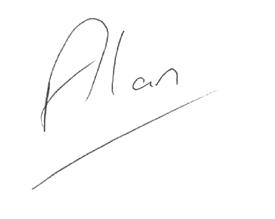 Alan Joyce CEO, Qantas
Alan Joyce CEO, Qantas

Qantas has made its biggest investment in inflight and lounge dining for a decade. The airline is introducing new dishes, larger portions and plant-based options in all cabins on the regional, domestic and international networks. Customers will enjoy high-quality, seasonal ingredients from premier Australian producers, such as Margra lamb cutlets (above), and a wine list that saw Qantas win 10 medals at the Cellars in the Sky Awards this year.
Once onboard, connect your own device to Qantas Free Wi-Fi on domestic flights in three simple steps:
Enable Aeroplane Mode and select the “Qantas Free Wi-Fi” network in your Wi-Fi settings.
Follow the prompts on the “Welcome Onboard” screen to connect.
Once you’re connected, you’re ready to access the internet and start exploring.
Having trouble connecting? Make sure you’re connected to the “Qantas Free Wi-Fi” network and go to wifi.qantas.com in your preferred browser to start the connection process. To ensure an enjoyable flight for everyone, keep flight mode activated, switch your device to silent and refrain from voice and video calls.
We acknowledge the Traditional Custodians of the land on which we work, live and fly. We pay our respects to Elders past and present and are committed to honouring Australian Aboriginal and Torres Strait Islander peoples’ unique cultural and spiritual relationship to the land and water.



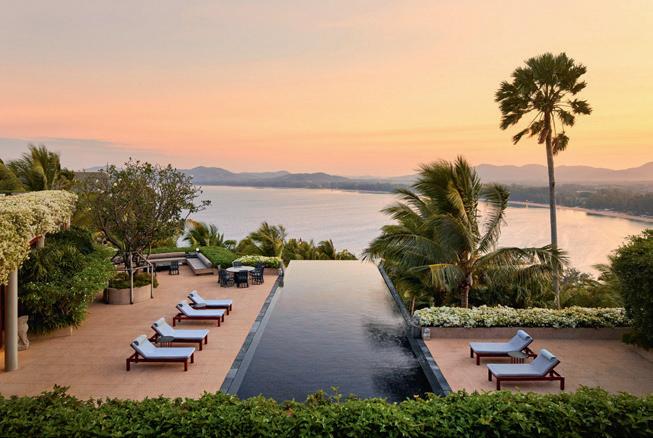
Would you rather stay in a riverside retreat, an off-grid alpine sanctuary or a rustic haven surrounded by centuries-old native forest?
How many of Australia’s great walks have you done?
These are the best treks, from a short ramble along the NSW coast to a multi-day hike in the Northern Territory desert.

Sunrise yoga sessions, forest walks, magnesium ice baths and herbal facials are just the beginning of your Zen journey.



Three Qantas travellers share highlights from their most recent trip to this vibrant city.

Stephen Howard
FREQUENT FLYER STATUS
“I travel to Hong Kong quite often for work and I lived there as a teenager so it’s like my second home. I love flying with Qantas because it’s quintessentially Australian service – you’re treated exceptionally well every time you travel. Beaches are Hong Kong’s biggest secret: the south side of the island has Shek O, Repulse Bay and Stanley. From Sai Kung, known as the ‘back garden of Hong Kong’, you can reach the bay of Tai Long Wan by boat or hiking – if I showed you photos, you’d think you were in Hawaii. You must visit.”

Catherine Cervasio
FREQUENT FLYER STATUS .................. Platinum
“I’ve been travelling to Hong Kong for business for 20 years. I went back in March and stayed at the Hyatt Regency Hong Kong (hotel. qantas.com.au/hyattregencyhongkong).
It was my first trip back since the pandemic and I wanted to do all the touristy things I’d previously taken for granted. I went on the Star Ferry, travelled along the Central-MidLevels escalator and visited Yat Lok (34-38 Stanley Street; +852 2524 3882), a Michelinstarred roast goose restaurant. I was seated in a booth with three strangers but it was worth it for beautiful noodles and perfect goose for less than A$10. It’s great.”

Justine Campbell
FREQUENT FLYER STATUS .................. Platinum
“My family and I lived in Hong Kong for a decade. We hadn’t visited in three years and were excited to return to see old friends, reconnect and eat. On this trip, Lamma Island was one of our first stops. Take a water taxi, go for a hike and then stop for lunch at a seafood restaurant. There’s one called Lamma Hilton (26 Sok Kwu Wan, Lamma Island; +852 2982 8290) where you can get a super-cheap plate bulging with salt and pepper calamari. We were desperate for comfort food and we found it.”




Fares are based on Promo(s) DN*. Featured fares are per person based on double occupancy and are available for 1st/2nd guests only. Taxes, Fees & Port Expenses are included. *Anniversary Sale: Unless otherwise noted, all elements of the Anniversary Sale (“Offer”) are available only on Summer 2023–Winter/Spring 2024 cruises/cruisetours and exclude Grand Voyages and any voyage lasting 3 days or less (“Eligible Cruises”) booked between 4 May to 31 May 2023 (“Booking Period”). Offer has no cash value, is subject to availability, is capacity controlled, may be modified or withdrawn at any time, is available for new bookings only, and is neither transferable nor refundable. Receive up to 25% off cruise-only launch fares released into the market from December 2021. #Reduced Deposit is a reduced per-person booking deposit available only for 1st/2nd guests in a stateroom on select cruises and cruisetours booked outside of the final payment date. Balance is due on final payment of the booking. Standard refund and cancellation conditions apply. A deposit is required for all stateroom guests. 3rd/4th guests in a stateroom pay the standard deposit amount. Onboard Credit is available in the following amounts: US$25 per person (US$50 per stateroom) for guests booked on a 4- to 13-day cruise in an Interior or Ocean View stateroom; US$50 per person (US$100 per stateroom) for guests booked on a 4- to 13-day cruise in a Verandah stateroom; US$75 per person (US$150 per stateroom) for guests booked on a 4- to 13-day cruise in a Suite; US$50 per person (US$100 per stateroom) for guests booked on a 14+ day cruise in an Interior or Ocean View stateroom; US$100 per person (US$200 per stateroom) for guests booked on a 14+ day cruise in a Verandah stateroom; US$150 per person (US$300 per stateroom) for guests booked on a 14+ day cruise in a Suite. One (1) Onboard Credit per guest. Onboard Credit is in USD, is neither refundable nor transferable, and has no cash value. Onboard



Last year Sydney lost two of its most admired restaurants: Clayton Wells’ audacious Automata in Chippendale and Enmore/Newtown neighbourhood darling Hartsyard. Happily, the scene tends to shapeshift quickly and Wells soon re-emerged at the casual-cool MOD. Dining at the Art Gallery of NSW. Now, Hartsyard’s Jarrod Walsh and Dot Lee have opened Longshore (longshore.com.au) in the spot where Automata once stood. Swings and roundabouts. Longshore, which is part of the Old Clare Hotel, is a seafood-focused deep-dive into Walsh’s childhood in Port Macquarie on NSW’s Mid North Coast. “One dish that’s really close to my heart is a steamed sand whiting with pipis, which is funny because that’s the bait we used to catch fish with when we were kids,” he says. There’ll also be greenlip abalone, Moonlight Flats oysters and for those who want something land-based, Wagyu tri-tip. The wine list, designed by former Chin Chin head sommelier Isobel McFadden, leans white to complement the fish, while the eatery’s décor of seagrass, cork and pale-blues and mustards also reflects the marine theme.
Anyone who’s been missing Lee’s famously welcoming service will be pleased to see she’s back on the floor and the menu is designed to do-it-your-way: a full dégustation, à la carte or low-key snacks and drinks. “What’s important for us is that we see people again and again,” she says. A little how the rest of us feel about these Sydney restaurateurs.


VIC Totti’s Lorne
The team behind Lana has scored a prime beachfront position in the revitalised Bondi Pavilion to open Promenade (above; promenadebondibeach. com), which is divided into a main dining room and two private spaces. Executive chef Chris Benedet (formerly of Cirrus and Monopole) presents a cruisy coastal menu with an Asian twist that’s designed to eat with sandy feet and salty skin.
It’s possible that Brisbane now has more Italian restaurants than many towns in Italy but that’s because the local appetite for excellent pizze fritte, polpette and veal saltimbocca appears limitless. This vibrant wine bar in the former Gauge space (barrosa.com.au), from the crew behind Beccofino and Julius, stands out from the crowd.
The puffy woodfired bread that launched a thousand “Aahs!” at three outposts in Sydney has finally reached seaside Victoria, as Merivale’s Italian stalwart, Totti’s, opens in the Lorne Hotel (merivale.com). The vacation location means it will have more of a festive vibe than its northern siblings, with its ice-cream-coloured terrazzo and ’70s edge. “Like Totti’s on holiday,” says designer Kelvin Ho.
Scotch eggs, bangers and mash and a good savoury brown sauce are the building blocks of proper British cooking. Add a well-curated wine list of international and West Australian drops and you’ve got a spot-on mix of the old and new worlds. That’s the promise at this new wine bar at 77 Old Perth Road in Bassendean, Perth.


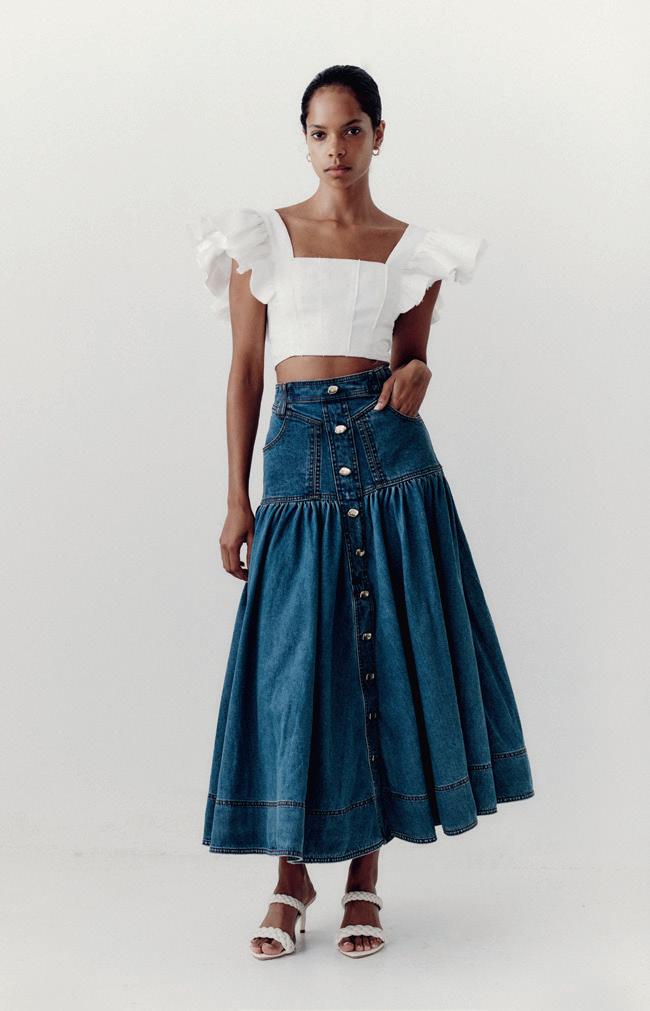
Jane Fonda, Diane Keaton, Candice Bergen and Mary Steenburgen making mischief in Italy and a plot as thin as gaberdine might not sound like blockbuster material but the original Book Club, which rolled into cinemas in 2018, grossed more than $155 million worldwide (against a budget of $21 million, that’s a profit as serious as high blood pressure). Book Club: The Next Chapter sees a betrothed Fonda having one last, elongated hens’ party in the romantic cities of Venice and Rome before tying the knot with Arthur (played by Don Johnson, the father of Dakota Johnson, who starred in 50 Shades of Grey, the book the women studied in the first Book Club – in case you were wondering). Out on 11 May.
The antidote to true-crime podcasts that produce insomnia or nightmares (and sometimes both) has arrived in the form of gentle, funny storytelling from stand-up comedian, writer and actor Joe Pera. Drifting Off With Joe Pera is designed to lull you to sleep and the stories – about everything from soup to the history of clock chimes – are made even more benign by Pera, who has a voice like a weary cartoon bear. Just the nightcap you need after listening to My Favourite Murder on 2.25 speed.
For the past 35 years, denim has been largely confined to jeans and jackets (and shorts for the bold). But the demure dresses from Chloe, Stella
We’ve scanned the zeitgeist for what to watch, wear, listen to and drink now.

McCartney and even Valentino appear to be quietly colluding with the best-selling skirts at Aje (its midi denim skirt, above, is $425, ajeworld.com.au) to take us all back to circa 1988. But put the hair crimper down – today’s pieces are adorned with gold buttons, tailored as well as a suit and are elegant enough for work.
Cheers had Frasier and Seinfeld had Curb Your Enthusiasm – spin-offs that were darker and a touch edgier than their originals. Cult fragrance-makers Le Labo are following suit by launching a spin-off to its beloved classic, Another 13. This one is called Ambroxyde 17 because it contains the synthetic version of amber, that musky, vaguely sweet scent that made
the original fragrance and its creators so successful for the past 17 years. The difference here is that the new version comes in candle form so you’re adding a little smoke to the mix. Available online for $120 at lelabofragrances.com.au.
The Yarra Valley is not the first place that comes to mind when you think of Italian-style liqueur. But the folks at Zonzo Estate are hoping to change that with the release of their zingy Zoncello Limoncello Spritz and Zoncello Limoncello liqueur (above). Already known for its small-batch wine, beer and spirits, the brand’s liqueur is the result of a family recipe and peeling 32,000 lemons. Find them both at zonzo.com.au.



Alex de Minaur Australia’s number one men’s tennis champion is competing at the French Open this month. Here, he tells us what he gets up to off the court.
My favourite book is…
The last movie I watched was…
The Rules of People: A Personal Code for Getting the Best From Everyone by Richard Templar. This book gave me a better understanding of people, how they react and behave and why they do what they do. But mostly it showed me how to communicate better. I loved it.
Hustle. I saw it on Netflix last year and it was so good! Adam Sandler is an NBA scout who discovers a player in Spain and tries to draft him. I love how it shows behind the scenes of high-performance athletes and what they go through to get to the top. But my all-time favourite childhood movie was Ocean’s Eleven from 2001. It has a solid cast, is action-packed – it always kept me guessing – and an element of comedy, which is great.
The last TV series I streamed…
The app I use the most is…
The Blacklist . It’s a drama series about a guy who used to be a criminal and helps the FBI catch other criminals. I loved all of the twists and turns and the intrigue in every episode. You never knew what was going to happen next. I binge-watched it and got through it way too quickly.
Instagram . My favourite person on it is [stand-up comedian and actor] Kevin Hart. I follow him because he’s funny, real and posts great content. He also has a love of classic cars, which I’m also interested in.
The podcast I listen to…
The Fantasy Footballers, which is about American football. It’s hosted by three guys, Andy Holloway, Jason Moore and Mike Wright, from Arizona and they have fantasy football teams. I like it because it gets me ready for my own fantasy season and their tips give me the edge I need to win my fantasy football league.


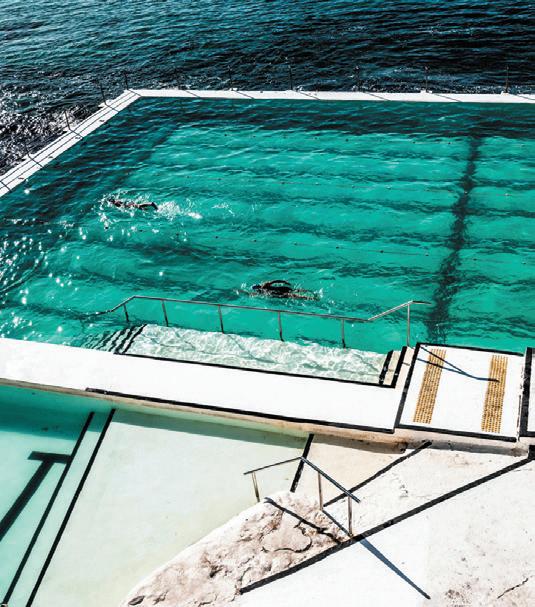

Two trails reveal why this region of culinary and natural riches should be your next getaway.

Make The Gathering café (thegatheringbungendore. com) your first stop in Bungendore, just over 30 minutes drive from Canberra on the new Wine, Water, Wonder trail (visitnsw.com), and try the fluffy French Toast and spicy eggs Benedict on a bagel. After breakfast, head for Bungendore Wood Works Gallery (bwoodworks. com.au), for pieces by more than 200 Australian artists and makers, and Bungendore Leather & Trading (leather
andtrading.com.au), which is packed to its exposed timber rafters with leather goods. Then enjoy a cooking class with French-born chef Christophe Gregoire at his restaurant, Le Très Bon (letres bon.com.au). Be charmed by stories from his travels as you whip up crème brûlée, lemon sorbet or coq au vin.
Lake George and Collector
“Blackberries on steak? Yep, some people thought I was
crazy,” says Joe McCulloch, the new chef at Westering Restaurant at Lake George Winery (lakegeorgewinery. com.au). For a relaxing lunch (book a window seat in the dining room), there’s more of his inventive fare, including mushroom and manchego flan with “tortured” pumpkin and a micro-salad and hulled tomato stuffed with feta, pistachio, walnuts and dried fruit. Each course is paired with the winery’s viognier, chardonnay, riesling or rosé.
You can stay on site in one of two tiny homes perched on the hill above the vines. Sip wine by a firepit before falling asleep to the sounds of nature and waking to views over Lake George.
While you’re here, take the 10-minute drive to the small town of Collector for more top drops at the cellar door of Collector Wines (the chardonnay is a standout; collectorwines.com.au) or a bite to eat at Some Cafe (somecafecollector.com), where comfort food is

A piece of you since 1972.


a speciality – the toastie is stacked with local Pialligo free-range ham.
Goulburn and Bungonia National Park

A 30-minute drive from Collector will land you in Goulburn, one of the stops on the Wild Hume trail. Settle in at restored mansion Clonsilla (airbnb.com.au) – built in 1907, it’s now a four-bedroom home with manicured gardens and its own glasshouse. Nab the vast first bedroom on the left to feel like lord of the manor. It’s an easy walk to The Park Cafe (theparkcafe.com. au) for its strudels, tarts, slices and meringues. Fuel up for a climb to the top of the tower at the Rocky Hill War Memorial and Museum on Memorial Road, the best place to get the lay of the land. Also put Argyle Emporium on your to-do list; this second-hand bookstore
on Sloane Street fills the original Goulburn Police Station – cells and all. “We’ve got roughly 400,000 books, all organised into genres,” says owner Tony Dunn. If losing yourself in wilderness is more your thing, drive half an hour east to Bungonia National Park (nationalparks.nsw.gov.au). Here, The Lookdown lookout – with panoramic views of dramatic gorges and canyons – jutts from a clifftop just 50 metres from the carpark. The adjoining pathway leads to a narrower lookout, suitable for one or two at a time to walk the plank over a sheer drop. The five-hour Red Track will lead you into narrow Bungonia Slot Canyon, where you might need to wade through creeks. Your reward? Gorgeous views down valleys forged by the Shoalhaven River and close encounters with wallabies, wallaroos and lyrebirds.

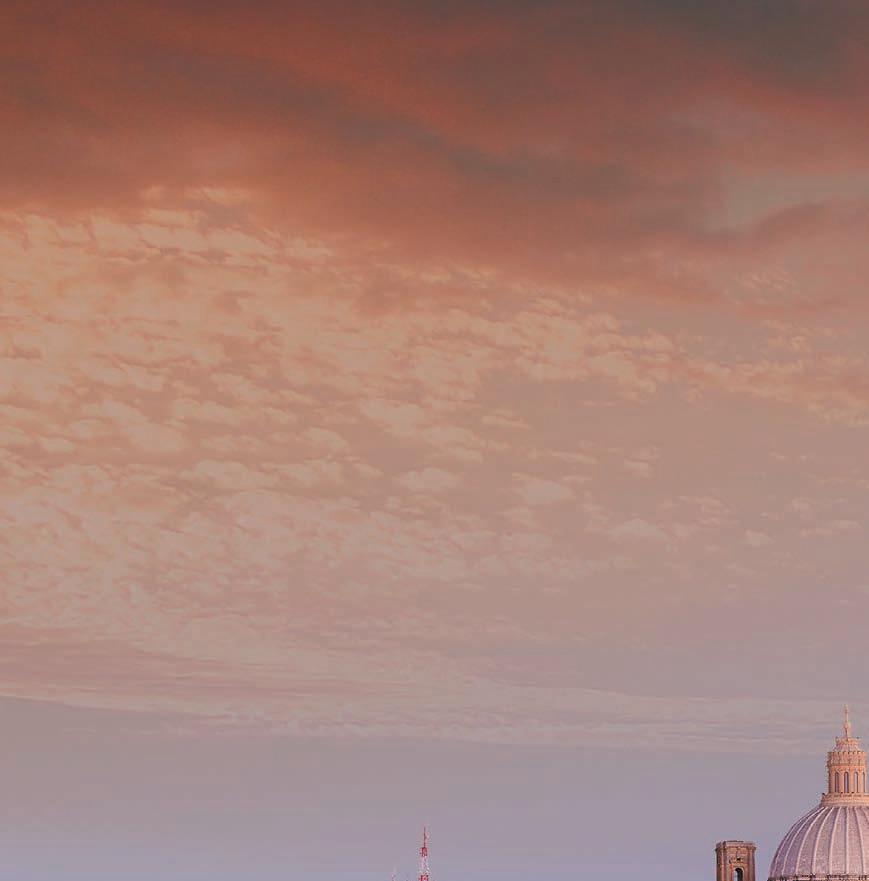











Journey WonderFULLSM on the world’s best places, to the world’s best places. Discover up to 8 countries in one voyage. Wake up to a new view every morning. Dine in a new restaurant every evening. Rise or rest to rejuvenate. This is Relaxed Luxury SM .








Join artists, architects and creative types in the floating city for this celebration of imagination.

Participants at the Venice Biennale include (clockwise from top left) Kéré Architecture from Burkina Faso, British architectural photographer
James Morris, Craig McClenaghan Architecture from South Africa and Brazilian studio Cartografia Negra


Referred to as “the Olympics of the art world”, La Biennale Di Venezia (20 May to 26 November) has showcased innovative and daring creativity for more than a century. Alternating every two years between art and architecture and welcoming 500,000-plus visitors each time, the 2023 architectural theme is The Laboratory of the Future. “Central to all the projects is the primacy and potency of one tool: the imagination,” says Lesley Lokko, curator of the exhibition. “It is impossible to build a better world if one cannot first imagine it.”
This year’s program – a six-month roster of events, lectures, panel discussions and more – spotlights Africa and the African Diaspora, with 63 participants from around the world exhibiting in the historic pavilions at the Giardini, Arsenale and in the city’s centre. Australia’s pavilion is titled Unsettling Queenstown, an exploration of decolonisation and decarbonisation that ponders the postcolonial future of Tasmania’s Queenstown. The exhibit immerses visitors in a floating “ghost” replica of the town’s Empire Hotel, underscored by the oral histories of its First Nations residents.

Stay awhile …
In a city gilded with cultural significance, laying your head for the night in a sprawling manse that’s mere footsteps from Piazza San Marco seems only fitting. Baglioni Hotel Luna (above; hotel.qantas.com.au/ baglionihotelluna) – whose 12th-century birthdate makes it Venice’s oldest hotel – has been lovingly coaxed into this millennium courtesy of a major renovation in 2021. A new spa (complete with sauna and Turkish bathhouse) lends contemporary luxury to oldworld extravagance, such as the 18th-century frescoed ceiling in the property’s Marco Polo
Ballroom, under which you can enjoy your morning espresso.
Baglioni’s Canova Restaurant, helmed by chef Claudio Sadler, is an unmissable experience but a meal at Trattoria da’a Marisa (Fondamenta S. Giobbe, 652; +39 041 720211) – an unfussy canalside eatery packed with Venetian council workers tucking into a €20 set lunch –will become the kind of culinary travel moment you’ll try to repeat for the rest of your life. The rotating daily menu always promises pasta, salad, a braciola di maiale (pork chop) or similar piece of meat and a tiny jug of Prosecco, complete with coffee and biscuits for dessert. Worth a 30-minute meander from the hotel, it pays to settle in early and drink in the vibe along with your digestivo.
Calendar
Australia-wide
Henry Rollins 5 June-3 July
Fitting all of author, spoken-word maestro and punk rock icon Henry Rollins’ creative talents into a single paragraph is impossible. See him for yourself when he returns to Australia with his one-man show on the Good To See You tour.
frontiertouring.com
Maitland, NSW
Kungka Kunpu (Strong Women) Until 21 May
Complex narratives about family, relationships and caring for Country are brought to life at the Maitland Regional Art Gallery by celebrated women artists from the Anangu Pitjantjatjara Yankunytjatjara Lands in this exhibition.
mrag.org.au
Brisbane
Brisbane Comedy Festival Until 28 May
Local comedians Tripod, Nat’s What I Reckon and 2021 Melbourne International Comedy Festival winner Geraldine Hickey join comics from across the globe in a feast of funny, with 110 artists performing more than 350 gigs.
brisbanecomedyfestival.com
Sydney, Melbourne, Brisbane
Marco Pierre White 23, 25 and 30 May
From arriving in London with “£7.36, a box of books and a bag of clothes” to becoming the first British – and then youngest chef – to run a three-Michelin-star restaurant, Marco Pierre White has earned his culinary stripes. Hear his stories on the Out Of The Kitchen tour.
lateralevents.com

The book everyone is reading
Set across five claustrophobic days, Emma Cline’s propulsive new novel, The Guest, follows her heroine, Alex, through a series of increasingly bad decisions that you won’t be able to tear yourself away from. Cline’s debut novel, The Girls, was an international bestseller and this one is even better. Don’t read anything else about it. Just pick it up and clear your diary.


The book you should be reading André Dao’s debut novel, Anam, is a beautiful story of family inheritance and the search for belonging; a tale of the ways we make sense of the displacements and losses of the past and how we understand the business of building a future for ourselves. Considered, lyrical and deeply human, this is literary fiction of profound and lasting depth.
The non-fiction book to know about Helen Elliott should already be a household name for Australian book-lovers after many years of her superior book reviews in different publications. Her own memoir of growing up in Melbourne in the 1950s and ’60s, Eleven Letters to You – in the form of 11 letters to family, friends, neighbours and teachers who have defined her life – is a wise, erudite and charming book, steeped in love.
From the latest novels to classic books worth discovering, these are the page-turning picks for the month.
The Australian book to read now
If you haven’t discovered thriller writer B.M. Carroll yet, The Other Side of Her is a great place to start. Liane Moriarty is a fan, praising Carroll for the “addictive” nature of her stories, and her latest is a delicious slow-burning contemporary drama. When a milliondollar reward is offered for information about the disappearance of an Irish backpacker, two ordinary families with dark secrets find themselves pushed to breaking point.

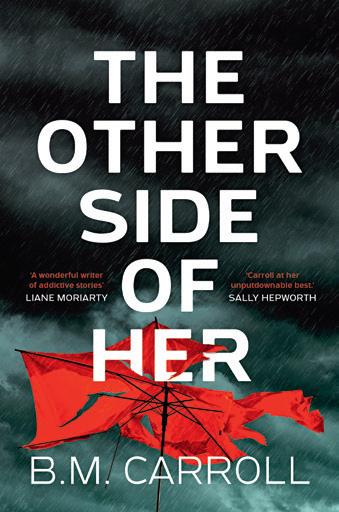
The book to revisit Brigid Delaney’s most recent book on stoicism, Reasons Not To Worry: How To Be Stoic In Chaotic Times, proved to be the perfect prescription for how to make sense of the juggles and pressures of modern life. But her earlier book, Wellmania: Misadventures In The Search For Wellness, is in the news again because of the fabulous Netflix adaptation, Wellmania, starring Celeste Barber. You’ll never think about how to keep healthy, fit and well in the same way again.



“The exhilaration of wearing nature against your skin” is how Paspaley creative director Christina Salter describes the jeweller’s Wild collection, of which this avian ring is a star. Set in yellow-gold, a single pearl conceived in the saltwater off the Kimberley coast is tickled by a feather made from white diamonds, opulent rubies, mixed-colour sapphires and tsavorites – gems inspired by the seasonal shifts of the remote Kimberley wilderness. Perched on a ring finger, this high-jewellery piece is elation in winged form.
LUKE BENEDICTUS
Paspaley Wild Feather Rain Bird ring in 18-carat gold with Australian South Sea pearl, diamonds, sapphires and tsavorites / $44,800 / paspaley.com
With a genderless appeal, the refreshed Hublot Classic Fusion Original Black Magic watch has a minimalist polished lacquered dial and faceted hands that shine the spotlight on the brand’s modernised logo. It’s available in three sizes – 33, 38 and 42 millimetres.
The watch features a high-tech, ultra-tough satin-finished ceramic case that’s almost scratch-proof (beware of diamonds), with its base of zirconium sintered at very high temperatures. The six signature Hublot screws take pride of place on the bezel.
While the case remains inspired by a ship’s porthole (hublot in French), the case back reveals the Hublot HUB1110 self-winding movement, which has a power reserve of approximately 42 hours. The watch is water resistant to 50 metres.
Hublot’s smooth rubber strap, popular with sportspeople for its versatility and comfort, reinforces the timepiece’s clean design principles. The black band is finished with a black ceramic and plated titanium deployant buckle clasp.
KATRINA ISRAEL
Hublot Classic Fusion Original Black Magic 42 millimetre watch / $14,000 / hublot.com



EARN 3 PTS PER $1 SPENT OR SHOP WITH PTS
The fifth generation of the Japanese brand’s popular family SUV has undergone an electrified makeover to reveal its most efficient form yet.
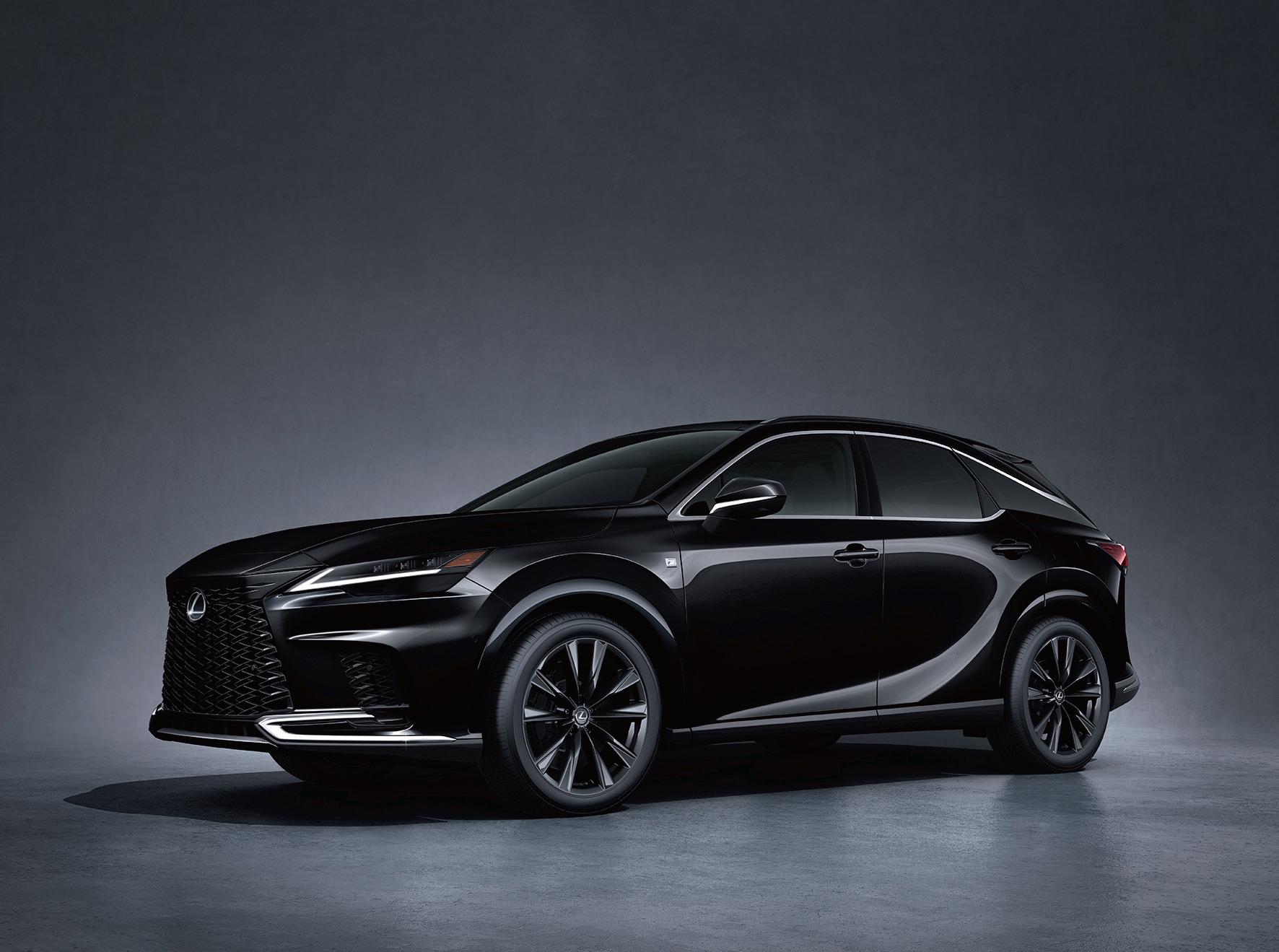
What’s the Lexus RX? It’s the luxury car-maker’s large SUV, one of its most successful models in Australia and a rival of the Audi Q7, BMW X5 and Alfa Romeo Stelvio, among others. So what’s new? The whole thing but, significantly, the line-up is dominated by hybrid petrol-electric power. In fact, the RX 500h F Sport Performance is now the marque’s most powerful hybrid SUV, with a newly engineered 2.4-litre turbocharged petrol engine and parallel hybrid combo resulting in 273kW of power and the debut of a highly agile steering and suspension set-up. But if efficiency impresses you, you might want to check out the entry-level RX 350h 2WD, which brags 5.3L/100km. Sounds great for getting around town. Is it as good inside? It certainly is. Lexus’s interior designers
draw from techniques in Japanese architecture and design to create interesting and spacious interiors. Plus, the higher grades include heated, eight-way adjustable front seats, three-zone climate control with top-tier air purification, soft cabin lighting and more. There’s a range of beautiful colour choices for inside and out so sacrificing style for a family-friendly SUV is not even a concern. What about road trip-friendly technology? How does five USB-C ports, two 12V sockets and one USB-A port sound? There’s also a 14-inch highdefinition touch screen with Android Auto and wireless Apple CarPlay, a 12-speaker Panasonic or 21-speaker Mark Levinson sound system and the most advanced safety and driver aids. How much? From $87,500, plus on-road costs. lexus.com.au

Breathable, temperature regulating merino wool.
It’s been working for sheep for thousands of years.
Shop online at icebreaker.com or marketplace.qantas.com/au



Melissa Palinkas This chef is writing culinary love letters to the past, with a message of hope for the future.


The salty, sour umami underscoring the ricotta dumpling with duck at Young George Bar & Kitchen (younggeorge. com.au) in Fremantle, Western Australia, is the alchemic result of adding duck jus, cream and pepper to ferment liquor from carrots and cabbages that Melissa Palinkas pickles in-house. “It’s one of our most sustainable dishes because we use the entire duck,” says the eatery’s head chef and owner. “The bones form a base stock for the dish once we’ve shredded the duck meat. Even the skin goes in.”
Chefs spruiking their nose-to-tail cooking philosophy isn’t new but what Palinkas is doing – at the hatted Young George and her more recent offering, Ethos Deli & Dining Room (ethosdeli.com.au), also in Fremantle – definitely is.
Her years spent working in restaurant kitchens made it painfully clear just how much waste occurs. But in spite of the added effort and cost, the award-winning restaurateur is committed to a zero-waste policy in her eateries, from the sourcing of ingredients (hyper-local, grass-fed and sustainably farmed on regenerative land) to how the kitchen operates (microfibre cloths instead of disposable ones, reusable tubs sent back to wholesalers to be refilled and compostable cling-wrap).
Palinkas’ German heritage informs her menus, with house-made charcuterie, including pâté en croûte, smoked wieners and copa, all in rotation. But it’s more than just smoked meat that bears the influences of her childhood.
“It’s about paying homage to the way people didn’t waste a morsel of food, recycled, upcycled and reused everything. We lived within our means and weren’t wasteful.”
made the
For Palinkas, this also means expanding into wholesale smallgoods this year, as well as continuing to prove that sustainability can be woven into the seams of business while producing food that stands alone in its flavour.
Green tier rewards Frequent Flyers for travelling, sipping and living more sustainably.
Live and Sip Sustainable Unlock Green Tier Enjoy your rewards
Make a positive impact by purchasing eco-products from one of our certified wine producers. Green choices also earn 250 bonus Qantas Points on designated eco-friendly cases.
You’ll automatically unlock Green tier status when you complete activities in five categories in a Membership Year.
Choose your reward and enjoy the exclusive benefits of being Green.













BASEL – AMSTERDAM or vice versa
8 DAYS | 6 GUIDED TOURS | 4 COUNTRIES
SET SAIL MAR – NOV 2024; 2025

BUDAPEST – AMSTERDAM or vice versa
15 DAYS | 12 GUIDED TOURS | 4 COUNTRIES
SET SAIL MAR – DEC 2024; 2025



From $2,995pp in Standard stateroom
SAVE up to $2,000 per couple
From $4,995pp in Standard stateroom
SAVE up to $6,600 per couple






River cruising has become one of the most popular ways to travel. There are countless reasons why you’ll love exploring the world on a Viking river cruise. Here are just ten…
1. Unpack just once
Simply unpack once and wake up in a new destination every day feeling refreshed.
2. Everything is included
Your cruise fare includes all meals on board with beverages, unlimited Wi-Fi, a guided excursion in every port and more.
3. New destinations every day
Sit back, relax and enjoy the ever-changing scenery as our elegant Longships gently carry you into a new destination every day.
4. It’s smooth sailing
You are only a short distance from the shoreline, and the calm waters provide a gentle smooth sailing experience.
5. Excursions are included
Knowledgeable local guides will introduce you to the iconic and the obscure, so you can soak up the culture, art, history and architecture.
6. Flexibility and freedom




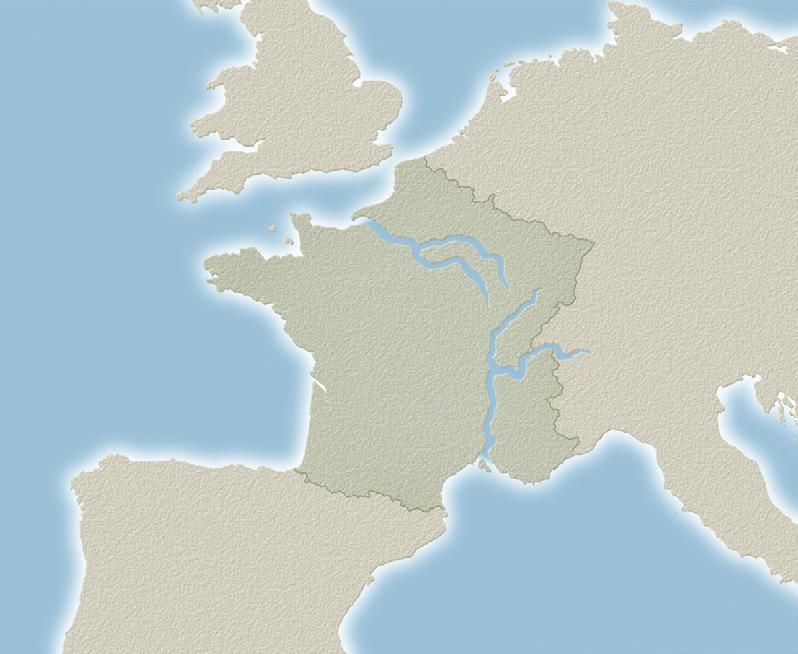


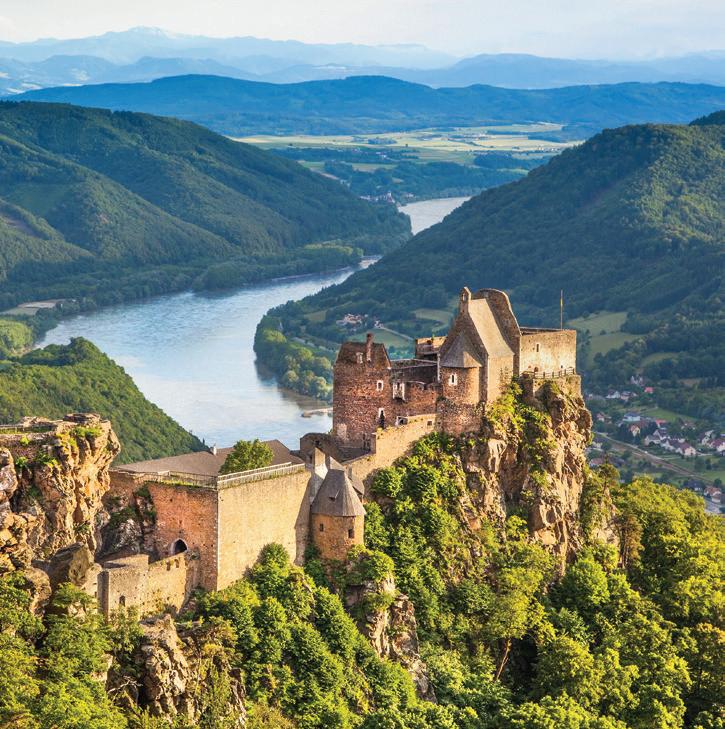

Active or relaxed, you can choose to do as much or as little as you like on a Viking cruise.
7. e food is exceptional
Enjoy regional specialities and everyday classics bursting with local flavours or dine al fresco on the Aquavit Terrace – the only outdoor restaurant on the rivers of Europe.
8. Travel with people just like you
Laid-back, easy-going and sociable, that’s the Viking Way. There’s no butlers or formal nights, just a relaxed and casual ambience.
9. See more, do more, learn more
Spend longer in each port to discover more about the people, culture, history and cuisine of every destination.
10. e Wi-Fi is included
Unlimited free Wi-Fi included every day of your cruise.

Always changing (but somehow always the same), Australia’s favourite playground has plenty of new reasons to visit. By Dilvin Yasa

Forget everything you thought you knew about Kuta. Perched high above Kuta Beach at Mamaka by Ovolo is one of Bali’s most exclusive rooftop hangouts, Kuta Social Club (ovolohotels.com).
Your mission? To collapse (gracefully) into a cabana or daybed by the sleek infinity pool, enjoy a signature Reese’s Sour (a creative marriage of peanut butter and bourbon) and watch the waves roll in below as a resident DJ works magic on the decks.
Time travel (in this case, dropping in on a version of Bali of some 50 years ago) is as easy as flying 400 kilometres east to what is often called “the forgotten island” of Sumba. Dominated by undulating hills, the island is largely untouched by tourism, with the exception of a few pioneering resorts, including Nihi Sumba (hotel.qantas.com.au/nihiwatu) and Cap Karoso (capkaroso.com), a luxury eco-haven that recently opened to guests. Feel like opting out of modern life? This is the place to do it. Explore Indonesia’s spiritual and cultural heart – Indigenous art, megalithic tombs and ikat weaving – then spend long afternoons watching horses frolic on white-sand Nihiwatu Beach or taking advantage of Sumba’s pristine turquoise swim spots.
A new dining establishment 25,000 years in the making? It’s an irresistible calling card but hardly the most unusual element of The Cave by Chef Ryan Clift (thecavebali.com). Discovered in 2013 during the construction of a new villa at The Edge in Uluwatu, the ancient cave – a short buggy ride from the property’s foyer – is now home to a 22-seat restaurant serving seven- or 10-course tasting menus (plus optional wine or

cocktail pairings), with projections on the cave’s walls to admire between courses. Clift, formerly head chef of Melbourne’s Vue de Monde, was drawn to Bali for the site alone. “It was an opportunity to create a world-class restaurant underground and the inspiration was simple,” he says. “Take what Mother Nature created for you, be grateful and do her proud.” Clift reimagines the menu quarterly, with options available for vegetarians and kids, but it’s the “halftime show” that gets our tick of approval: exploration of the cave, complete with hard hat.
Officially known as Pererenan Beach, a tranquil surf enclave just a short walk from neighbouring Canggu, think of this up-and-coming village as “having your cake and eating it, too”. Lock in a stay at one of the exquisite locations dotted around the area (Ministry of Villas has a solid selection; ministryofvillas.com) and immerse yourself in the local
landscape of rice fields, temples and the dramatic black sand beach. When hunger calls, earmark Touché (Jalan Pantai Pererenan No.106; +62 813 5301 6991) for brunch and Woods (woodsbali.com) for an afternoon or evening meal.
The cocktail bar
Some bars are made for a quick, post-meal tipple but Segno Bali (Jalan Pantai Batu Bolong No.91; +62 821 1999 5288) in Canggu is a place to linger. Here, it’s a matter of melting into the butter-soft leather armchairs, browsing the cigar menu (or the Mediterraneaninspired bites from Luma restaurant downstairs) and giving your night over to the talents of master mixologist Yutaka Nakashima (of Koda, Jakarta, fame). Keen to showcase unique flavour combinations utilising locally sourced ingredients (try a Pandan Daiquiri or a Pine Needles G&T), his attention to detail can’t be faulted. Even the ice is handcrafted to control the speed with which it melts.
The cruise
Why settle on a standard cruise liner when you can glide through pristine waters aboard a luxury 15-suite yacht? Boutique small-ship company Aqua Expeditions (aquaexpeditions.com) offers itineraries in the region’s most prized destinations: Raja Ampat, Ambon and Spice Islands, and Komodo National Park. You’ll sail aboard the 30-passenger Aqua Blu – the first small ship expedition yacht to be based in the Indonesian archipelago – where the crew-to-guest ratio is almost one-on-one at full capacity. The itineraries, particularly the seven-night Bali to Komodo voyage, allow guests to explore untapped regions, says Francesco Galli Zugaro, Aqua Expeditions CEO and founder. “Whether you’re an adventurer excited to hike an active volcano, a diver longing to discover the impressive marine life of the Coral Triangle or a history enthusiast going back in time as you stroll around ancient forts, there’s something for everyone,” he says.
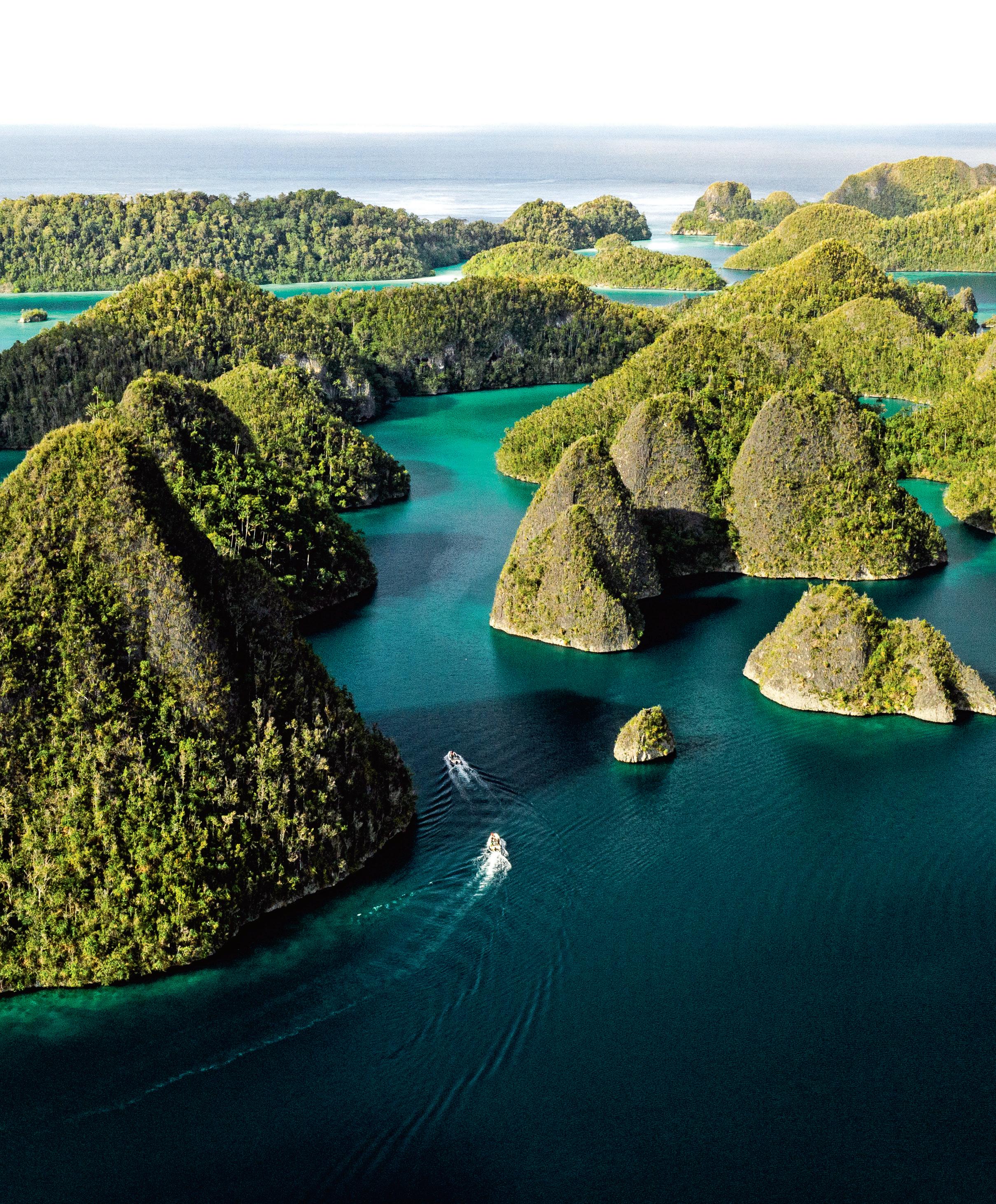

The yoga retreat
Leave traditional yoga holidays for the purists; Soulshine Bali (soulshine.com) – founded by musician Michael Franti and his wife, Sara Agah Franti – is all about wellness with a rock ’n’ roll edge. Surrounded by the rice fields of Ubud, this 33-suite wellness escape’s ethos is to be “100 per cent healthy 90 per cent of the time”, balancing yoga and sound healing sessions with live music, cocktails and… toasted marshmallows. “We believe happiness is the new healthy,” says Michael. “Whether it’s sitting around a camp fire at sunset or having a laugh over a Margarita, when you’re feeling a sense of connection, nothing is closer to being healthy or happy.”
The beach club
Melasti Beach, on the southernmost tip of the island at Ungasan, is no stranger to a beach club but White Rock Beach Club (whiterockbali.com) could be its most impressive yet. Carved into the limestone
cliffs and positioned to make the most of the sunset, the 7500-square-metre club offers an extensive selection of spaces to unwind, from lagoon beds and VIP cabanas to executive suites that allow private groups to murder rock and pop classics on a karaoke machine (or perhaps even just admire the view). A restaurant, rooftop lounge and pool with swim-up bar complete your ultimate day out.
Tuesdays with live music, Saturdays with a resident DJ or calm and collected on Sundays: no matter when you turn up to Shelter Pererenan (shelterbali.com), from the same culinary family as Seminyak darling Shelter Café, you can expect a vibe. “We’re booked solid every night and there’s a setting for everyone, from the bar area where you can experience the aromas and buzz of our open kitchen to a more intimate table in the garden,” says co-owner and head chef Stephen Moore – formerly of Sydney’s Rockpool
and two-hatted The Bridge Room. Specialising in contemporary Middle Eastern and Mediterranean flavours, dishes are cooked over charcoal or in the wood oven. Expect a little trouble making your choice – just ask Moore. “My favourites are chickpeas, hamachi, burrata, octopus, eggplant, scallops, chermoula chicken, barramundi, pork loin and the rib eye.”
Glittering ocean views will always have their place but little can compare to Anantara Ubud Bali Resort (anantara. com), a tropical paradise amid the lush jungle ravines and rice terraces of the region. Slated to open next month, the property offers guests a choice of 66 spacious rooms and pool villas (plus, 15 Anantara-branded residences for those who want something a little more long-term), a multitude of dining options, a spa, the chain’s beloved kids’ club and, of course, close proximity to Ubud’s temples and shrines.



Abraham-Louis Breguet was one of the most influential inventors in watch history and his legacy is still alive and ticking.
The word “genius” has become so diluted it’s almost devoid of real meaning. Yet AbrahamLouis Breguet is a man genuinely worthy of the title. Born in Neuchâtel, Switzerland, in 1747, Breguet opened his maison in 1775 in Paris, where his many innovations would go on to shape the watchmaking world, to the point that he’s now referred to as “the Leonardo da Vinci of horology”.
For starters, Breguet is widely credited with inventing the wristwatch itself, in 1810. Working on a commission from the Queen of Naples, he contrived a thin, oval timepiece that could be fastened to the wrist by a bracelet made from hair and golden thread. But his innovations didn’t stop there. He also dreamed up an oscillating weight “à secousses”, which responded to the wearer’s movements and wound the watch, the first gravity-defying tourbillon and the first minute-repeater gong, which audibly sounded the time. Breguet designed his watches to last and pioneered the first horological shockabsorption system, with the invention of a “pare-chute” that mounted the most delicate parts of a movement at the end of a spring. As the story goes, Breguet unveiled this technology at a party by hurling his timepiece to the floor, before passing the still-ticking marvel around a crowd of amazed onlookers.
Early in his career, Breguet moved away from the lavish ornamentation that adorned watches of the time to develop his own, more considered design language, including his signature watch hands. “Breguet hands”, as they’ve become known, are characterised by their hollowed-out “moon tip” circles that culminate in pointed nibs and make their position easier to read. Breguet hands have subsequently been used by a number of other international watch brands.
Breguet also understood that watches are ultimately tactile items that can be elevated with different textures and forms. The brand’s caseband fluting, in which a series of fine grooves are etched into the side of the case, is an example of one of its calling cards. Another of its signatures is guilloché, a technique in which delicate patterns are engraved on a watch dial using a manual lathe. This intricate embellishment is precise to onetenth of a millimetre, can vary from chequered designs to undulating waves and serves to reduce reflection while increasing legibility. Two further identifying details reinforce the authenticity of each Breguet watch – every dial is stamped with a unique production number and etched with a “secret signature” that’s only visible in certain light.



Choose from a rose-gold case with a brown alligator leather strap or a white-gold case with a midnight-blue alligator leather strap. Both watches are priced at $66,000.
Breguet’s reputation is founded on both style and substance. These dual qualities are clearly on show in the Classique Calendrier 7337. The watch’s off-centre dial provides a stage for those famous Breguet hands, while the face of the timepiece is hand-engraved with a very fine Clous de Paris hobnail guilloché pattern that contrasts with the circular barleycorn texture of the outer dial. Flip the watch over to discover further decorative flair with the
in-house Breguet calibre 502 – a self-winding movement fitted with a silicon balance spring and a 45-hour power reserve – replete with Côtes de Genève striping and chamfered edges on the bridges.
Further detail enriches the moon-phase complication at 12 o’clock. Here, the handhammered moon sits in a sky coated with a deep-blue lacquer and dotted with tiny stars. Date and day displays bring reassuring balance to the dial with symmetrical positioning at two and 10 o’clock. While there’s much to take in, every detail is given the space
to breathe within the 39-millimetre case, which, at just 9.95 millimetres thick, will slide under a tailored cuff with ease.
Learn more at breguet.com

This craft distillery is bottling the essence of the nation – and collecting an impressive list of accolades along the way.
Championing Australian ingredients like lavender from Kangaroo Island, finger limes from Queensland and sunset frangipani from the Northern Territory has helped Australian Distilling Co. produce some of the world’s best spirits. A unique approach combined with a rich history is key to the brand’s success story.
The craft distillery was founded in South Australia in 2018 by Michael Hickinbotham, continuing a family tradition of premium wineand spirit-making started by his grandfather, Alan Robb Hickinbotham, that goes back to 1936.
“Australia is at the heart of everything we do,” says Michael. “Our range of artisan, smallbatch distilled spirits embody the flavour and character of key destinations, with our distillers producing in the locations that inspired them.”
Australian Distilling Co. is the country’s most awarded distillery, having received more than 230 globally recognised awards, including Platinum Best of Class for its Adelaide Gin, Platinum for its Sydney Gin and Bondi Gin and Double Gold for its flagship Australian Distilling Co. Gin at the prestigious consumerjudged 2022 International SIP Awards.
The company has expanded at rapid speed, with satellite distilleries across the country. The brand is set to reach new heights with its first distillery door opening to the public in the heart of Bondi later this year, serving an impressive portfolio of 18 spirits, including the newly launched Australian Distilling Co. Blood Orange Gin and consumer favourite Australian Distilling Co. Rhapsody Ruby Gin.
Sip an award-winning South Australian bouquet
The South Australian flagship distillery is home to Adelaide Gin, the world’s best gin, having taken out top honours at the 2022 International SIP Awards. Enhanced with the flavours of the state, the delicate floral profile of Kangaroo Island lavender forms a base that is built up with juniper and coriander, making for a nip best served neat over ice.
Mix up a Bondi-inspired taste sensation
The refreshingly sophisticated Bondi Gin captures the energy of Australia’s most
famous beach with notes of blood orange, vanilla and lemon tea tree combined with a juniper base. A classic gin and tonic made over plenty of ice is a good choice to bring out the bright botanicals of this spirit. Garnish with a dried fig for a sticky, slightly bitter accompaniment.
The citrussy lift in Sydney Gin epitomises the vibrancy of Australia’s biggest city. Lime, lemon and orange peel all come together with a hit of native lemon myrtle to give this classic gin a bright and bold profile. Sydney Gin oozes glamour and confidence and is best served on the rocks with a slice of fresh orange.
To find out more about the Australian Distilling Co.’s story, visit australiandistillingco.com.au


Historically, big-name chefs haven’t found happy homes in Australia’s hotel restaurants. We’ve never had a Gordon Ramsay type heading up our version of Claridge’s, nor a chef like José Andrés, who helms the brilliant Bazaar at the Waldorf Astoria Washington DC. And we certainly don’t have the heritage of an Auguste Escoffier, who almost single-handedly invented the art of hotel fine-dining at the Savoy in London in the 1890s.
But all of a sudden, Australian hotels – new and existing – seem to have received the memo. “They’re realising that they haven’t been great at operating top restaurants,” says Nick Hildebrandt, who along with his Bentley Group partner Brent Savage opened Brasserie 1930 inside Sydney’s freshly minted Capella hotel (capellahotels.com) in March. “It’s becoming more common for hoteliers to seek assistance from people like us – specialist restaurateurs.” And that means punters are likely to head to a hotel for dinner, regardless of whether or not they’re checking in.
Colourful chain Ovolo (ovolohotels.com) was quick off the mark. In 2018, the brand inherited Sean McConnell as head chef of Monster Kitchen and Bar after taking over what was Hotel Hotel in Canberra. Then in 2021, Shannon Martinez came on board to make veg sexy at Lona Misa, inside Melbourne’s Ovolo South Yarra. She’s now also overseeing the plant-based menu at Alibi Bar & Dining inside Ovolo Woolloomooloo in Sydney, where her clever and crowd-pleasing creations include a vegan cacio e pepe

With a host of hot chefs taking over, Australian hotel restaurants are levelling up.
and a “more Sydney vibe”, lighter-style paella. She says a hotel partnership offers a different way to work that can be a plus for both parties. “It’s collaborative. You need to work closely with all teams – from designers to the sommelier and events teams. This was an easy process with Ovolo, as they share my values and commitment to food.”
Michael Greenlaw, who once rattled the pans at Melbourne’s Vue de Monde, agrees. He’s now heading up Atria (atriadining. com.au) at the new Ritz-Carlton in Melbourne alongside another big name, culinary advisor Mark Best. Greenlaw says he’s had to add a few “hotel-y” things to his skillset, such as breakfasts for in-house guests and what he promises will be a very talked-about club sandwich – a non-negotiable in any world-class property. But like Martinez and Hildebrandt, he insists the Ritz-Carlton team trusts him to steer the ship.
A passionate free diver, Greenlaw has filled the menu with fresh Victorian seafood, including Port Phillip Bay scallops, pulled straight from the waters you can see from a table at the 80th floor restaurant. He consults the seven-season First Nations calendar as a seasonality guide and has brought in local ceramicists Cone 11 to create crockery.
So are we entering Australia’s golden age of hotel restaurants? “The restaurant industry is all about renewal and this is one part of the cycle,” says Best. “It’s a really exciting time.”




Other big-name chefs reimagining room service
Kiln at Ace Hotel Sydney
The energy at the 257-room Ace is palpable the moment you step through the doors – from the chatter-packed lobby to the buzz at 18th-floor restaurant Kiln (kilnsydney.com), led by ex-ACME chef Mitch Orr. His infamous Jatz cracker snack is polarising – how very Sydney to pay for a supermarket biscuit! – but genuinely delicious. Orr also does marvellous things with vegetables, especially marinated and coal-kissed mushrooms, while the drinks list is overseen by harbour city favourite Mike Bennie. On a nice day, the terrace roof opens up to the sparkling cityscape.
“The Conti” is the newest and swankiest hotel to open on Victoria’s Mornington Peninsula, about 90 minutes south of Melbourne. Its most upscale restaurant, Audrey’s (the continentalsorrento.com.au), is the work of Scott Pickett – the man behind Smith St Bistrot, Chancery Lane and Matilda (itself a hotel restaurant, attached to United Places in Melbourne). The seafood-focused menu is complemented by a cracking wine list from head sommelier Andrew Murch.
This gleaming property (crownsydney.com.au) has a showstopper restaurant to suit any taste: Woodcut for
fire-cooked proteins, Nobu for world-famous Cali-Japanese fusion and a’Mare for classic Italian. But the Crown’s jewel is Oncore, led by London star Clare Smyth. At this white-liveried, special-occasion stunner, the cooking is refined British using Australian ingredients and the views take in every landmark on the harbour.
Since closing much-loved Biota Dining in the NSW Southern Highlands, chef James Viles has bounced around a bit but has now found a home heading up the food at Park Hyatt Sydney (diningroom.com.au). Viles doesn’t cut corners when it

comes to sourcing the best ingredients (some he forages himself) and the team here make vinegars and cook over coals – not things you see every day in a hotel restaurant.
When Marriott brought its first Luxury Collection property to Australia – inside a grand 19th-century sandstone building with a clever modern extension in Hobart – installing a luxury-level chef in the restaurant’s kitchen was essential. Enter Massimo Mele, who was commissioned to lead the food offering at Peppina (peppinarestaurant.com), the Italian-Tasmanian eatery that’s loved as much by locals as hotel guests. Pasta is a big player here
but the woodfired proteins are equally on point and the wine list, by sommelier Michael Fisher, is just as exciting.
Garum and Settimo at The Westin, Perth and Brisbane
Following the success of Garum (garum.com.au), Guy Grossi’s Roman osteria at The Westin in Perth, the Melbourne superchef has opened Settimo (settimo. com.au) at the Westin’s Brisbane outpost. The restaurant takes its cues from a different part of the boot, one that fits the Queensland lifestyle: the Amalfi Coast. Grossi’s menu is fresh and seafood-centric, with a seaside-chic vibe. Antipasti, pasta al limone and an Aperol Spritz? You’d be forgiven for thinking you were in Positano.

A favourite childhood comfort food gets a grown-up cheffy twist and becomes an instant success.
When Kent Nhan was building the menu at his then yet-to-open Canberra restaurant, XO (xo-restaurant.com.au), one of the first things he did was bring fellow co-owner and executive chef Anand Kumar “AK” Ramakrishna round to meet his mum, Kim Hoang Nguyen. “It was a Sunday at about 7am and she cooked one of my favourite childhood dishes for us: a sauce of chicken mince, XO sauce and sautéed veg and udon noodles with a fried egg, fried shallots and baby spinach on top, all mixed together.”
As Ramakrishna watched, he had a light-bulb moment. “Your mum basically makes a European ragu with an Asian spin on it,” he told Nhan.
Ramakrishna played with the concept, adding shaoxing wine to up the “Asian” factor and a celery, onion and carrot sofrito to push things more Italian. He swapped the fried egg for a 60-degree egg to make the yolk more consistently silken so it coats every bit of the dish as it’s combined. And the shallots and spinach made
way for crispy chicken skin “to enhance the umami”, says Nhan. They tried it and loved it but there was one person whose opinion mattered most: Mum. They needn’t have worried. “From the day she came into XO and let AK cook his interpretation of her original dish, she’s never made her version again!” says Nhan.
It’s proven an enormous hit with the restaurant’s clientele as well. Ramakrishna says it’s a rare day that a table doesn’t order at least one serve of Asian Bolognese. They’ve even experimented with taking it off the menu – an Asian gnocchi made with white radish cake instead of potato subbed in during Lunar New Year – but demand for the bolognese has never ceased.
“It’s what made XO us,” says Nhan of the classic. “The staff silver-serve it, they crack and mix the egg at the table. It’s an experience. But for me the best bit is that AK took my mother’s recipe and made it modern. And to see diners from all backgrounds and cultures enjoy it is such a blessing.”















Best beachside dining
Rick Shores
So close to the glare of the ocean you might need sunglasses, this Burleigh stalwart is as consistent as the waves. The umbrella-shaded patio keeps things casual, with the deservedly famous Moreton Bay bug roll on high rotation. But the serious smarts of the pan-Asian menu are best revealed in the sleek dining room. Lobster dumplings and char sui pork are standouts or choose the nine-dish set menu and ask the sommelier to match your wines.
3/43 Goodwin Terrace, Burleigh Heads; (07) 5630 6611; rickshores.com.au
Best resort dining
T’ang Court
Five-star hotel newcomer The Langham has arrived bearing gifts, including this Gold Coast spin-off of the hotel’s three-Michelin-starred Cantonese restaurant in Hong Kong. Abstract pieces by Australian-Chinese artist Lindy Lee pop against a neutral background – the perfect setting for a menu that celebrates premium produce, from caviar-topped abalone to prawn-stuffed crab claws or the crisp-skinned delight of 14-day dry aged Peking duck.
38 Old Burleigh Road, Surfers Paradise; (07) 5638 8888; langhamhotels.com
Best bistro Labart
The lo-fi alternative to the Goldie’s dining glitz, this unpretentious yet chic bistro is one of the region’s most celebrated. Alex Munoz Labart mans the charcoal grill, his signature barbecued king prawns in prawn butter emblematic of his approach to premium produce. Set-menu dinners star the likes of Wagyu rump with bread sauce and duck fat potato while weekend lunch includes a laidback à la carte option.
8 West Street, Burleigh Heads; (07) 5576 3498; restaurantlabart.com
Best crowd-pleaser
Burleigh Pavilion
Après-beach there’s no better spot than “The Pav”, a sprawling indoor-outdoor beach bar and restaurant overlooking the blue expanse of Burleigh. An Insta-ready crowd poses beneath festoon lighting with Aperol Spritz and chilli salt-rimmed Margaritas, while the peckish feast on fish and chips, woodfired pizza and burgers. From Thursdays to Sundays, revellers toast the sun going down to the tunes of a live DJ.
3A/43 Goodwin Terrace, Burleigh Heads; (07) 5661 9050; burleighpavilion.com
Best wine bar Paloma
With its snappy wine list, classic cocktails and a simple snacky menu of just-shucked oysters, chargrilled seafood or a beautifully caramelised onion tart, the little sibling of restaurant Labart is a star in its own right. On buzzing James Street, its choice of seats in the footpath sunshine or amid the Mid-Century good looks of the petite dining room collude to give this no-bookings pitstop major pulling power.
1/12 James Street, Burleigh Heads; palomawinebar.com
Best coffee Elk Espresso
Greenery softens the industrial design and a mural of the namesake deer adorns the wall at this trendy spot. The house blend shares the limelight with guest roasters from across Australia; choose between classic espresso, filter or cold brew. Stick around for a bottomless brunch fuelled by strawberry lime Mimosas and the signature panna cotta with granola or order your hit to go and head to the golden sands nearby.
Shop 44, The Oasis, Old Burleigh Road, Broadbeach; elkespresso.net
Come for the glittering coastline, stay for your fill of Moreton Bay bug rolls, caviar-topped abalone and a topnotch bottomless brunch.
Best fancy lunch Miss Moneypenny’s
Clear your calendar for lunch at this glamorous Broadbeach haunt, where a terracotta bar, undulating timber ceiling feature and breezy coastal vibe are the cool backdrop to a seafood-centric menu. Kingfish ceviche comes with pickled jalapeño and jewels of pomegranate, while the caviar and champagne option gives all the reason you need to go the full Onassis.
50 Surf Parade, Broadbeach; (07) 5655 0785; missmoneypennysbroadbeach.com
Best Japanese Etsu Izakaya
Hiding improbably behind a pair of barn doors on the highway (look for the glowing lantern out front), this buzzing Japanese-style pub announces its irreverence with a mix of traditional murals, neon and street art. Take a seat at the long concrete bar for a night of sake and snacking from a menu that pleases all comers with sushi and sashimi, salt-flecked edamame, tempura and offerings from the robata grill.
2440 Gold Coast Highway, Mermaid Beach; (07) 5526 0944; etsu.com.au
Best Italian Orzo
Carbs are king at the aptly named Orzo, where pasta is made in-house daily and swings from lamb ragù ravioli topped with fried fennel fronds to supple ribbons of linguini tangled around fat king prawns. Putting the smart into casual, the peach-pastel dining room is a place to linger over taleggio-stuffed fried green olives, Wagyu carpaccio with a salty flutter of bottarga and classic tiramisu, while the punchy wine list also demands attention.
1N-02, The Oracle, 12 Charles Ave, Broadbeach; (07) 5570 3476; orzorestaurant.com.au

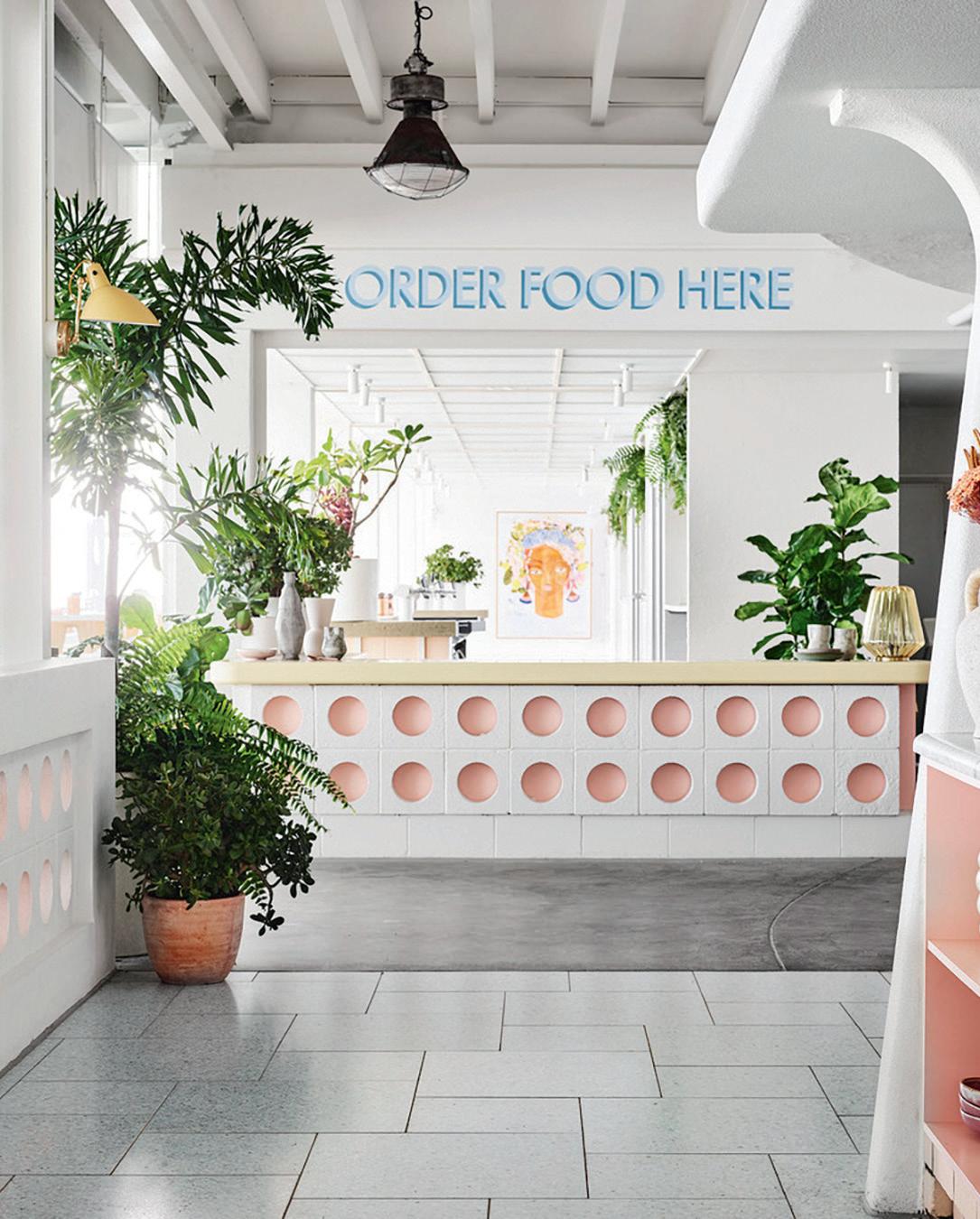



Seghesio Langhe Nebbiolo DOC
La familia Seghesio has been farming vines since 1964 with 11 hectares organically certified. Pristine aromas of violet and boysenberry herald a gently enticing palate and a tell-tale tannin grip.
Piedmont, Italy / 2021 / $60
Poderi Colla Roncaglie Barbaresco DOCG
Although firmly anchored in Barbaresco, the Colla family’s 27 hectares encompass Barolo, too. The Roncaglie cru laps up the sun, delivering a wine of style, with exotic perfumes, spicy fruit and mouth-coating tannins.
Piedmont, Italy / 2019 / $160
What’s in a name? Quite a lot when it comes to this luxe red.
Bricco Giubellini
There’s a lot of talk about Barolo – is it a grape variety? No, it’s a stellar red wine from the Piedmont region. It’s made from nebbiolo, like its equally revered sibling, Barbaresco. The twin appellations are near Alba. So, the wines are made from nebbiolo yet the variety isn’t on the label? It’s similar to the French labelling of Sancerre (made with sauvignon blanc) and Chablis, which is chardonnay. Barolo and Barbaresco are rated as DOCG (Denominazione di Origine Controllata e Garantita), the top level in the hierarchy of Italian wine. Wines labelled Nebbiolo d’Alba DOC or Langhe Nebbiolo DOC come from vineyards planted across the region. What does a Barolo taste like? Nebbiolo has perfumes of rose and violet with a whiff of star anise. Bright raspberry and cherry flavours predominate, with fresh truffle in the background. For all its gentle flavours, it’s surprisingly firm. Think pinot noir with a tannin punch. What differentiates Barolo from Barbaresco? Barolo is higher and a tad cooler, with about 2000 hectares under vine compared to Barbaresco’s 578. Barolo can be bolder, with Barbaresco more perfumed. Does Barolo have a perfect food match? Wild boar ragù, mushroom risotto with a shave of (white) Alba truffle. Duck, quail and other game dishes go well, too. What does it cost? Prices start at about $100 and soar up to $1200 for a single-vineyard Gaja Barbaresco. Varietal nebbiolo is much better value. You’ll pay over $50 for wines from benchmark producers such as Vietti, Massolino, Ceretto, Bruno Giacosa, Pio Cesare and G.D. Vajra.
Comune di Monforte Barolo DOCG
Bricco Giubellini is the highest vineyard in Monforte and (at 0.33 hectare) the smallest site. Expect maraschino cherry and orange peel aromas, a palate of plum and loganberry, and a long finish.
Piedmont, Italy / 2018 / $128
Conterno Fantino Sorì Ginestra Barolo DOCG
Viticulturist Claudio Conterno teamed up with winemaker Guido Fantino in 1982. From a single plot in Monforte, their Sori Ginestra smells of tuberose and dark cherry. Pumice-like tannins frame the succulent yet penetrating flavours.
Piedmont, Italy / 2018 / $312


Rum cocktails, mussels laksa and fougasse you can’t put down – if wine is all you know about this region, it’s time to dig a little deeper.
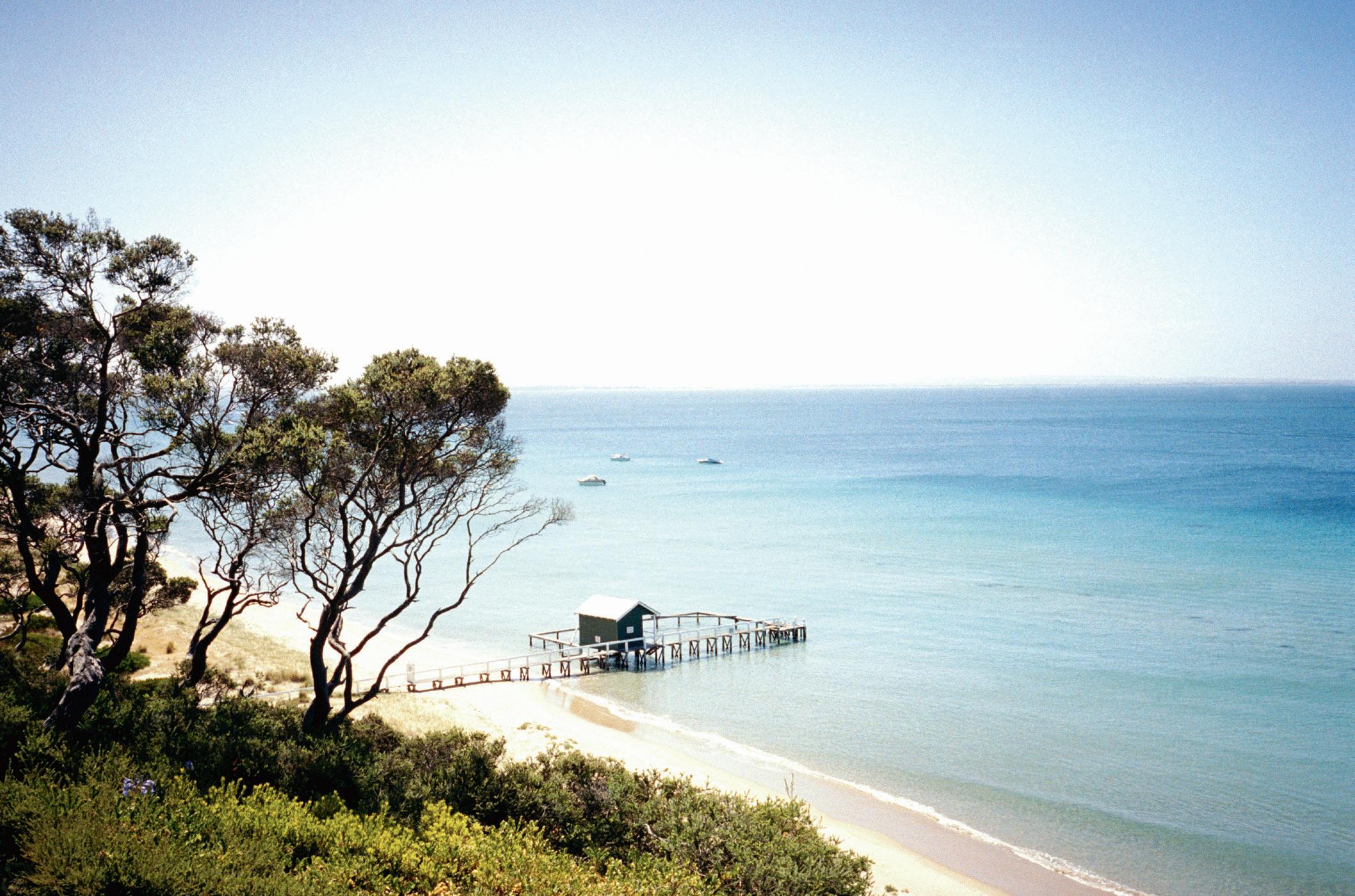
“It’s the people here who make this area special. They have so much passion for food and wine,” says Josep Espuga, culinary director of vineyard and dining destination Pt. Leo Estate (ptleoestate.com.au) in the bayside town of Merricks on the Mornington Peninsula, about 90 minutes south of Melbourne’s CBD. Well, it takes one to know one. Espuga, who originally hails from Spain’s Catalonia, has worked in Michelin-starred restaurants around the world and arrived in this popular wine region a little over two years ago to oversee Pt. Leo Estate’s Laura and Pt. Leo restaurants, as well as its Wine Terrace. Here, he gets to meet the people behind the produce – and that produce, which lands in his kitchens to be spun into critically lauded dishes, is stellar. “Olive oil, zucchini, zucchini flowers, crayfish, snapper, dairy, mushrooms, truffles, sea urchin… For a chef to be in a place where you can get such a big variety of ingredients is impressive.” Here’s where Espuga dines when he’s not on the tools.

Tuerong Farm
For the fougasse
“I’m a massive fan of bread and Tuerong Farm (tuerongfarm. com.au) in Tuerong is a great place to find it. Jason Cotter runs the farm and has up to several hundred different types of wheat planted. Last year, he opened a bakery and the bread is exceptional. I really like the baguettes and the fougasse. When you start, you can’t stop; you just go through the whole thing. What’s so special about Tuerong is that Jason farms for quality, nutrition and flavour.”
Flinders Mussels
For the shellfish
“Harry [Michael Harris] is a local legend. He has a mussels farm in Flinders and harvests in the first half of the year. While he’s harvesting, he has a food truck called the Flinders Conchilia (flindersmussels.com.au) at the foreshore. It’s very popular around here. He does two recipes that he’s been making for years and he’s not changing: mussels in Napoli sauce and mussels laksa. Flinders is famous because it has weedy sea dragons. They’re really easy to see just with snorkeling gear. Going to Flinders on a day off, having some of Harry’s mussels and a beer and seeing weedy sea dragons is quite dreamy.”
For the produce
“A lot of people know Torello Farm (torellofarm.com.au) in Dromana – it’s an institution down here. They sell produce

from Five Tails Farm, which is right behind Torello, and started operating last year; this summer was the first harvest. They also sell a lot of produce made on the Peninsula – like Cape Schanck olive oil, which we use at Laura, and truffle products from Red Hill Truffles, who we work very closely with as well. It’s a really good spot to stop and buy a lot of things from around the area.”
Jimmy Rum
For the rum cocktails
“This is a local rum distillery (jimmyrum.com.au) in an industrial estate in Dromana that ticks all the boxes. They take a lot of pride in what they do and it’s a really fun place

to go for a tasting or cocktails. I have two favourites – the Navy, which has roasted banana notes, and the Barbados, which is a dark rum with oaky notes.
I’ll order any cocktail made with those. They also do snacky food to share, like arancini, chicken skewers and a flatbread that’s served with hummus, pomegranate, mint and fetta.”
Bistro Elba
For the steak tartare
“A small bistro in Sorrento (bistroelba.com.au), this place is open until late so it’s very hospo-friendly. It’s quite moody at night with candles, they always have oysters and the chef does a beautiful steak tartare, plus there’s a great wine list that keeps changing. It’s close to the beach so in summer I’ll go in the daytime, have something to eat, a drink and jump in the water.”

Journey to the remote reaches of Antarctica on a transformative, hybridpowered expedition, leaving behind a minimal footprint.
Nothing prepares you for a visit to Antarctica. With glaciers fracturing down ice-covered mountains, penguins sliding along frozen beaches and icebergs the size of city blocks bobbing past your cabin window, it’s a place that offers a special kind of awe.
As a passenger on Hurtigruten’s 12-day Highlights of Antarctica expedition, you’ll experience the ideal taste of the Frozen Continent aboard one of two hybrid-powered vessels: MS Fridtjof Nansen or MS Roald Amundsen MS Fridtjof Nansen is the newest addition to Hurtigruten’s eight-strong expedition fleet and won the World’s Most Sustainable Ship award in 2021. On board, the guest cabins embody considered Scandinavian design through blond timber finishes matched with polar-hued bedding
and soft touches. This sleek design language continues through all areas of the cruiser, including the Explorer lounge and bar, which is the perfect spot to sip a glass of red while reflecting on the day’s sights.
The world-class vessel features three restaurants on board – Lindstrøm, Fredheim and Aune – catering to casual and fine-dining experiences, inspired by Norwegian and Nordic traditions. Spot breaching humpback whales while you work up a sweat in the fitness centre sauna or soak in the outdoor hot tubs and gaze up at giant petrels gliding overhead.
After beginning your adventure in buzzing Buenos Aires, you’ll fly to Ushuaia at the southern tip of Argentina to embark on your journey across the Drake Passage. When you reach Antarctica, you’ll join the passionate

expedition team for five action-packed days of landings and cruises on Zodiac boats. You may even get a chance to go kayaking among icebergs topped with penguins or dozing leopard seals on one of the optional activities offered. And don’t forget to pack your swimwear to take part in the ultimate Antarctic immersion – the infamous polar plunge.
Back on board, expand your knowledge of this globally important ecosystem at the science centre, where the expedition team hosts a varied program of lectures and workshops. Here, you can also learn how to
give back to the environment through a range of citizen-science projects, including tracking whales and monitoring seabirds.
Throughout the short expedition season (November to March) in Antarctica, there are natural spectacles to admire, such as the snow-cloaked landscape in November, when penguin rookeries swell. Welcome humpback, fin and other whale species in December and January, followed by heart-racing whalewatching between February and March, when baby penguins can also be seen taking their own first polar plunge.

Embark on your next adventure with Hurtigruten knowing you’re exploring with the leader in sustainable expedition travel. As a green pioneer, the tourer was not only the first major cruise ship company to ban single-use plastics and heavy-fuel oil but also the first to harness cutting-edge ship design and advanced battery technology to launch the world’s first battery powered hybrid expedition cruise ship, the MS Roald Amundsen, in 2019. Today, its state-of-the-art smallship expedition fleet features three hybrid vessels, including the MS Fridtjof Nansen, recently awarded the world’s safest and most sustainable cruise ship.
Hurtigruten’s sustainability initiatives don’t end with the ship itself – passengers are invited to partake in citizen-science programs, with every vessel fitted with a science centre where researchers host fascinating workshops, activities and lectures on every expedition. With more than 20 years of experience touring in Antarctic waters, Hurtigruten offers a range of in-depth itineraries up to 25 days in duration through Patagonia, The Falkland Islands, South Georgia and the Chilean coast.
Experience the magic on the Highlights of Antarctica Hurtigruten Cruise. You’ll win a trip for two, valued at $27,670 per cabin twin share. The prize includes accommodation for the duration of the voyage, all meals and return international airfares to Argentina.
To enter, visit qantas.com/hurtigrutencruise Terms and conditions apply.
Start exploring at hurtigruten.com.au
w h e r e l u x u r y s e r v i c e . . . m e e t s e c o f r i e n d l y


E l y s i a n R e t r e a t i s t h e m o s t s e c l u d e d a l l - i n c l u s i v e , a d u l t
o n l y , 1 0 0 % s o l a r p o w e r e d i s l a n d r e t r e a t i n t h e
W h i t s u n d a y s . . . w i t h t h r e e
g o u r m e t m e a l s d a i l y i n c l u d e d i n y o u r r o o m r a t e !
E l y s i a n i s n e s t l e d i n t o a p r i v a t e c o v e o n L o n g I s l a n d , s u r r o u n d e d b y n a t i o n a l p a r k r a i n f o r e s t a n d t h e t u r q u o i s e w a t e r s o f t h e G r e a t B a r r i e r R e e f A b l i s s f u l e s c a p e f r o m t h e h u s t l e a n d b u s t l e o f e v e r y - d a y l i f e w h e r e o u r s m a l l p e r s o n a b l e t
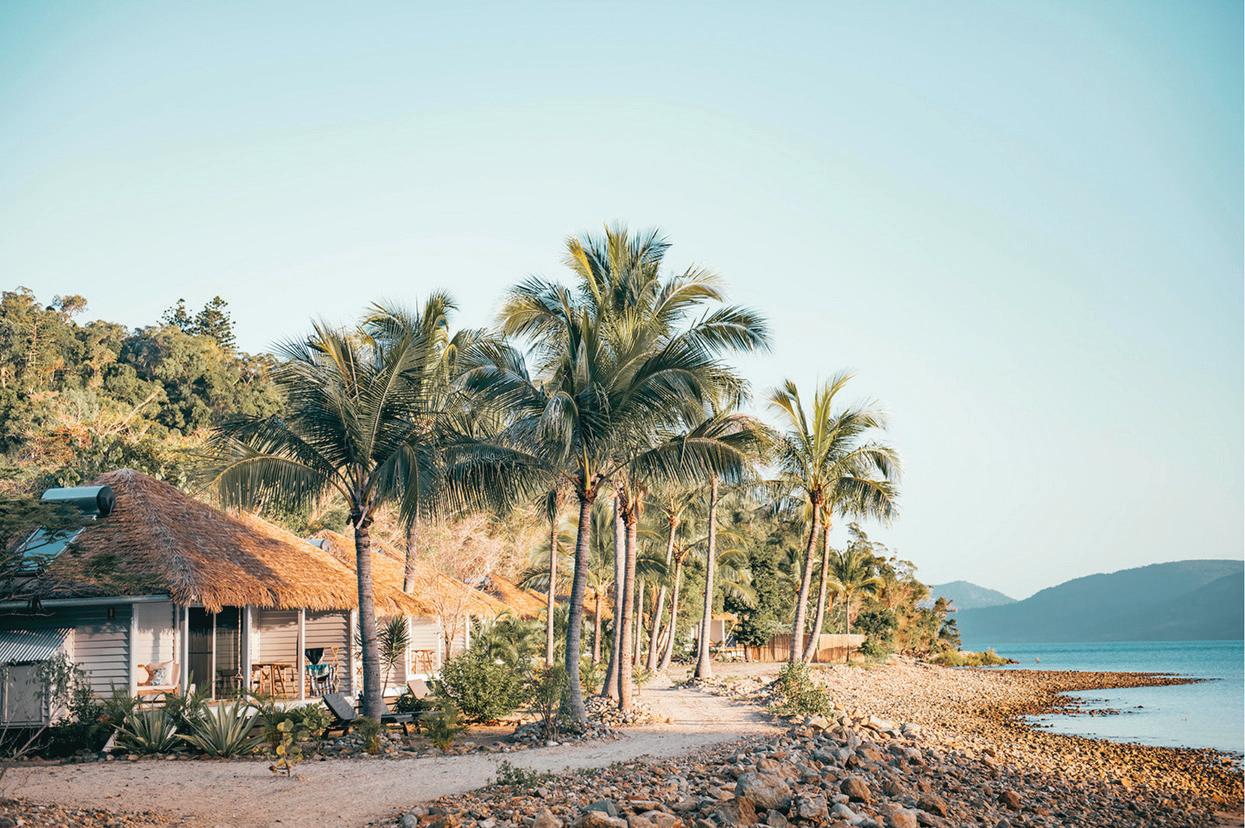

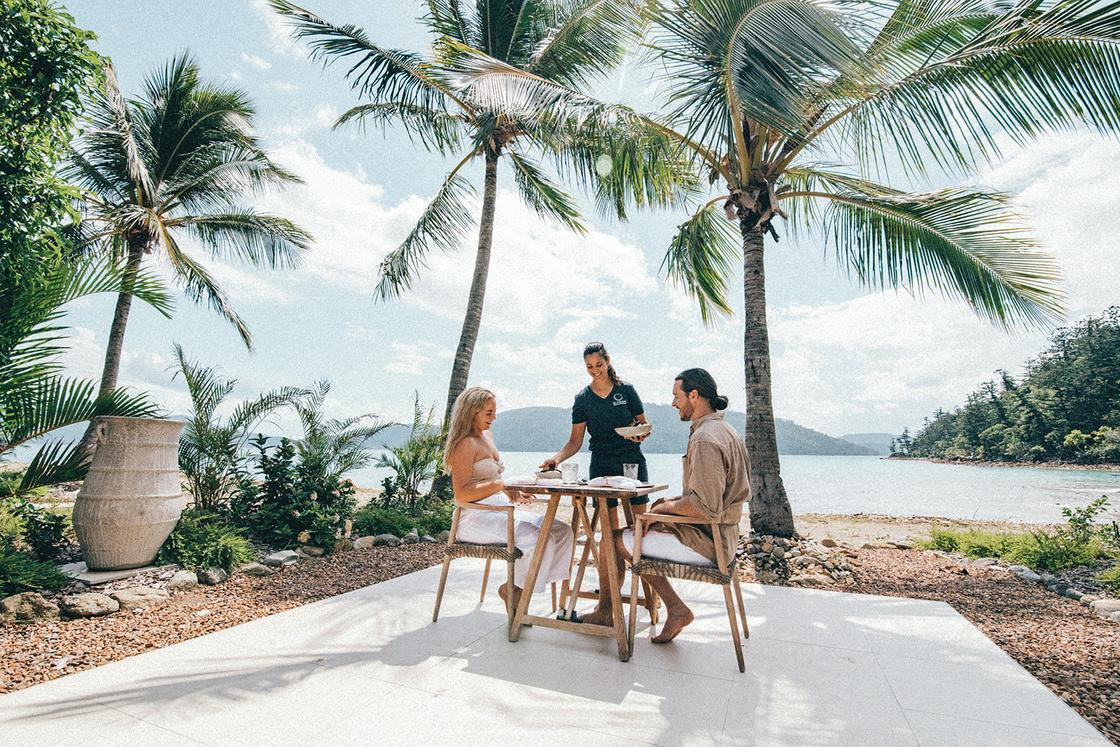
C h o o s e t o s t a r t y o u r m o r n i n g w i t h a y o g a c l a s s b y t h e p o o l d e c k , s n o r k e l l i n g i n t h e b a y f o o t s t e p s f r o m y o u r v i l l a o r t a k e o u t a k a y a k f o r a p a d d l e a r o u n d t h e h e a d l a n d I f y o u w i s h t o i m m e r s e y o u r s e l f i n t h e s u r r o u n d i n g n a t u r e f u r t h e r , t h e r e a r e w a l k s t h r o u g h t h e t r o p i c a l r a i n f o r e s t T o u r s c a n b e e a s i l y a r r a n g e d , f r o m b e a c h p i c n i c s o n u n t o u c h e d w h i t e s a n d t o a d r e n a l i n e p a c k e d j e t - s k i t o u r s
T h e p a m p e r i n g c o n t i n u e s w i t h E l y s i a n ' s A y u r v e d a i n s p i r e d s p a I n d u l g e y o u r m i n d a n d y o u r b o d y w i t h a s u b l i m e t r e a t m e n t a n d f l o a t o f f i n t o y o u r o w n p e a c e f u l p l a c e T h e p r i s t i n e b e a u t y o f E l y s i a n E c o R e t r e a t i s t h e e p i t o m e o f b a r e f o o t l u x u r y
V i s i t e l y s i a n r e t r e a t c o m a u a n d s e e f o r y o u r s e l f . E L Y S I A N E C O R E T R E A T

70 Go off-grid at five chic retreats surrounded by natural wonders
Standing unobtrusively on farms, remote stretches of coastline and mountain foothills, these luxurious stays are designed for immersion in nature. By Alex Greig
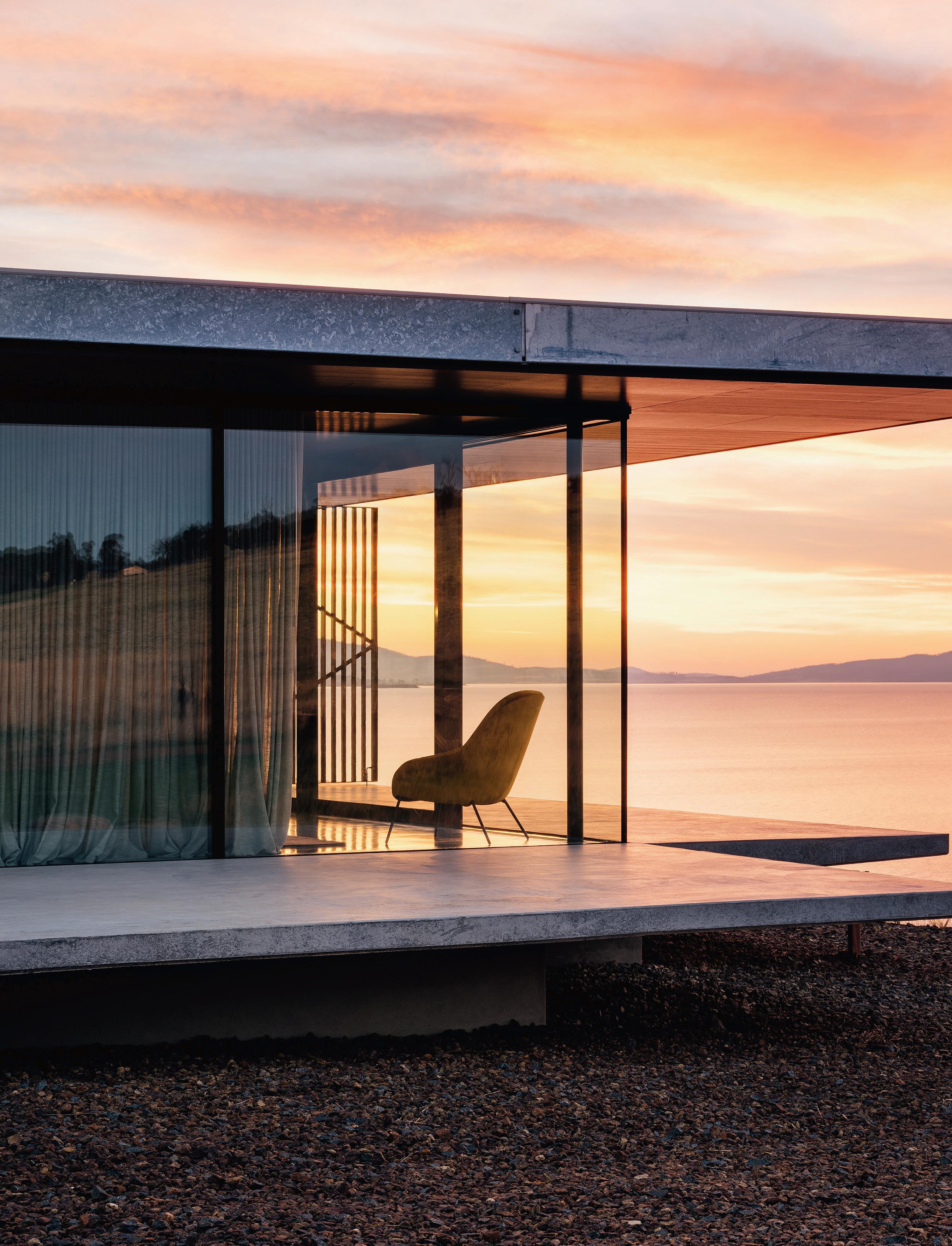

The Point Drive for 20 minutes from the centre of most major cities and you’ll likely enter suburbia. Journey 20 minutes from Hobart and you’ll arrive at The Point (thepointtasmania.com) on Paredarerme Country, a concrete, glass and steel house hunkered down into a hill, its sunny cobbled courtyard sheltered from the wind. Twenty hectares of boulder-strewn farmland spreads out behind it and the curve of Frederick Henry Bay neatly hems the front.
Architect Stuart Tanner was asked to create a dwelling that doesn’t compete with the beauty of its surroundings but sits easily within it. The result is remarkable in its austerity and barely
impacts the flow of the landscape. Inside, fine finishes, elegant décor and that grand view make the property languidly luxurious, the kind of place to be padded around barefoot, all the better to feel the polished concrete and heated tiles.
The three-bedroom house is angled towards the sea, close enough that the briney air regularly breathes new life into the space. The bluestone fireplaces, merino throws from Tassie’s oldest working textile mill and crockery by a local potter enhance the sense of place.
You could use The Point as a base to explore the area but stay away too long and you’ll miss the show: sunrise over the water, clouds rolling in before a storm and the fiery sunset dipping behind kunanyi (Mount Wellington). Bring in some fresh oysters from the Tasmanian Oyster Co. (tasmanianoyster co.com.au), light the outdoor firepit and pour some sparkling. Best to stay in.



The four wood and stone suites at Chalets at Blackheath are on Dharug and Gundungurra Country (hotel.qantas. com.au/chaletsatblackheath) and set in a million hectares of national park. The only interruptions here? The crack of wood burning in the fireplace and the trill of a silvereye outside. Yet, for all this solitude, Blackheath and its restaurants are just 10 minutes away and Sydney is an hour-and-a-half.
None of this is by chance, of course. Owner and general manager Angela O’Connell had been envisaging this property for 20 years, after she saw something that most wouldn’t in almost seven hectares of fire-devastated Blue Mountains bushland. “It’s hard to explain but there was an energy here that couldn’t be denied.”
Though the almost mystical biophilic feeling that O’Connell talks about is hard to define, it’s made Chalets a go-to for those with their own big questions to ask. Romance isn’t a prerequisite but it helps. After all, the chalets have two rain heads in a limestone shower “cave”, two fluffy Frette robes and two armchairs to be pulled close to the stone hearth as night descends.
You’ll feel that energy, too, seeing the land’s animals and plants thriving. It’s even in the breakfast served in The Library, replete with native ingredients – think avocado toast with bush tomato and finger lime. It’s especially striking in the misty early morning from the deck, steaming teacup in hand.
Mystical biophilia? We get it now.
Eyre.Way

So suited are Eyre.Way’s two tiny houses (eyreway. com) on Barngarla Country to their location that they seem all of a piece. Yet these off-grid dwellings weren’t built at Sleaford Bay, 22 kilometres southwest of Port Lincoln – they were placed here and can be moved, leaving nothing behind.
Both structures follow the same floor plan, with a king-sized bed and mezzanine double bed, but their individual features create separate entities. Yambara, less than 100 metres from private Sandy Point Beach, has a white exterior complemented by
a bright interior; whales gliding through Sleaford Bay are the only distraction. Maldhi (pictured), situated within a rocky gully leading down to the water, blends in due to its sepia-toned façade, slate-coloured fixtures and wood panelling.
Each house features handcrafted crockery and light fixtures, linen bedding and Koala mattresses. There are luxe details such as double showers and electric blinds. Beyond the glass doors are an expansive deck and a firepit.
Co-owner Amanda Hogg used her own caravan holidays to remote coastal parts of South Australia as inspiration for the abodes – and the experience they conjure is uncomplicated. What remains when everyday distractions are removed? The chance to focus on one thing at a time, whether that’s flickering flames in the firepit or the words in a book.

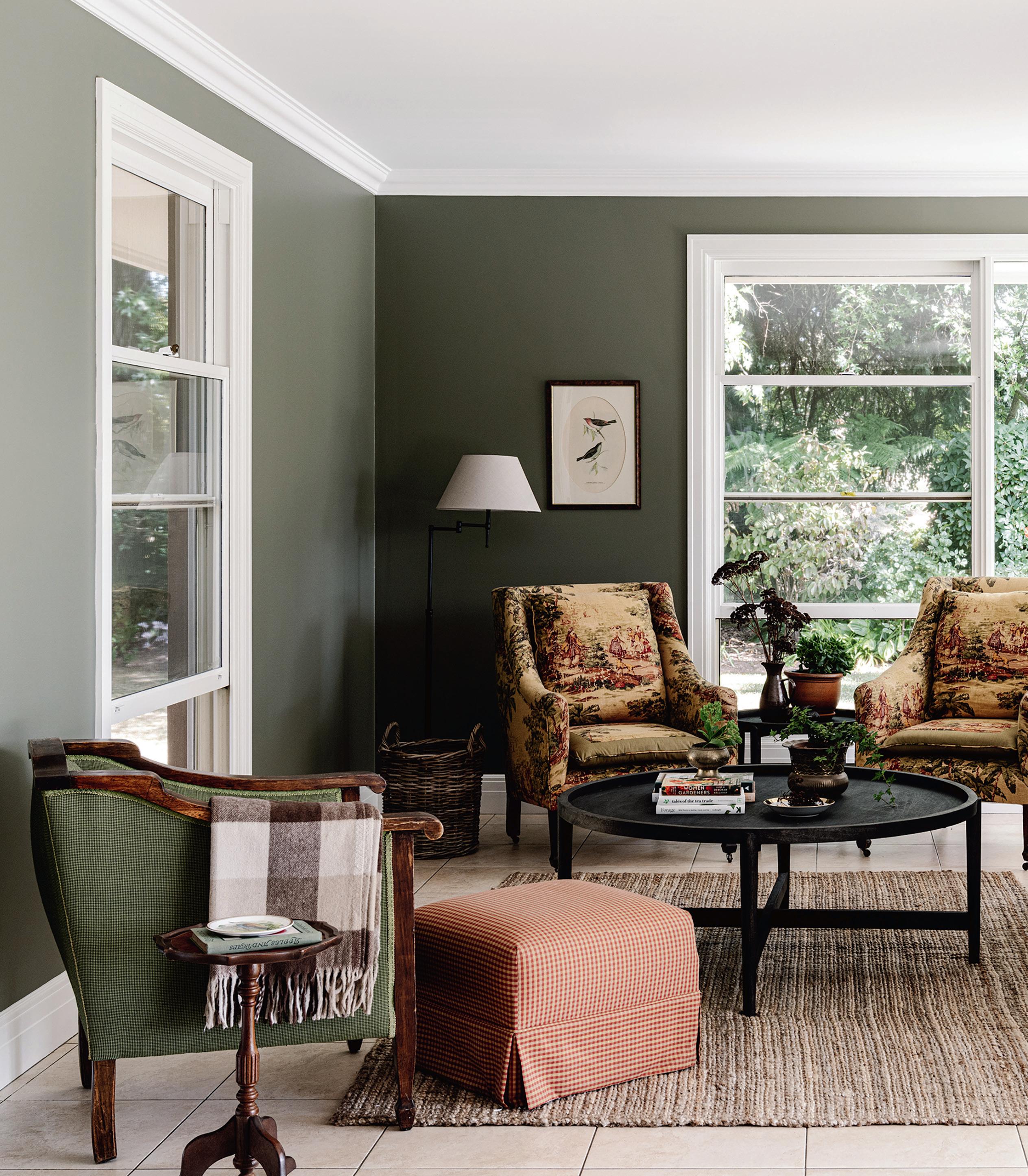

In the foothills of Victoria’s High Country, two-and-a-half hours drive north-east of Melbourne on Taungurung Country, Mansfield was once a pit stop on the way to the ski fields. Today, the town is a destination in itself. From here, you can cast a line in the Delatite River, gallop through wildflower-strewn pastures (this is The Man From Snowy River territory), explore local wineries or pedal the Great Victorian Rail Trail.
And when cheeks are rosy from mountain air and legs begin to tire, there’s Riverfield Homestead (riverfield homestead.com.au) to settle into. The restored farmhouse dates to the 1970s but has an altogether old-world quality, complemented by the winding drive and an established ornamental garden.
The property is the work of motherand-daughter team Jenee and Madeleine Roberts-Thomson, who have a cattle farm nearby. “We fell in love with Riverfield’s gardens, with oaks dating back more than 100 years, the sweeping vistas of the Delatite and the mountain views from the property,” says Madeleine.
Inspired by the grazier history of the High Country and Riverfield’s Englishstyle garden, the pair created an elegant rural escape. With its five bedrooms sleeping 10, four bathrooms, two 10-seat dining tables, a pair of sitting areas and wraparound verandahs, it’s made for memorable group getaways.
Each day should begin with a walk around the garden and end ensconced in cosy linens with a novel or design book selected from the thoughtful stack placed beside each bed. In between? Well, that’s entirely up to you.
Growing up in Jindabyne in the rugged Snowy Mountains of southern NSW, carpenter and draftsman Dan Kroenert and horticulturalist-turned-builder Mitch Forbes spent weekends fishing, swimming in rivers and camping. There was a sense of wild freedom in their magnificent bush playground.
The old school mates want to share this feeling of glorious isolation with guests at Crafters Cabin (crafters.net.au), a stone and wood house they built on five hectares of land two hours from Canberra, beneath Mount Crackenback on Ngarigo Country.
The off-grid cabin makes the most of its northerly aspect with stone-clad thermal-mass walls to retain heat while solar panels and rainwater tanks take care of the rest. It’s all soothing neutrals and clean lines inside: reclaimed timber, marble and stone, with locally made soft furnishings and crockery. Artworks reflect the alpine views of pale gums and dusky foliage. Kangaroos, emus, echidnas and occasional deer can be spotted through the floor-to-ceiling windows. “We hope the cabin moves guests beyond relaxation and into the realms of creativity,” says Forbes.
Who knows where inspiration might hit? In the outdoor wooden hot-tub or by the fireplace? Certainly after hiking the Porcupine Walk in Perisher National Park and warming up with a schnapps at Wildbrumby distillery (wildbrumby. com) before returning to Crafters at dusk to sit under the stars and watch the wildlife emerge from the bush.









A week glamping by a river in New Zealand’s North Island wilderness is a chance for


relaxation, reflection – and adventure. By
Ben Mack
 Photography by Nicola Easterby
Photography by Nicola Easterby
 The Te Awa Glamping tent (above right) and its outdoor tub
AKL Qantas flies from Sydney, Melbourne and Brisbane to
The Te Awa Glamping tent (above right) and its outdoor tub
AKL Qantas flies from Sydney, Melbourne and Brisbane to

BBetween us, I don’t know what to expect. The thick, fern-filled forests, narrow valleys, dramatic gorges and rolling fields of the King Country area, in the west of the North Island, were hit by a major cyclone (a rare event in New Zealand) just a week before I’m due to visit. And the singular, family-run glamping site is on the banks of the Whanganui River – one of the country’s longest.
But as I round a grassy bluff and come upon Te Awa Glamping (teawaglamping.co.nz) near Taumarunui, less than four hours by
car south of Auckland, there’s little evidence of cyclone damage. On one side of the road are flower-filled meadows. On the other, the river twists like a ribbon. Trailing into the distance are hills resembling enormous mounds of green clay. Except for a small white house that sits atop one peak, there are no other human-made structures in sight. Puffy clouds float in a blue sky, the whole scene like a watercolour painting. I breathe in and am amazed by how fresh the air is. Not a car or machine can be heard.
My home for five days is the private luxury tent at Te Awa (“the river” in te reo Māori). Safari in style, it’s solar-powered, with a high canvas ceiling and outer walls with mesh panels to allow nature’s sights, sounds and smells in. There are smooth timber floors, stone sinks, a piping-hot indoor shower, an



outdoor bath and fireplace, and a king-size bed piled high with warm quilts. One thing it doesn’t have is wi-fi. But I usually find myself too busy to miss it.
Paddling the Whanganui River with five other people in a canoe on a warm and sunny day trip run by Owhango Adventures (canoewhanganuiriver.com) turns out to be a thrilling way to see more of the region. The cool water is glass-smooth in some spots, while in others it pushes us past trees and little waterfalls at a heart-pounding pace – requiring everyone to dig deep to avoid hitting rocks.
“The awa [river] brings people together,” says Owhango Adventures’ Dianah Ngarongo, who begins our trip with a karakia [Māori prayer]. “Out on it, we’re all equals.”
As we near Te Awa, about a third of the way through the adventure, it makes sense to stop and invite everyone in for the fresh sourdough bread, nuts, hokey-pokey chocolate clusters and jar of bright pink and white marshmallows I found waiting for me on the table when I first arrived. We’re all equal when it comes to snacking.
After the six-hour excursion, about three of which are actually spent on the water, night invites reflection. A mosaic of stars is overhead, so many that I can see the spiral of the Milky Way. There’s a choir, too, composed of the rushing river, birds and chirping cicadas. They’re sometimes joined by the moo of a cow from just across the river. My dinner is Moroccan chicken and couscous, which I ordered ahead of my visit and warm up in the kitchenette. I’d grabbed the rest of my provisions in Taumarunui, about a 15-minute drive away.
One can also reflect while travelling at fast speeds, I discover on day three when riding on railroad tracks in a modified golf cart driven by Tomma, my guide from Forgotten World Adventures
(forgottenworldadventures.co.nz). “The wild here, it really does feel like a forgotten world,” he tells me.
I can smell honeysuckle and fresh flowers, and the cicadas drown out even the metallic clicking of the cart as we travel about 20 kilometres per hour. We glide through curtains of misty rain and forests well on their way to swallowing the tracks, across fields filled with cows, fluffy white sheep and even the occasional bearded, horned goat.
The full-day experience, with a stop for coffee, tea and biscuits at a 1930s timber hall in the small community of Matiere, ends by passing through a 1.5 kilometre-long tunnel. Dark in the middle, it’s also very damp.
But it’s warm and dry inside my tent – handy, since every morning I wake to dew covering the ground outside. Misty tendrils of fog wrap around the trees and hills then hang in the air like smoke.
There’s still plenty of fog on the morning I tackle the Timber Trail, a cycling route built along an old railway line. “It’s like tramping on wheels but you can go faster, deeper into nature,” says trail manager Lynley Twyman, who accompanies me up and down hills, across suspension bridges over deep gorges, through a cave-like tunnel and rainforests where bushes claw at our legs.
We begin early in the morning at Piropiro, about an hour’s drive from Te Awa, our gear provided by Epic Cycle Adventures (thetimbertrail.nz). I’m not comfortable on bikes but thanks to Twyman’s encouragement, I cover about 30 kilometres – even surviving a heavy rainstorm that leaves me soaked through. “One of the great things about being in the wild is it’s a real adventure and can push you out of your comfort zone,” she says.
I reflect again that evening, on the back deck at Te Awa, in a bath filled with bubbles, steam rising into the cool air. Turns out the wild can push you back into your comfort zone, too.
















Dine at the hottest new Italian restaurant
Patina (patinaedinburgh.com) is a crowd-pleaser with its sprawling bar, 260-seat restaurant, artisan bakery and event space all tucked into the business hub of Edinburgh Park (a short tram or train ride from the city centre). Carb-lovers will adore the bakery’s fluffy almond croissants and hand-rolled pastas like the pici cacio e pepe. More Italian fare made with Scottish-grown ingredients, such as braised-for-hours beef shin osso bucco, can be found at the restaurant next door, where globe pendant lighting and sleek black furnishings give life to the industrial space with live folk music that will have you settled in for the night.

Wake up in a floating hotel, sample artisan pasta and join a modern treasure hunt: experience the historic Scottish capital in new and exciting ways.
1. Ready
Did you know your Qantas Frequent Flyer card is also your prepaid Qantas Travel Money card? To activate it – or order a new one – visit qantastravelmoney.com
2. Set
View competitive exchange rates with the currency converter. Then buy up to 10 foreign currencies with easy, fee-free load options.4
Go on a quest to The World’s End Edinburgh’s Royal Mile is a labyrinth of preserved medieval architecture steeped in rich history. Now you can discover Old Town in a modern way with Go Quest Adventure, Royal Mile (goquestadventures.com). In this 3.5-hour walking tour-meets-treasure-hunt, wayfarers complete puzzles and challenges for points via an app as they discover the city’s landmarks. Start at Edinburgh Castle before wandering down the Royal Mile, past some familiar sites from the Harry Potter movies and towards famous 16thcentury pub The World’s End.

Float off to sleep on a luxury boat
Step back to the Roaring ’20s as you hop aboard the Ocean Mist Leith (hotels.qantas.com.au/ oceanmistleith): a converted minesweeper from 1919. You can now stay in one of its 17 Art-Decoinspired staterooms, cabins and berths on the Water of Leith, just three kilometres from the city centre. The floating boutique hotel is fitted with geometric-patterned carpets, dark wood panelling and rotary phones in every room. Order a Castle View Royale (champagne with caviar) in the mirrored-ceiling bar before heading out to the deck to soak up views from Edinburgh Castle to The Victoria Swing Bridge.
3. Go!
You’re ready to go. Pack your Qantas Travel Money card and use it in-store, online and at ATMs, everywhere Mastercard® is accepted.




 Photography by Hannah Puechmarin
A family weekend at Australia Zoo’s new stay delivers magic in even the smallest moments, writes Jessica Irvine.
Photography by Hannah Puechmarin
A family weekend at Australia Zoo’s new stay delivers magic in even the smallest moments, writes Jessica Irvine.

The pay-off on a holiday with kids is rarely the pay-off. Take them to the NSW South Coast for its long stretches of empty beaches or the chance to spot seals and instead watch as their tiny minds are blown away by a mega jumping castle at the local RSL. The pay-off, when it comes, is often not the one you saw coming.
As my 10-year-old daughter, five-year-old son, husband and I make the one-hour drive from Brisbane Airport to Australia Zoo (australiazoo.com.au) and its new accommodation offering, I wonder what the pay-off will be. My daughter is an avid watcher of Crikey! It’s the Irwins. She is fixated on seeing someone – anyone – from the show and I reckon the odds are in her favour, given that zoo staff are regulars on the series. Meanwhile, the lure for my son is one I’m certain the holiday can deliver on, having browsed the website for The Crocodile Hunter Lodge (thecrocodilehunterlodge.com.au): “I just want a pool.”
“Elephants can only sweat from their cuticles.” It’s a stinging 31 degrees in Beerwah, 25 minutes inland of Caloundra on Queensland’s Sunshine Coast. The driver of the bus that ferries us between lodge and zoo several times over our visit can no doubt spot a southerner. “Hot enough for ya?” he shouts as he drops us at the zoo’s front gate.
One advantage of a two-night stay at the lodge, which opened last June and has 12 one- and twobedroom self-contained cabins (three-bedroom options will follow this year), is getting unlimited access to the zoo for three days. Rather than forgoing, say, a talk at the Tiger Temple in favour of a Wildlife Warriors show, we can do it all – my daughter recording animal facts in the recycled-paper notebook she scored at the lodge – and call it a day when the heat gets the better of us.
What started in the 1970s as the Beerwah Reptile Park, at just under a hectare and the site where the late Steve Irwin met American-born Terri, today encompasses almost 300 hectares (45 of which are accessible to zoo guests) and includes a 5000-seat stadium, the Crocoseum. Visitors are reminded that, at its heart, this is a family operation with features like Robert’s Reptile House (Robert being the son of Steve and Terri), a lemur sanctuary known as Bindi’s Island (Bindi is their daughter) and a spot named for Bindi’s firstborn, Grace’s Bird Garden. But other areas of the zoo neatly reflect how the business has grown.
We head to South-East Asia to find two Sumatran elephants in their eight-hectare enclosure. Zookeeper Liz explains how the decisions we make at the shops – like checking that palm oil used in a product has been sourced sustainably – can impact the species. We’ll discover later that the chilli used in dishes at the
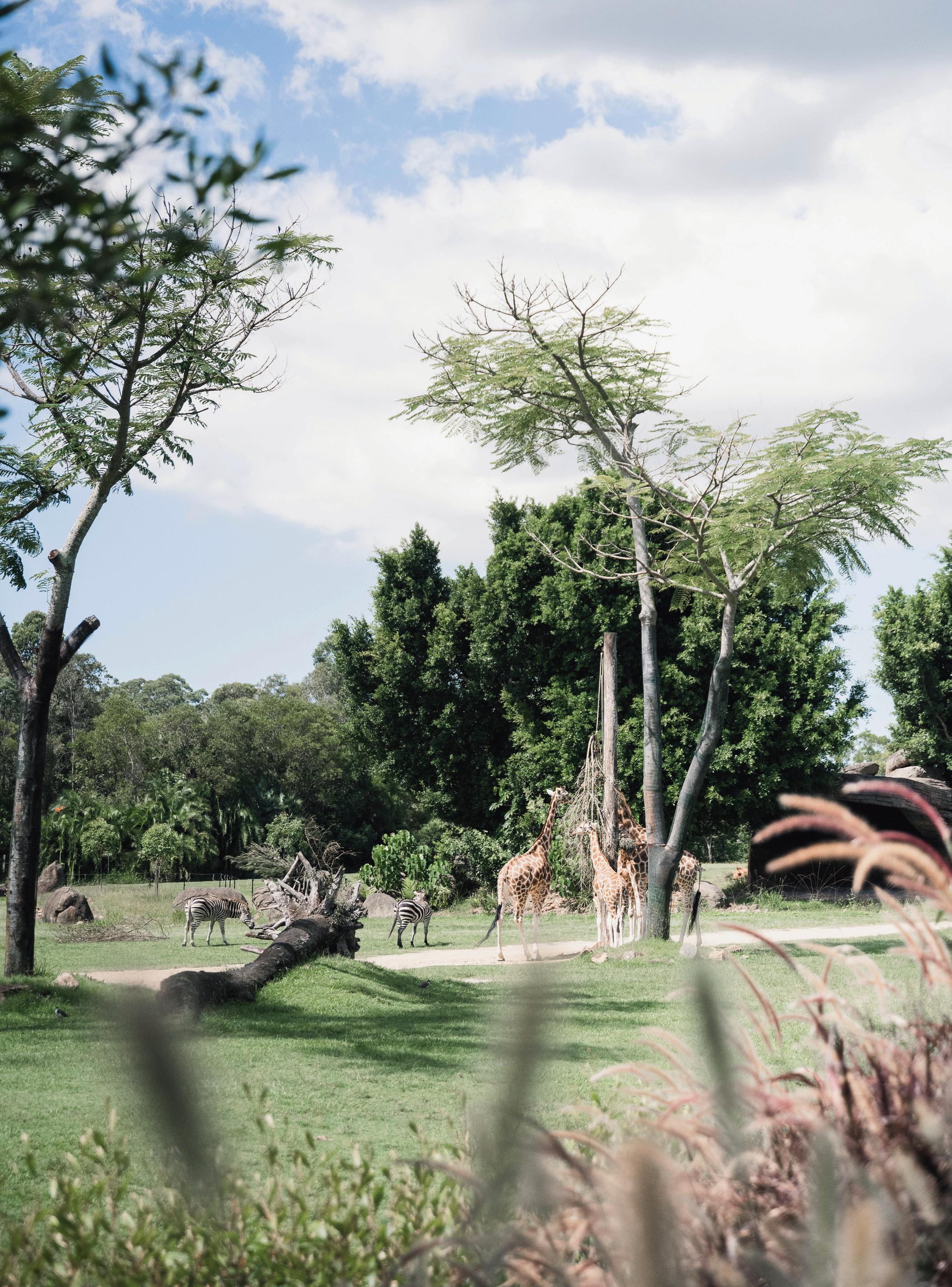


lodge’s Warrior Restaurant & Bar, as well as the edible flowers that arrive with my muesli in the morning, have been grown in this same enclosure.
Towards the end of the day, as we’re riding the bus back from Africa, my daughter gets her moment. “That’s the big boss there,” says the shuttle driver. “Luke – he’s Robert’s best mate.” (Luke Reavley is general manager of the zoo.) My daughter squeals and cranes her neck. “I know him! He’s on Crikey!”
“Koalas can hear sounds up to two kilometres away.” With my legs dangling over the edge of the lodge’s 25-metre infinity pool, I wonder if those same marsupials we learnt about today are listening to my kids squealing as they jump about. There’s another family, playing a game of Marco Polo, and a couple lying on sunlounges ordering poolside drinks. Every so often, the kids swim to the edge and look over the neighbouring paddock to count 10 grey and red kangaroos and two emus. After a day spent admiring exotic species, it strikes me that it’s our native animals that beguile them the most. These are inner-city kids – “Wildlife crossing” signs along the highway are as close as they’ve come to sightings of the animals on Australia’s coat of arms.
We make our way back to the polished grey, white and timber interiors of our cabin (some of that timber has been recycled from the original zoo) to sit in the lounge area and make plans for the next day. My daughter: “I really want to do an animal encounter.”
My son: “Can we go back to the pool with the kangaroos?”
The galley kitchen has facilities to whip up a simple meal but our evening plans include dinner at the Warrior Restaurant (which is also open to the public).
After hanging our cossies on the deck to dry, we take the road that loops between the cabins, shoes crunching on the rocky path as we head for the property’s hub – a concrete, steel and timber structure that houses reception, the restaurant, a perentie lizard and diamond python. With staff dressed in khaki, the reptiles don’t seem so out of place. My husband, a keen gardener, rattles off the plants he spies: grevillea, lemon myrtle, casuarina, Glasshouse Mountains tea tree, Queensland bottle tree. He’s cheating a little – there are plaques along the way explaining the lodge’s conservation efforts.

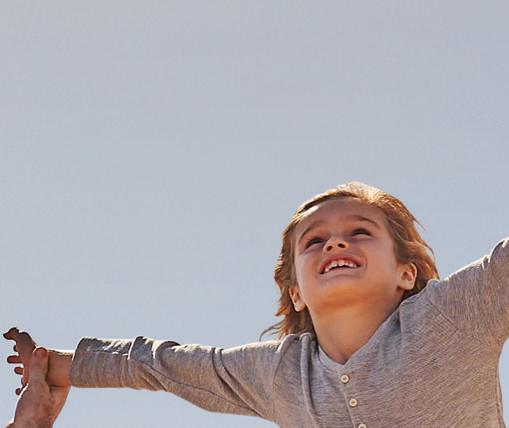






AGL’s Electric Vehicle Subscription. Changing the way you transition to electric cars. Vehicle y
We’ve invested billions of dollars in renewable energy, with more to come. And we continue to invest in wind, solar, pumped hydro, battery storage and electric vehicle charging.
We know the cost of living is a worry right now. It’s why we’re working hard to find ways to help our customers better manage their energy use to save on their energy bills.

The world is changing. And so is AGL. Join the change. Join the change


“Did you know that native bee honey can be used to treat injured sea turtles?” my daughter asks, reading one plaque before moving onto another – a picture of Steve holding a koala. She reads it aloud: “My job, my mission, the reason I’ve been put onto this planet is to save wildlife. And I thank you for comin’ with me. Yeah, let’s get ’em!” The last part she chants as she races ahead.
“Aldabra giant tortoises can recognise more than 60 faces.” While my daughter savours a Calippo from the zoo’s lolly shop, my son is darting between a waterplay area, a reptile-themed carousel ride and a massive inflatable jumping pillow, alongside other red-faced kids.
He continues his circuit of Crikey! Kids’ Corner with Dad while my daughter and I head off for the 12.30pm Totally Tortoise encounter. We’d caught the Tortoises Live! show with zookeepers Brandon and Jill (and tortoises Igloo and Goliath) earlier on the trip; now, we want a closer look. Eight people step into the enclosure with zookeeper Nathan and two Aldabra tortoises, which are only in their mid-40s but can live to 200 years. My daughter peppers Nathan with questions, notebook in hand. What do they eat? (Silverbeet and hibiscus.) What do they like? (They’ll start to sway if you scratch them along the tail end of their shell, which she does.) And finally: “Have you been on Crikey! It’s the Irwins?”
“Yep,” says Nathan, laughing. “I was in an episode with Bruce the brolga.”
“With birds, you have to build a strong bond so they don’t fly away.” The pay-off comes on the last morning. I wake to silence. There’s no movement in the cabin but it’s too early for the pool. I shuffle down the hallway and out onto the deck, where I find my two pyjama-clad kids sitting shoulder-to-shoulder at the top of the stairs, looking straight ahead, not blinking. A few metres away sit five kangaroos, one a joey, staring back. “It’s been like this for a while,” my husband says. “Who do you reckon will break first?” A kookaburra, sitting a step back from the roos, looks to be wondering the same thing. It doesn’t really matter. The kids have already won.


The Off Season arrives in Tasmania with a call to unleash something wild. Answer that call with a winter visit and you’ll find an island of other-worldly experiences.
Embrace the spirit of revelry and follow the crowd of night-time merrymakers to the Huon Valley Mid-Winter Festival (williesmiths. com.au). Watch sparks rise to mingle with the stars as you dance in the flickering light of a 15-metre blazing effigy known as Big Willie. Every year, thousands celebrate the long, dark nights of winter by toasting the old
gods with tankards of spiced cider and screaming into the night sky to scare evil spirits from the frostcovered orchards.
Feel a different kind of magic at Elsewhere Sauna (elsewheresauna. com), a traditional Finnish sauna on wheels. Warm up in a steam bath before electrifying the senses by plunging into icy Randalls Bay.
With a design inspired by the apple barns that still dot the bucolic Huon Valley, the two-bedroom Coast House (coasthousetasmania.com) sits on a private peninsula cutting into
the Huon River. Gaze out through the enormous windows and you might see dolphins in the shallows or whitebellied sea eagles, with the snowcapped peaks of Hartz Mountains National Park as a backdrop.
ONLY IN THE OFF SEASON
Go gothic at Lark Distillery’s Pontville Estate (larkdistillery.com) on Thursdays in June, when the stately homestead sets the scene for a Mid-Winter Ghost Tour that pairs warming whisky with chilling tales of the haunted estate.
As a proud Tasmanian Aboriginal man, Caleb Nichols-Mansell creates artworks that reflect his personal experiences and his connection with the countless generations who came before him.


You feel that freshness wherever you are down here – it doesn’t necessarily have to be remote or wild. When I need some time out on Country I go to pinmatik / Rocky Cape National Park, a 45-minute drive past Burnie as you head north-west. The rose quartz rock formations give it a sheltered feel even though you’re in the absolute wild. The intricate linework in my art echoes the mesmerising patterns that have been etched into the rocks by the elements over thousands of years. Going here in the Off Season sometimes feels like I’m the only person in the world. It’s pretty remote, though there are two eco lodges right on the edge of the coastline at Rocky Cape Retreat (rockycaperetreat.com.au). If you head further west to Stanley you can taste Tasmania’s freshest scallops, crayfish and oysters at Hursey Seafoods (hurseyseafoods.com.au) before climbing up the ancient volcanic plug, known as The Nut, for big views up and down the coast. On the way back to Burnie there’s a lighthouse at Table Cape where we’re putting on a show called tunapri (tendays.org.au), which will run for five weekends this winter. The immersive audiovisual lightshow will include projections onto the lighthouse of 60 artworks I created as a response to the landscape and the Tommeginer people who once called it home. As an Aboriginal man, the stories and narratives embedded in my artwork represent and connect with thousands and thousands of years of my people. The show is part of the larger Permission to Trespass festival that invites visitors into businesses and farms they wouldn’t normally have access to. I really like the provocation that poses, particularly from a First Nations perspective, because fences and gated-off properties weren’t part of our cultural or traditional practices; our land was open and it was free.”
Ange Boxall honed her mix of folk, country and pop in Melbourne, London and Nashville but her music “is more wild and raw when I’m in Tasmania – it has more gusto”.
Swansea, east coast



It’s a place where you can actually stop time a little bit. I live in an old Georgian flour-mill property near Swansea, two hours north of Hobart, and I wake up to the sounds of the birds every morning. The natural landscape here really fuels my creativity, especially in winter when you get incredibly blue skies and the days are really still and calm. That’s when I like to visit a lovely spot just south of town called Spiky Beach. You can see across the waves to the Freycinet Peninsula and there are beautiful rock formations that make it feel like a magical fairyland. As the day draws to a close, there’s nothing better than sitting under the stars with a bottle of east coast Tasmanian pinot. We’re spoiled for choice with wineries like Devil’s Corner (devilscorner.com.au), which has an incredible vista over lagoons and The Hazards mountain range. The Waterloo (waterlooswansea.com) in Swansea is a really cute place to eat; the food has a contemporary flair but it’s still very hearty. And it’s in an old motel that feels like something out of Schitt’s Creek, which really adds to the charm.”

Nestled between banks of forestclad hills and Tasmania’s sheltered east coast, about two hours from Launceston, the three Sea Stacks (seastacks.com.au) rise up like monoliths from the banks of the tranquil Denison Rivulet. But step through the heavy doors and you’ll discover a unique take on the classic Tassie shack. Enormous picture windows bring the landscape inside, while the cosiness is enhanced by the natural materials that adorn the paint- and plastic-free interiors. Take in the views while relaxing by the fire or retire upstairs to the bedroom with plush curtains of wool-lined silk. Strengthen your connection to nature by stretching your legs in
Douglas-Apsley National Park, a place of raw beauty where spectacular blue waterholes are linked by a deep gorge carved through open forests of Tasmanian blue gum and peppermint.
Head back east and the glittering waters off Denison Beach flash with turquoise every time the sun shines. Walk to the sculpted sandstone formation known as The Porches and there’s a good chance you’ll be planting the day’s first set of footprints in the powdery white sand.
With cheeks rosy from crisp winter air, salute the local fishermen as you tuck into a fresh lobster roll or steaming bowl of creamy seafood chowder at Bicheno’s Lobster Shack
(lobstershacktasmania.com.au). You can practically smell the saltwater that has seeped into the heavy timber beams at Waubs Harbour Distillery (waubsharbourwhisky.com), a former oyster hatchery making rich, oily whisky that will warm your insides.
ONLY IN THE OFF SEASON
Fend off the cold with an umami-rich shot of broth as you tour Tasman Sea Salt (tasmanseasalt.com) on the Winter Warmer Salt Sommelier experience. Then head to the cellar door of Mayfield Estate (mayfield estatetas.com.au) for paired sea-salt, food and wine tastings with views to the rugged Freycinet Peninsula.

Scientist and self-confessed “tree geek” Yoav Daniel Bar-Ness has been studying Tasmania’s eucalyptus forests for decades and he’s adamant there’s nowhere in the world like the Styx Valley, which lies just 90 minutes north-west of Hobart. As a tour guide for Giant Tree Expeditions (giant-trees. com), Bar-Ness leads small groups through an ancient landscape that has been protected from fires and logging for more than 500 years and is home to the tallest grove of flowering plants on the planet.
The majestic Eucalyptus regnans can grow up to 100 metres above the forest floor but in the winter months, the cool, damp understorey also sees an explosion of life. Train your eyes downwards and discover little blue eyeballs and purple tendrils reaching up from the forest floor, bright yellow patterns that labyrinth their way across fallen logs and bracket fungi that jut out from trunks like giant orange dinner plates.
Venture further into the dense greenery and you’ll find magical names that reflect the ethereal nature of this environment; the Tolkien Track leads past glistening tree ferns, tannin-stained creeks and some iconic giants, including the twin-trunked Fangorn, Morannon and a towering specimen known as Gandalf’s Staff.
When you emerge from the forest after a full day of walking, warm up and soothe tired muscles in one of the handmade wooden bathtubs at Truffle Lodge (trufflelodge.com), a working truffle orchard with eight roomy safari tents ranged along the upper reaches of the River Derwent. Or sign up for the Winter Wrap Up night ride (maydenabikepark.com), listening to the sounds of the rainforest as you steer a mountain bike up the twisting trail before plunging downhill through the dark, only to emerge at a roaring bonfire.
Tear up the track behind a team of huskies on an exhilarating dryland sled dash through the pretty forest around Lonnavale with Sled Dog Adventures Tasmania (sleddog adventurestasmania.com.au). Tours run from May to September.
Styx Valley, southern TasmaniaSoaring peaks and untamed rivers are the backdrop to poet and storyteller Bert Spinks’ bushwalking treks but he also finds plenty to fuel his creativity in this fascinating northern city.


Each one has something different to offer and winter is ripe for reflection and contemplation. It’s the perfect season for me to dream up my next set of stories. I grew up in northern Tasmania and one of the really special things about Launceston is that nature is never far away. You can start the Duck Reach Power Station walk from anywhere in town and as soon as you enter Cataract Gorge, you leave all sounds of traffic behind. The gorge narrows above the basin so you’re walking right on the edge of it and, after rain, the sound of the South Esk River rushing below you is all-encompassing. Or head further into Trevallyn Reserve and you can escape into the hush of the bush. It’s very atmospheric on cool winter mornings, when the steamy, smoky smell of the soil mixes with the fresh scent of gum trees and wallabies and pademelons thump through the fog. Because it’s located right at the mouth of the gorge, you can walk along the river the whole way back to Stillwater (stillwater.com.au), where there are seven beautiful rooms in a 180-year-old-flour mill. At Du Cane Brewing (ducanebrewing. com.au) you can use the giant bushwalking map painted on the wall to plan your next hike while you pore over a pun-filled menu of woodfired pizzas, like the fiery In Tents laden with soppressa, ’nduja, chilli and basil. Then kick back by the fire with a toasty stout that matches the darkness of a Tasmanian winter evening.”
Even on an island of untamed, unmapped places, the west coast is a land apart. For café owner Zara Trihey, that brooding intensity reaches a peak in the atmospheric ghost town of Linda.


The west coast pushes you out of your comfort zone and the way the scarred industrial landscape around Queenstown fades into the pristine rainforest is surreal. It’s a four-hour drive from Hobart and the last hour is along really windy roads where every turn reveals rich rainforest and spectacular hills peeking out of the fog. Then the first thing you see when you come out of that are the haunting ruins of the Royal Hotel Linda, which rise eerily out of the mist. Not long after I moved here it came up for sale so I’ve got a five-year plan to restore the building to its former glory. We run the Linda Café (instagram.com/thelindacafe) beside it, offering real food and great coffee. Linda is a literal ghost town but I call it the gateway to the west because it’s just 10 minutes from Queenstown. The locals are very proud of their mining heritage and the beautiful scenery also attracts a lot of artists. In between the galleries there’s a cosy new wine bar called Moonscape (moonscapewinebar.com.au) that has a great selection of Tasmanian craft beer and wine as well as lovely soups and tapas. The best views in town are at Penghana Bed & Breakfast (penghana.com.au). It’s run by hosts who really know the meaning of hospitality so you can start the day eating a beautiful breakfast with polished silver service and end it watching the whole town light up as the snowy top of Mt Owen glows in the last rays of the setting sun.”
Kayaking the Pieman River on a winter morning is like paddling through a dream; the mist around you filters out every sound except the drops of water falling from your paddle. Once the shroud lifts, the still, dark waters of the Pieman mirror the rainforest on its banks as you enter the unspoiled wilderness of takayna / Tarkine, two-and-a-half hours south-west of Devonport. When you arrive at a staircase reaching up from the water, it’s time to tie up your kayak and step through a portal into another world. Allow yourself to be enveloped by the forest as you follow a boardwalk between centuries-old

giants, then push through a screen of ferns to discover a startlingly beautiful waterfall cascading into a deep pool surrounded by every imaginable shade of green.
Or save your arms by exploring Australia’s greatest expanse of temperate rainforest aboard a heritage Huon pine river cruiser. Take in the sights before returning to Corinna Wilderness Village (corinna.com.au), a secluded hamlet of tin-roofed miner’s cottages and an old pub hidden in the trees, and feel your blood pressure drop by the minute as you remember life without phone reception and wi-fi. Looking for
somewhere even more private?
Head south to The Lazy Prospector (thelazyprospector.au), a lovingly restored 130-year-old barn in the former mining town of Zeehan where you can watch the sun’s rays colour the imposing peak of Mount Dundas from an outdoor swing – or just bask in the glow of a crackling wood fire in the rustic-luxe interior.
AN APP FOR THE OFF SEASON
Can’t decide on experiences to book?
Download the Discover Tasmania app (discovertasmania.com.au) for a live update of events and Off Season highlights based on your location.
Set on an idyllic 16-hectare property beside the Scamander River about two hours east of Launceston, the onebedroom Rivercabin (cntnr.com.au) offers a blissful escape from modern life. Snuggled into the dense bush, this cosy solar-powered retreat combines the moody fit-out of a boutique hotel (jet-black walls, pink bath, white baby grand) with the simple pleasures of life in the wild.
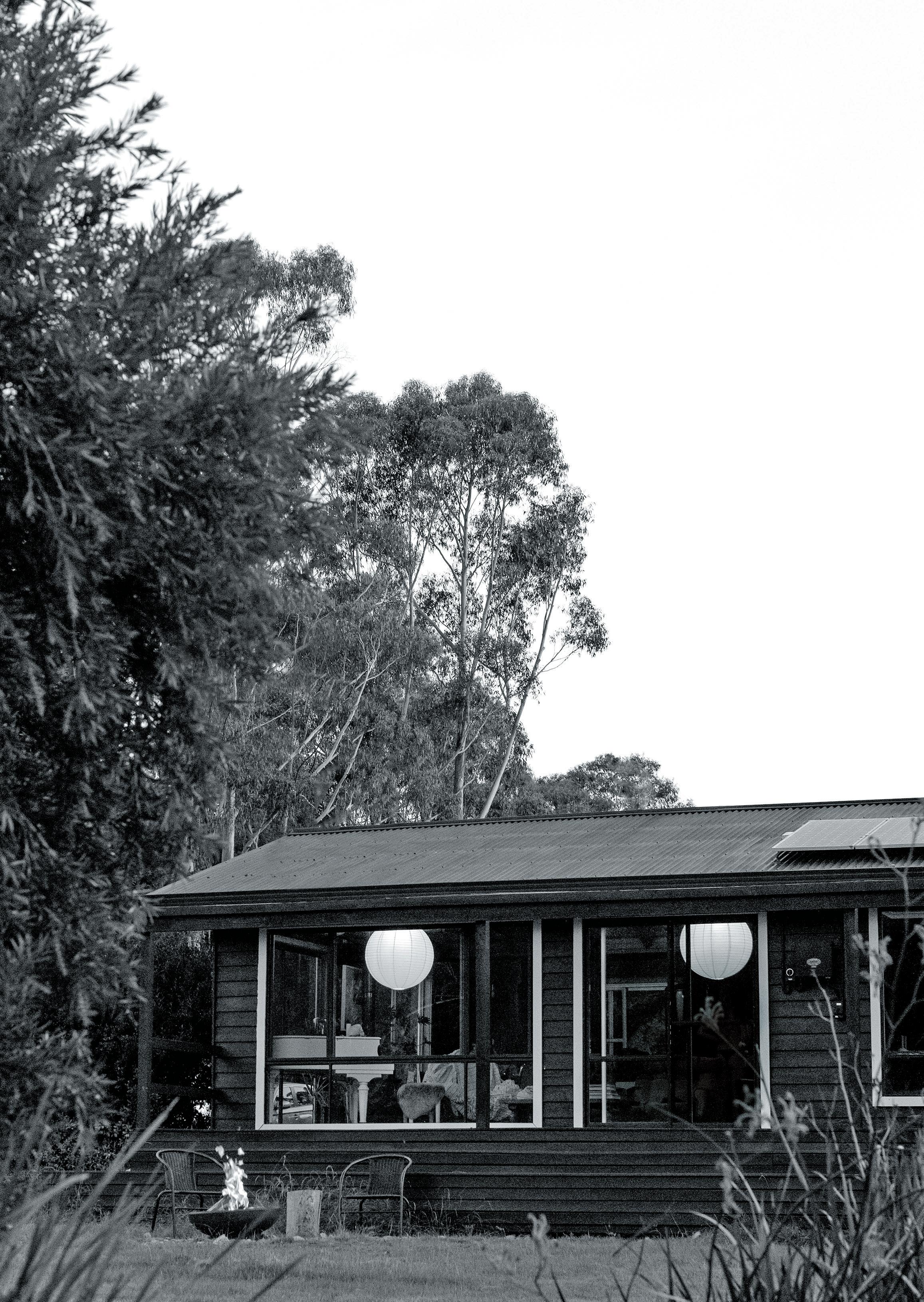
Once you check in, the only neighbours you’re likely to encounter are wallabies, echidnas and curious spotted quolls. Spend the morning tuning into the sounds of the bush as you lose yourself in a book from the in-house library, then watch the light transform the landscape every afternoon. The gums on the river’s opposite bank are bathed in a fiery glow and the river turns into a pool of molten bronze. Once the colours fade, follow the cloud of steam rising from the outdoor jacuzzi and feel your cares melt into the cool night air as you lose count of the stars above.
Come daytime, it’s a short drive to the orange boulders and peacockblue waters of the larapuna / Bay of Fires area or the 90-metre-high cascade that thunders through the rainforest at St Columba Falls. Visit during the Bay of Fires Winter Arts Festival (bayoffireswinterartsfestival. com.au) and see how local artists draw inspiration from the spectacular landscape when they open their studios in the ultimate art trail.
ONLY IN THE OFF SEASON
Winter views are perfect for an expert-led artistic retreat at Tin Dragon Trail Cottages (tindragontrailcottages. com.au) near Derby. Learn about photography or painting in an immersive three-day experience.
Scamander River, north-east coastGrowing up on the shoreline of taypalaka / Green Point taught artist Zoe Grey that nature isn’t something to be admired from afar; it’s a physical force to be experienced viscerally.
Marrawah, north-west coast
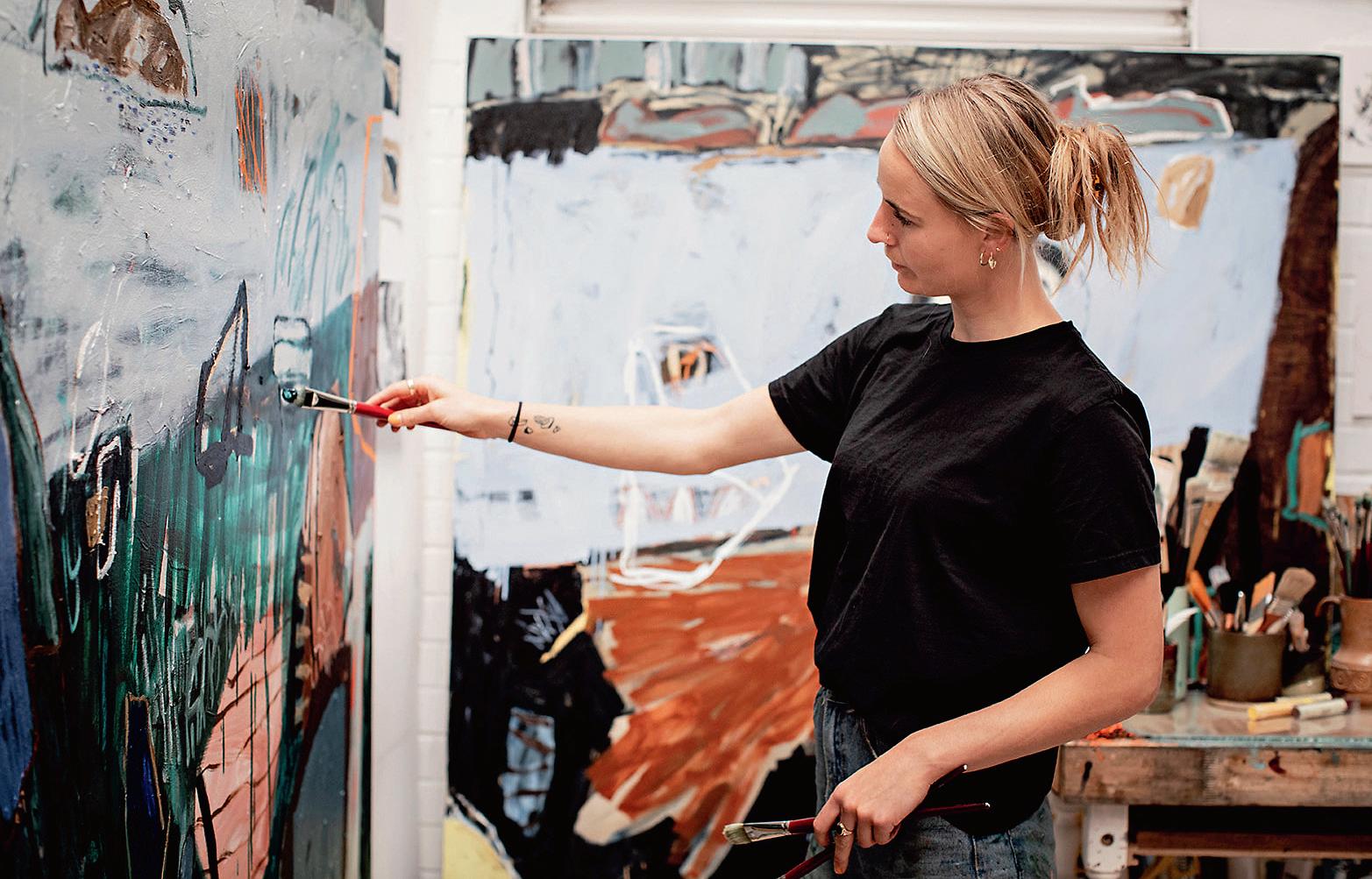

Even if you’re in a sheltered bay, you can see the giant swells rolling in and taste the salt on your lips because it’s all happening around you. My hometown of Marrawah is as far as you can drive from Hobart and still be in Tasmania so it’s quite an isolated place and the weather is notoriously wild. On a big wintry day you might look out over Ann Bay and see six-metre-high columns of white water rising between jagged rocks covered in orange lichen and a purple sky filled with sheets of sideways rain. It’s not a static landscape; it’s changing constantly and I feel forever inspired by those scenes. It’s dynamic and it’s physical and my art (instagram.com/zoe__makes) is an attempt to capture that feeling. When you’re on the edge of the Southern Ocean, you’re breathing in some of the purest air in the world and the north-west is known for having amazing seafood and beef. But my favourite dish from the Siento Fuego food truck (instagram.com/siento_fuego) is the charred cauliflower tacos – they use a lot of local ingredients so they’re always fresh and full of flavour. Eating them outside by Sisters Beach with Rocky Cape National Park on either side is pretty special. You won’t want to hurry home so settle in at Marrawah Beach Houses (instagram.com/marrawah_beach_houses), a couple of cute little family-run cottages that have an easygoing modern beach shack vibe.”


Tasmania only gets more Tasmanian in the winter.The dark gets darker. The oysters are sweeter. The whisky pours get a little longer. And like dazzled moths, we jostle around crackling bonfires. So whether you want to lose yourself in mind-bending art or a complex pinot, there’s no better time to experience the island at its wildest, weirdest and most wonderful. Just be warned. We don’t call it the Off Season for nothing.
→ Visit discovertasmania.com.au/off-season
Craving a tropical island all to yourself?

 Dilvin Yasa checks into Motu Nao Nao, an exclusive-use idyll in French Polynesia.
Dilvin Yasa checks into Motu Nao Nao, an exclusive-use idyll in French Polynesia.

“Everything here is for you alone – whether that be a moonlit cinema on the beach or private flying lessons – but it isn’t

ostentatious; think of it as a destination for those who own $100,000 watches but wouldn’t dream of wearing them here.”
Sylvain Delanchy gives quite the introduction to Motu Nao Nao (motunaonao.com), a private island retreat located a five-minute speedboat shuttle away from Raiatea, the second largest of French Polynesia’s Society Islands (itself a 45-minute flight from Papeete on Tahiti). Delanchy is residence manager at this luxury getaway, a 30-hectare gem encircled by a vivid lagoon, which opened in late 2021 with just three villas crafted by local architect Alain Fleurot.
It’s an all-inclusive offering – three-course meals, beverages, equipment such as kayaks and bicycles and one excursion each day. But it’s what you don’t find on the rate card that’s the most memorable: the chance to revel in a Crusoe-esque wilderness dominated by birdsong and the scuttle of sand crabs treating the island’s vine-twisted trails like their own Shibuya Crossing.
The main drawcard? Motu Nao Nao is exclusive-use, ensuring complete privacy at all times. “The reef surrounding the island prevents anyone else from sailing up,” says Delanchy as he shows me around my villa, which features a wooden outdoor bathtub overlooking the isle’s lush interior, generous white linen-covered

furnishings in the living room and a personal library full of rock ‘n’ roll biographies (celebrities are frequent guests).
Fine dining, happily, is a focus, with chef Wilfrid Kobylt serving up the likes of reggiano shortbread, vegetables and black truffle, uru (breadfruit) gnocchi with fern leaves, prawns and coconut milk, plus a lime cheesecake accompanied by fruit sorbet (my lunch for today). Each dish is a kaleidoscope of colour thanks to the liberal sprinkling of edible blooms that Kobylt grows in his garden and he’s on stand-by to discuss the provenance and health properties of each ingredient. “Dinner is served under the stars but breakfast and lunch I will serve you in here” – here being a dining table in the main villa overlooking the water –“to protect you from the Tahitian heat.”
Post-lunch, decisions are made to the sound of palms rustling against thatched roofs: should I enjoy one of the included activities (everything from cultural tours to pearl farm visits) or try a private flight lesson or a helicopter day trip to nearby Bora Bora (at extra charge)? While the minimum stay at Motu Nao Nao is four nights (most guests stay six), the list of experiences doesn’t get as much use as you’d think. “Most guests book activities on day one and sometimes on day two but after that, they fall into the rhythm of island life and relax,” says Delanchy. Keen to do as the











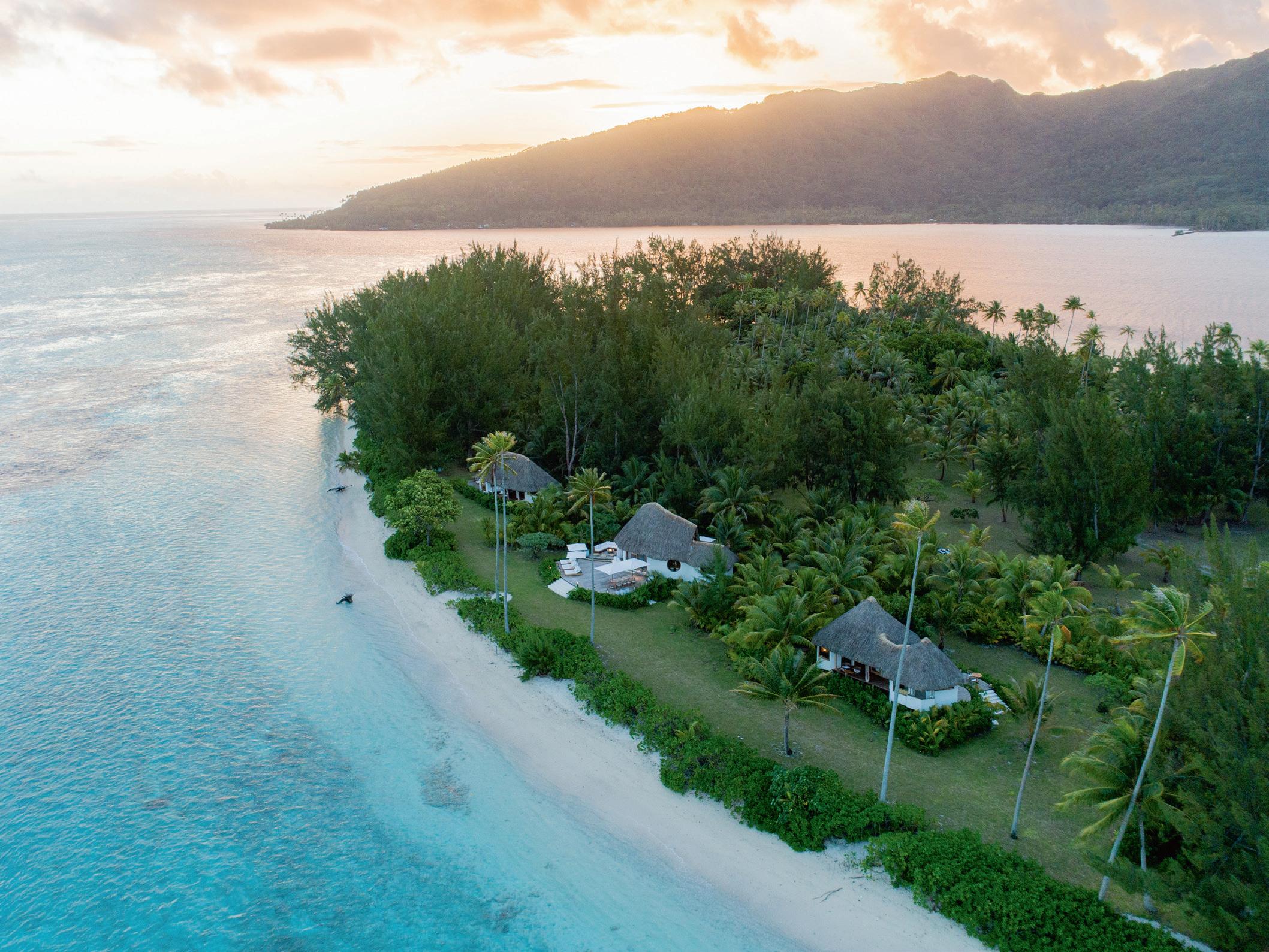
one-per-centers do, I decide to fill my first day with something traditionally Tahitian – and ultimately deceiving.
The Va’a Holopuni, a traditional Polynesian sailing canoe, arrives with Rémy Lavie from Paddle Sports (paddlesports.fr), a Frenchman and va’a champion determined to show me the best of the lagoon of his adopted home. I expect I will swan around like I’m in a Bryan Ferry video clip, all champagne and shellfish. Instead, Lavie hands me an oar and suggests I start paddling across the lagoon. At first, it’s calm and looks like an artist’s palette of blues and greens before it changes and feels more like someone has turned a garden hose on my face. I put my snorkel mask on and, through the spray, I observe the hordes of turtles, stingrays and blacktip reef sharks who’ve swum in. “Woo hoo!” shouts Lavie. “This is why I love this sport – one minute it’s calm and the next it’s wild!”
There’s time for a quick cycle around the island and a serene soak before one more activity: a Polynesian dance and drumming lesson on Sunset Beach. By the glow of the fire crackling alongside a mirrored showcase of cocktails and canapés, I try ori Tahiti (the local version of hula) with all the grace of someone who’s lost control of a chainsaw. And then I give up, embracing what the island has expected of me all along. Day two? I have zero plans.

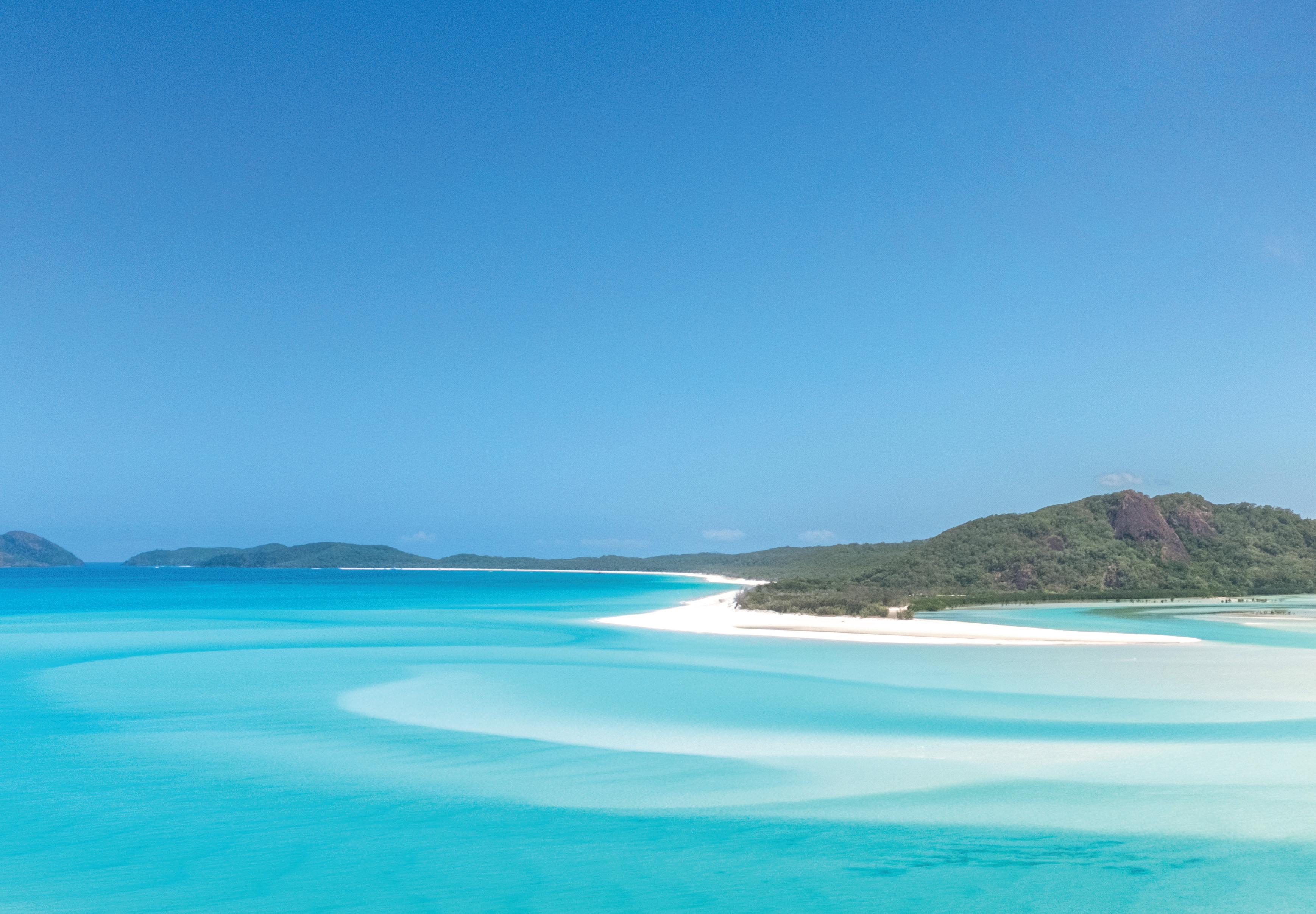


Ancient lagoons, vivid rock art galleries and Dreamtime stories call on you to discover Western Australia through the eyes of the world’s oldest continuous living culture.

Explore spirit pathways and new flavours
The Margaret River Region normally calls to mind ripe cabernets and bright chardonnays. But you can savour something unique in a Food, Cave and Didgeridoo Tour led by Wadandi man Josh Whiteland of Koomal Dreaming (koomaldreaming.com.au). Begin with a guided bushwalk through towering karri forests then forage for native bush foods –such as emu plum and saltbush – before Dreamtime storytelling in Yallingup’s Ngilgi Cave. “Caves are significant because they're considered spirit pathways for Wadandi people,” says Whiteland, who performs a stirring didgeridoo melody under 500,000year-old stalactites. The journey concludes with a barbecue featuring native flavours of kangaroo, emu and quandong (native peach).
“Margaret River is the food bowl of the state
so it’s a no-brainer that we use food to enhance the day,” he says. "Being able to see, hear, touch, taste and smell really brings it all together.”
Few people who wander across the sinuous Matagarup Bridge in Perth (Boorloo) to the buzzing Optus Stadium realise they’re tracing ancient history. “Matagarup was the ancient pathway that connected the clans across the river and part of the creation story of the Wagyl, the rainbow serpent,” says Nick Abraham, Nyoongar man, owner and lead guide at Warrang-Bridil (warrang-bridil.com.au). An hour-long walking tour along the banks of the Swan River (Derbarl Yerrigan) winds through nature-play zones and replanted native flora and allows an “opportunity to experience the
bush right in the metropolis”. At the end of the day, sit around the fire and connect in a way that Abraham says is difficult to describe, “not just to the land but to ourselves”.
With red cliffs and primordial blue lagoons, Shark Bay (Gutharraguda) is a World Heritage site that’s a two-hour flight north of Perth. Immerse yourself in the region through a low-impact stand-up paddleboard tour over canals and lagoons, led by Darren “Capes” Capewell from Wula Gura Nyinda (wulagura.com.au). Capes is a descendant of the land’s traditional Nhanda and Malgana custodians who shares the area’s First Nations history and culture while you paddle. “It's interactive – we want people to fill their bellies

with the fresh air and their souls with the energy.” Embrace it all while you get acquainted with some of the local marine life, including dugongs and loggerhead turtles, and five of Australia’s 26 endangered species, such as the banded hare wallaby.
Visit Merredin, a three-hour drive east of Perth, to discover red granite outcrops and wildflowers like rare orchids, everlastings and wreath flowers that bloom through the cracks. While the sights are the lure, the stories

behind them are even better, says Mick Hayden of Njaki Njaki Cultural Tours (njakinjaki.com.au). He takes visitors on a hike through the region, stopping at rocks such as Mount Stirling for Wheatbelt-specific Dreamtime stories alongside panoramic views. “Once you get to the top, you get that different perspective and more knowledge about looking after the land and everything we share it with.”
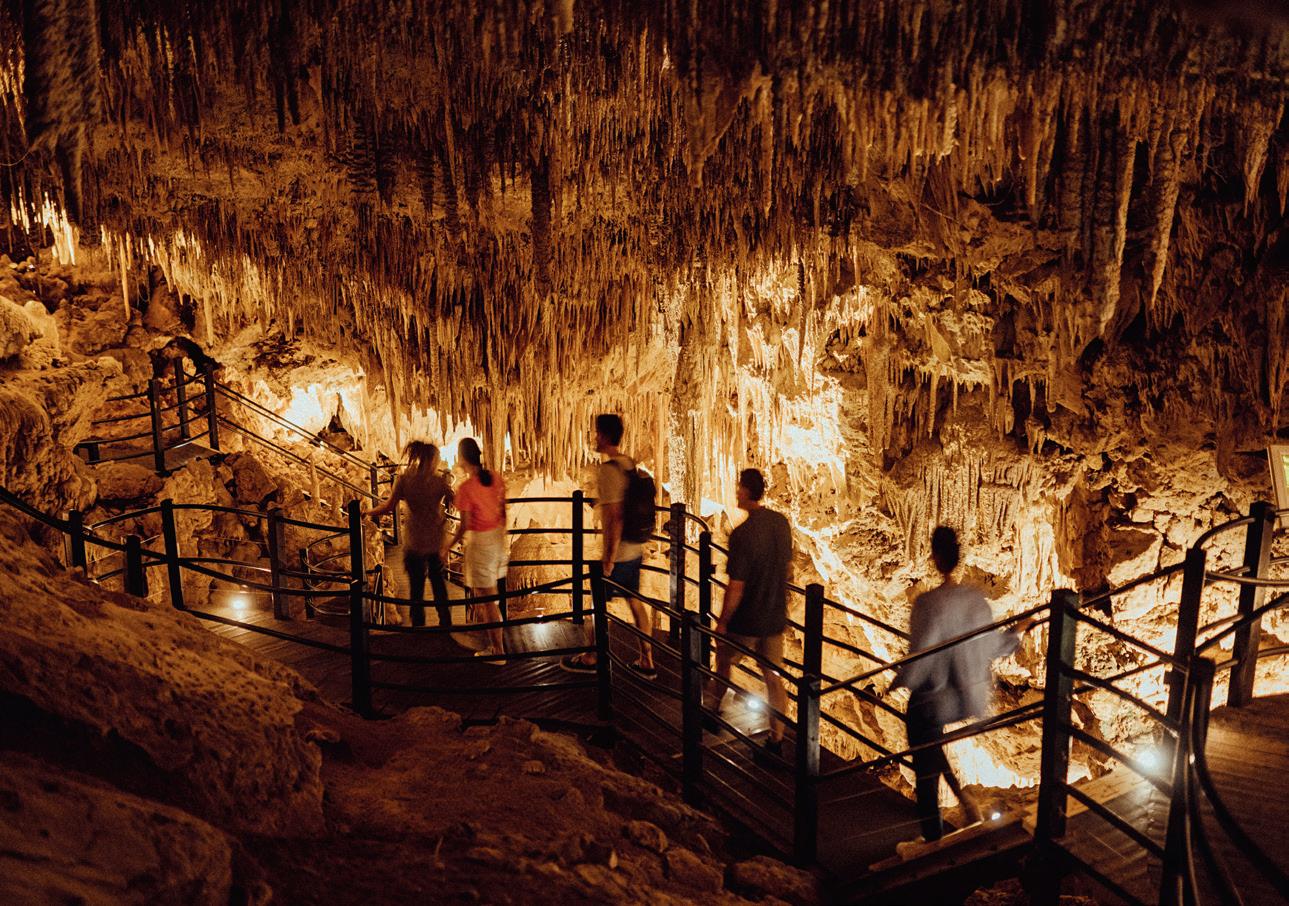
Admire ancient rock art galleries, hear a traditional tapping song echo around a natural amphitheatre and wander among epic 350million-year-old formations as you explore Western Australia’s Kimberley region with Gija elder Rebecca Sampi of Kingfisher Tours (kingfishertours.com.au). In World Heritagelisted Purnululu National Park, home to the famous beehive-striped domes of the Bungle Bungle Range, “Country comes alive with vibrant red rocks that turn to orange, cascading waterfalls and amazing wildlife,” says Sampi, who shares stories of Cathedral Gorge and Echidna Chasm through sand drawings, tapping songs and Dreamtime tales over freshly made damper and ripe fruits from the Ord Valley. You can also take in the Kimberley from above in an air safari, stopping to dip in freshwater springs, view rock art and taste native foods like fire-roasted boab nuts and waterlily petals.
To learn more, visit waitoc.com/aboriginalexperiences
Mick Hayden of Njaki Njaki Cultural Tours, Merredin Ngilgi Cave, Margaret River Region Rebecca Sampi of Kingfisher Tours Purnululu National Park, the Kimberley
In Tasmania’s north-east, Alexis Buxton-Collins combines the region’s world-class drawcards
Photography by Adam Gibson
of epic mountain biking, hearty food and fine wines.
“In 2014, Derby was a ghost town,” says Steve Howell. “Peak hour was when the publican crossed the road with her sheep and you could only get coffee a few days a week.” Less than a decade later, the main street has three busy cafés slinging alt milk lattes and I count dozens of cabins, cottages and camp sites along the banks of the tranquil Ringarooma River on the land of the Pyemmairrener peoples.
This former tin mining town in north-east Tasmania is an unlikely spot for a revolution but the Specialized Stumpjumper mountain bike that Howell, owner of Blue Derby Pods Ride (bluederby podsride.com.au), helps me pick out before the 90-minute drive from Launceston hints at the impetus for Derby’s revitalisation. Today, 100 kilometres of purpose-built trails wind through dense myrtle forest around the town and since the network opened in 2015, the world’s best mountain bikers have twice named this their favourite place to ride. Crucially for me, the trails cater to the hardcore and riders whose only experience is urban bike lanes.
The green, blue and black markers mirror the signs on a ski slope and for every double-diamond “Detonate” or “23 Stitches”, there’s a gentler option. Over four days,

the Blue Derby Pods Ride is my window into this ruggedly beautiful terrain.
Listening to Howell talk about “flow” is like watching an old VB ad. “Musicians can find it, artists, hikers, even someone reading a book by the fireplace – you can get it in a lot of ways,” he explains. “Flow is when you’re so lost in the moment that you look at your watch and wonder where the time went.” The key, he tells me, is to create an environment that balances comfort and challenge. It’s why I spend the first morning learning to trust my dual-suspension bike, which rolls smoothly over roots, rocks and puddles as long as I keep my nerve, before white-knuckling down a blue run.
When I return to the same trail on day two, I’m comfortable enough to notice the temperature drop as I plunge into the thick undergrowth and see gardens of mauve foxgloves and discarded mining equipment hidden in the ferns beside the trail. Instinctively I drop my seat and stand on my pedals in anticipation of each descent, Howell’s voice a calming presence that alerts me to each upcoming challenge as he follows a few metres behind. As my grip on the handlebars relaxes so does my mind. For a brief

moment I give myself over to the ribbon of chocolate-coloured dirt that unspools ahead of me, less a trail than a river whose current propels me forward. This must be flow, I think, simultaneously excited that I’ve reached this transcendent state and frustrated that I’ve broken the spell by naming it.
At its most extreme, mountain biking reminds me of skydiving. My body seems to swell with every heartbeat as I greedily take in lungfuls of fresh air. But as I adjust to the sensory overload, scattered images begin to form. For 42 kilometres I’ve been following a trail that drops precipitously into wet forest rich with mountain ash, continues along looping switchbacks through dry open woodland and flattens out into fragrant coastal scrub filled with tea tree and black peppermint gum.
When I emerge at the coast I’m both mentally and physically exhausted but immensely satisfied. The rest of my group (we are five riders) are already sitting on a beach of white sand when I arrive and a glass of bubbly is pressed into my hand. “When I’m happy, songs just come into my head,” says Karen, a remarkably energetic 58-year-old who learnt to mountain bike in her forties. “Today it was Free Fallin’ by Tom Petty.”
“The builders thought we were crazy when we asked them not to step on any rocks,” says Howell as he shows me around our home base. But that attention to detail is typical of “the first and only five-star mountain biking experience in Australia”. Mossy rock gardens out the front of the four pods make them look like they’ve been in place for decades and because the nearby trees were strapped back rather than cut down during construction, they’ve sprung back to envelop the structures. Solar panels provide most of the power, while waterless composting toilets ensure there’s enough rainwater for a hot shower when we roll up at the end of each day. Howell and his partner, Tara, have even teamed up with Greening Australia to provide carbon offsets for all trips.
Up at the communal hub, I warm myself by the double glass-fronted fireplace and grab a Little Rivers Dark Lager from the help-yourself bar fridge. Walking through a cupboard door I find a hidden reading nook beside a picture window and



watch wallabies and superb fairy wrens jump through the underbrush.
The timber-filled communal area is a place to refuel for the next challenge. At each meal, cultured sea salt butter and salt dug from a local mine set the scene for hearty feasts that lean heavily on local produce. But it’s the feast that awaits at the end of the Bay of Fires ride that lingers on the tastebuds: zingy flathead ceviche, buttered garlic scallops camouflaged in a bowl of baby Dutch cream potatoes and a rich salad laden with thick slices of octopus caught less than a kilometre away.
My minibar has enough pinot, syrah and single malt to stock a small wine bar. A balanced breakfast at the downstairs restaurant means ordering a cold-pressed green juice and a spicy sheep’s whey vodka bloody Mary. Stillwater Seven (hotel.qantas.com. au/stillwaterseven) in Launceston is a place that encourages indulgence and after four days of riding, the property’s Finer Things package is a chance to slow down and meet some of the best local food and drink producers. Within minutes
of finishing breakfast, I’m sipping basketpressed pinot noir with a winemaker. “This reminds me of Northern Switzerland,” says Matthias Utzinger as he gestures at the broad sweep of the Tamar River below his Utzinger winery in Legana. “You don’t have the massive mountains but it’s green and lush, with lots of hills.” At our next stop, Turner Stillhouse in Grindewald, California expat Justin Turner makes American-style whisky from sweet yellow dent corn and spicy rye, and gin that adheres to a simple rule: “no lemon myrtle or pepperberry”. Instead, he flavours his gin with rose petals, lashings of citrus and warming cardamom.
The fertile Tamar Valley is so blessed with small producers that I barely have time to put on my seatbelt between stops. After lunch, it’s a short drive back to Havilah wine bar in Launceston for a zippy pet nat and crisp pods of fritti Romani. A dozen wines by the glass showcase smallscale producers and as I work my way through the list, I reflect on the varied states of flow that Steve Howell described. You can find it treading the boards or strumming some chords. Riding downhill flat chat or sipping pet nat. You can get it any old how. Matter of fact, I’ve got it now.
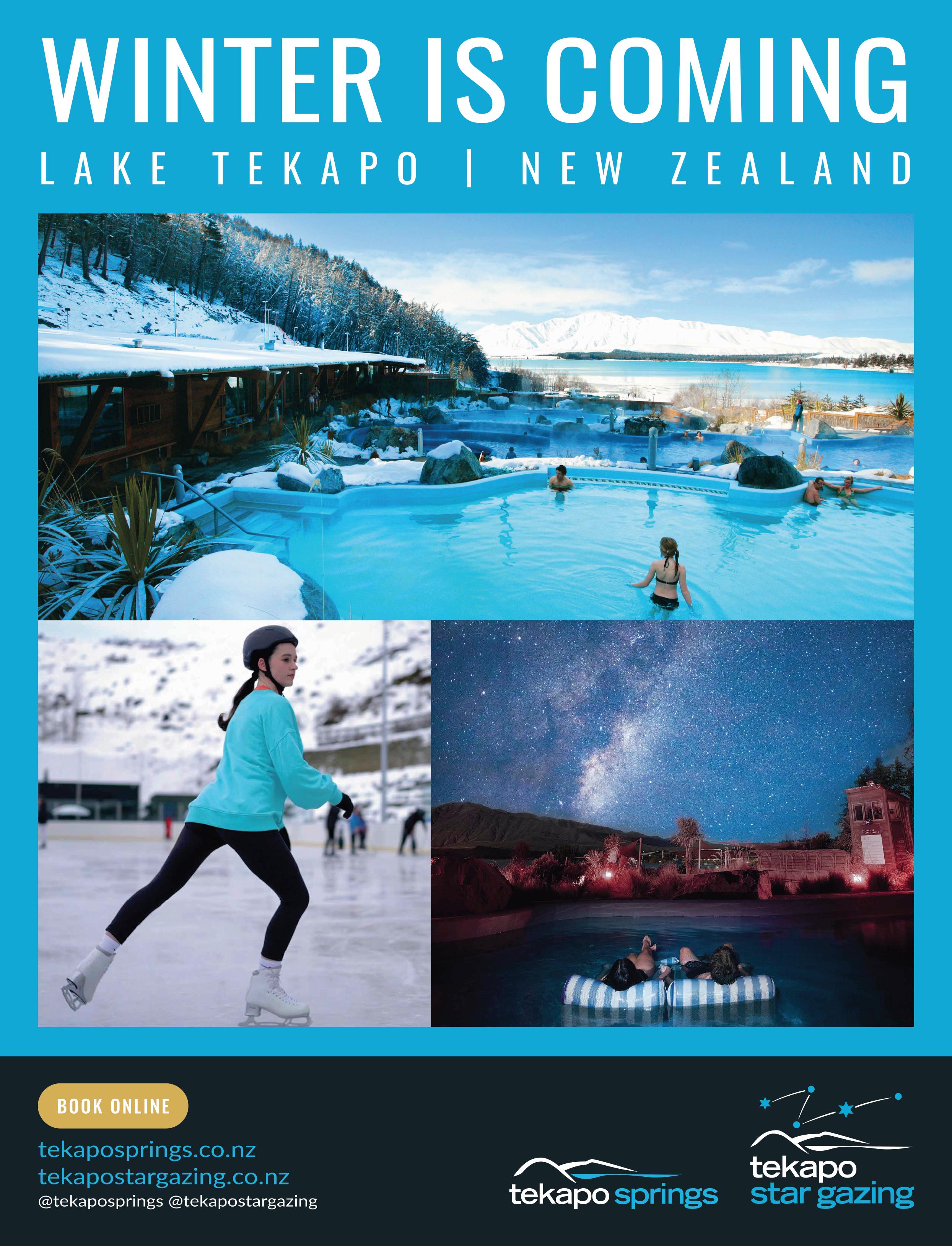

New Zealand’s four key cities offer art, culture, fine dining and a base from which to explore the country’s legendary scenery.
By Alex Grieg
Aotearoa whimsically translates to Land of the Long White Cloud and the country is so lavished with astonishing natural beauty that it’s easy to overlook the charm of its cities and towns. The four best-known – Auckland, the harbourside jewel; Wellington, the compact arty capital; Christchurch, the evolving metropolis; and Queenstown, the genetically blessed adventure hub – each have a distinct character, culture and appeal that are worthy of exploration.
From Australia’s east coast, New Zealand is close enough to warrant a long weekend but sufficiently wondrous to deserve a longer stay. Taking each of these four centres as a base, we’ve devised itineraries for a short escape, with additional ideas for those with time on their side. Whether you’re seeking heart-pounding adventure, the thrill of seeing wildlife up close, epicurean indulgence or the hedonism of a luxurious lodge, one – or all – of these destinations will prove ideal.
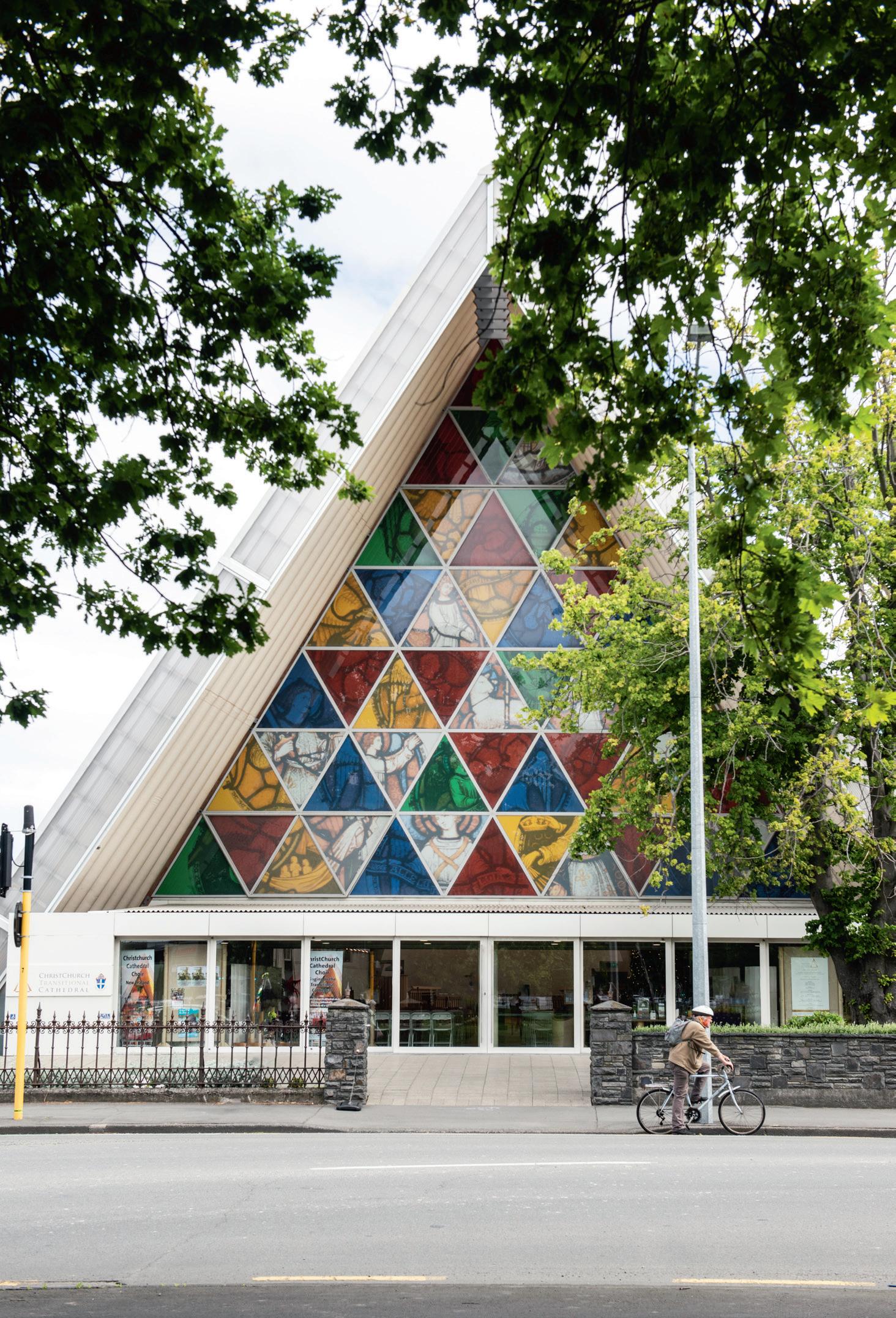
New Zealand’s oldest city is also its newest. Christchurch, on the South Island’s east coast, is in a state of exciting evolution: cutting-edge architecture and street art are now just as synonymous with the city as English-style gardens.
If you have a weekend
Christchurch has often been described as the most English of all New Zealand cities and while a certain buttoned-up Britishness remains – for instance, punting on the Avon (christchurchattractions.nz) – the 2011 earthquake sparked a recalibration.
Get your bearings aboard the vintage, hop-on, hop-off Christchurch trams (christchurchattractions.nz) on a 50-minute circuit that takes in most of the centre’s top attractions, including Canterbury Museum and its permanent Quake City exhibition (quakecity.co.nz), which tells the story of the region’s devastating tremors; the New Regent Quarter ’s boutiques and eateries (soulofthecity.co.nz); and the “cardboard” Christchurch Transitional Cathedral (cardboardcathedral.org.nz), initially designed as a temporary structure but now part of the city’s fabric.
Any half-built, semi-ruined or completed structure with an exposed surface is rendered canvas in Christchurch, most spectacularly in the 3D mural at Riverside Market (riverside.nz). Don’t just marvel at the exterior – the building, which spans a corner block, houses a daily farmers’ market and a fabulous food hall.
Check into the Observatory Hotel (hotel.qantas.com.au/ observatoryhotelchristchurch), a 33-room boutique stay

Exploring the dramatic scenery of New Zealand’s Te Wahipounamu on a purpose-built catamaran with Fiordland Discovery will make you feel small in the best possible way.
Waterfalls spill into epic fiords, towering mountain peaks are capped with snow and penguins and New Zealand fur seals are found in the pristine waters of this natural wonderland. Fiordland Discovery (fiordlanddiscovery.co.nz) co-owner Kate Rollason and her husband, Rob Swale, are passionate about sharing the beauty of New Zealand’s rugged south-western corner with their guests and are always delighted by the reaction that this special place evokes.
By “special place”, Rollason is referring to the UNESCO World Heritage site Te Wahipounamu, the largest natural wonder in the country and home to four national parks, including the 1.2-million-hectare Fiordland National Park. Choose from six- or nine-night Fiordland itineraries and visit key sites such as Milford, Doubtful, Breaksea and Dusky sounds with
Fiordland Discovery, a family-owned-and-run cruise and expedition business. Along with plenty of kayaking and fishing opportunities, you can visit the isolated lighthouse at Puysegur Point, drop in at historic gold rush sites and do short hikes along Chalky and Preservation inlets. “There’s nowhere else in the world that feels as remote or as untouched,” says Rollason. “Since so much of it is only accessible by helicopter or boat, it means few people will ever get to experience the sheer wonder of it.”
The Fiordland Jewel, a boutique three-deck catamaran specifically designed to explore this unforgettable region, ensures you’re one of the lucky few. Catering to a maximum of 18 guests, the vessel features nine spacious seaview cabins, including the top-deck Governor Cabin. You’ll enjoy the view of the fiords
through large windows – instead of portholes – and there’s also a top-deck spa, meals from an onboard chef (think sustainably caught New Zealand blue cod) and a helipad that provides the ultimate launchpad for that once-in-alifetime airborne adventure.
It’s what you won’t find on the itineraries that could be Fiordland Discovery’s most luxurious offering: flexibility. “Whether it’s tweaking our itinerary to go with what guests are interested in or tailoring specific activities on our private charters, we’ll do it,” says Rollason. “We want our guests to have the most amazing experience of their lives and to enjoy it in complete comfort.”
For more information on Fiordland Discovery, visit fiordlanddiscovery.co.nz
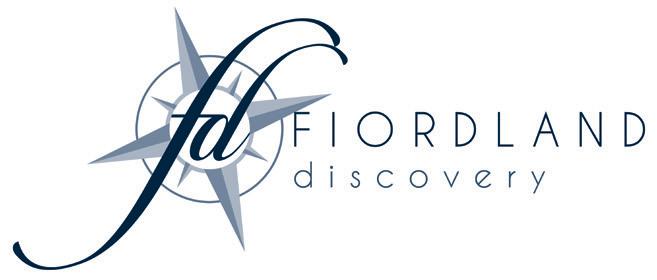
situated in the Arts Centre, the restored Neo Gothic former University of Canterbury buildings. In the same complex is the buzzy Cellar Door (cellardoor.nz), where you can sample local wine flights and pleasing mod-Kiwi dishes such as marinated green-lip mussels with XO sauce or octopus carpaccio with ’nduja and pickled celeriac.
For breakfast, South Town Club (southtownclub.co.nz) is a 15-minute walk down lively Colombo Street and serves a sustaining dish of turmeric flatbread with chickpeas, though after an evening at the late-night Austin Club (austinclub.co.nz), a bacon butty with hangover sauce might be more appropriate.
City centre discovered, spend a day in the Frenchflavoured port of Akaroa, about 90 minutes by bus south of Christchurch with Akaroa French Connection (akaroabus.co.nz). See (or swim alongside) rare Hector’s dolphins with Black Cat Cruises (blackcat.co.nz) then lunch on mussels at Ma Maison (mamaison.co.nz) before your return bus home.
Rent a car and head north along the Alpine Pacific Touring Route. The Waipara Valley is renowned for its riesling and pinot noir; hire bikes at Torlesse Wines (torlesse.co.nz) and ride the cycleway between wineries. Soak tired limbs at Hanmer Springs Thermal Pools & Spa (hanmersprings.co.nz) before continuing to the seaside village of Kaikōura, situated between the snow-capped peaks of Mount Fyffe and the Pacific. There, on a South Pacific Helicopters tour (south pacifichelicopters.co.nz), you’ll see breaching whales from

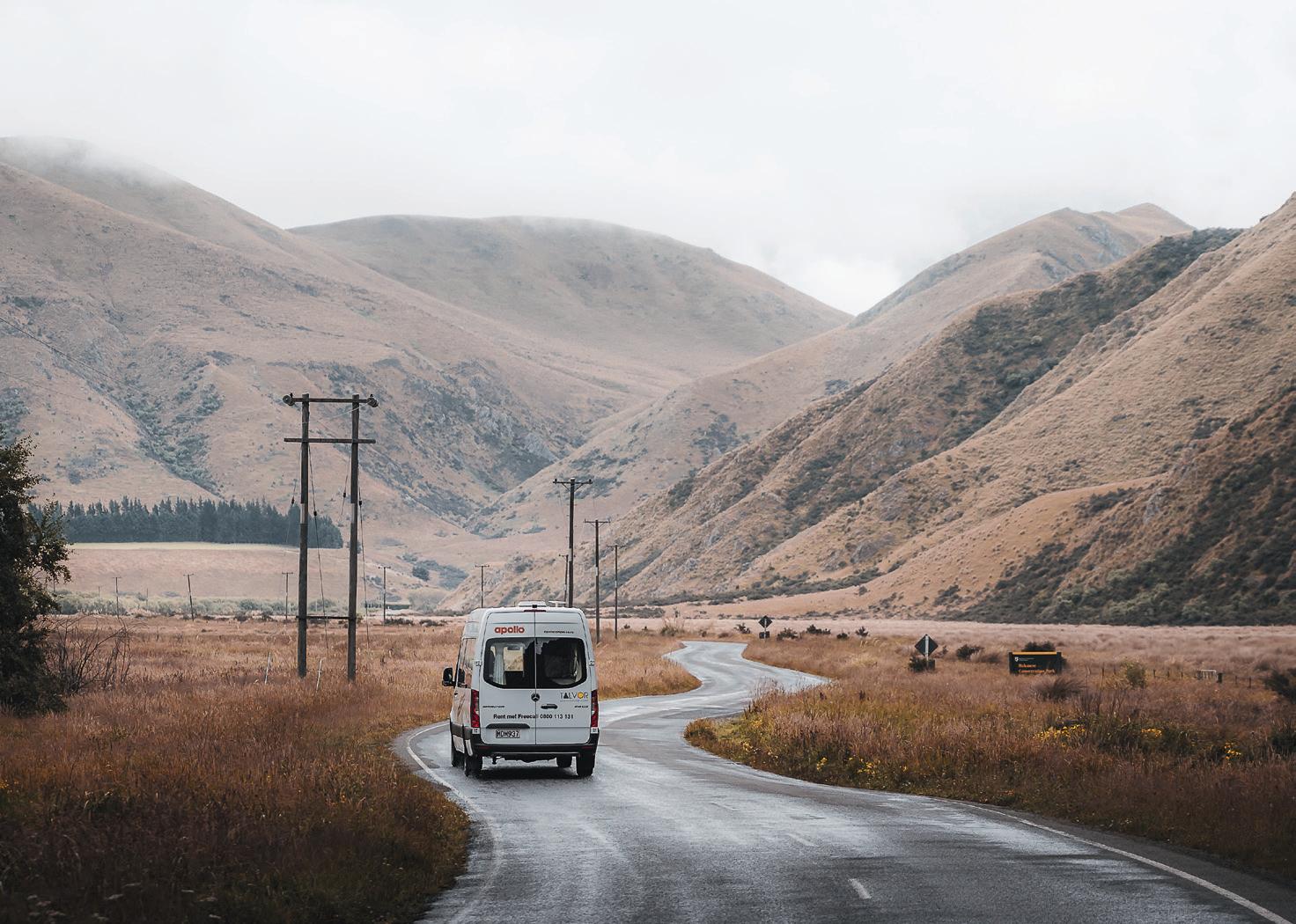
the sky. Closer to earth, Seal Pedal Kayak Kaikōura (sealkayakkaikoura.com) hosts tours where fur seals keep you company. Spent? Check in at the new Sudima Kaikōura (hotel.qantas.com. au/sudimakaikoura) for epic views of mountains and sea.
Heritage trams service Christchurch’s central streets (top); Ashburton Lakes, one of the many picturesque regions close to the city (above)
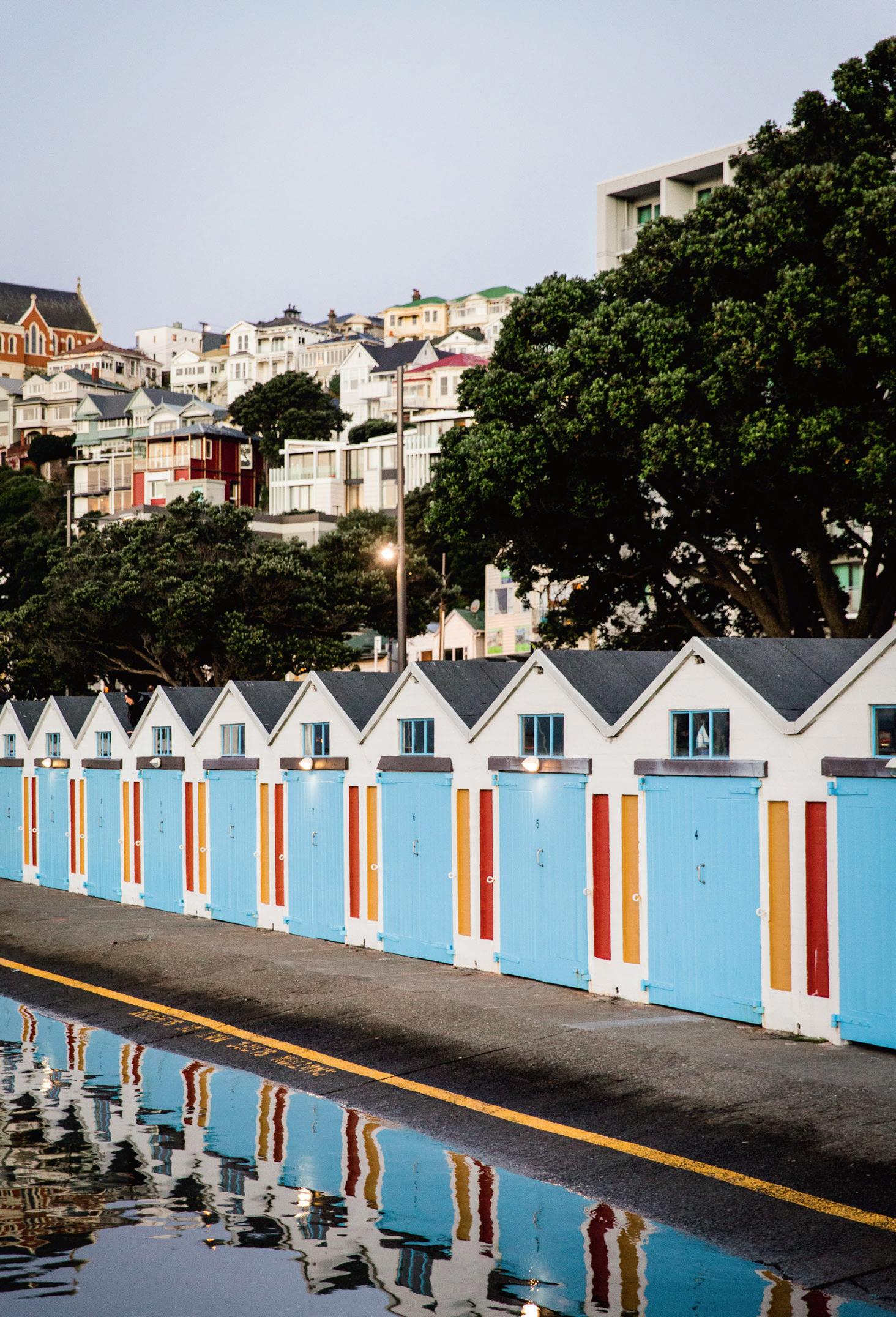
Good things come in small packages, as a wise person once said. And what the capital Wellington, at the bottom of the North Island, lacks in scale, it makes up for in substance. Visitors can wander aimlessly and still stumble on a new favourite craft brewery, gallery or eatery.
Despite Wellington’s accessibility, it never hurts to get the lay of the land. Take a scenic hike to Mount Victoria Lookout for a spectacular 360-degree panorama or jump on board the Wellington Cable Car (wellingtoncablecar.co.nz) from Lambton Quay for city and harbour views from the Botanic Garden.
Famously eclectic Cuba Street, where record stores, second-hand booksellers and vintage-clothing shops share street space, encapsulates what’s great about the city in one neat, pedestrian-only strip. Start at Fidel’s Cafe (fidelscafe.com), a Wellington institution where the coffee is strong, the vibe is good and the party continues into the night.
Fortified, make time for Te Papa Tongarewa (tepapa. govt.nz), the county’s national museum, where the story of modern New Zealand is told.
Set up camp at Naumi Studio Wellington (hotel. qantas.com.au/naumistudio), a landmark heritage building on Cuba Street that’s now a whimsical, stylish place to rest your head.
Around the corner is new hotspot Humdinger (uptheghuzz.co.nz), where high-concept cocktails are served in an ersatz dive bar. Another newcomer, Graze (grazewinebar.co.nz), in


When visiting New Zealand’s lower south, you’ll find yourself wanting to stop at every photogenic turn. Take your time to explore the Southern Way regions and experience the ultimate scenic adventure when you combine these two road trips over five to seven days.
The route traverses 411 kilometres of Otago’s best. After flying in to Queenstown Airport, set off from Wānaka and check out Wānaka Lavender Farm’s eight hectares of fields, farm animals and gardens – make sure you grab a lavender tea and ice-cream in the café before hitting the road. From here, you’ll drive through the winding mountains of Lindis Pass to the popular wineries in the Waitaki Valley, such as River-T Wines, where you can grab a bottle of chardonnay and a local artisinal cheese platter.
Explore one of the many Waitaki Whitestone Aspiring Geosites to take snaps of the Moeraki Boulders dotting Koekohe Beach. Along the way, towns with big personalities are ready to be discovered such as Oamaru with its Steampunk HQ museum and Port Chalmers’ vintage stores, café s and galleries. End the journey in Dunedin and explore the Scottish-accented city’s historic architecture.
GO OVERLAND IN CENTRAL OTAGO
Even the simplest road trip in New Zealand’s South Island delivers rewards. Case in point?
The 341-kilometre Central Otago Touring Route from Dunedin to Queenstown. Before leaving Dunedin, explore Larnach Castle on the Otago Peninsula and discover its rich history dating back to 1871. You can also meet locals at the Royal Albatross Centre, just out of the city, for a 60-minute guided tour and experience a bird’s-eye view of the headlands. A short drive away from town is the Orokunui Ecosanctuary and its 307 hectares of forest that protects native wildlife, including the New Zealand falcon. Here, you can take a self-guided tour through the nature reserve that’s free from predators. On the road to Queenstown, pause at Sutton Salt Lake and stretch your legs on the 3.5-kilometre walking track, taking in the Middle Earth scenery before reaching the gold rush town of Naseby, where you can try your hand at curling. It’s only a 35-minute drive to St Bathans – a one-street village almost unchanged from gold rush days – and hike the two-kilometre path around the vivid Blue Lake. About 1.5-hours west, swap four wheels for two in Gibbston where you can spend the day cycling between wineries before settling in for the night at Kinross’ vineyard cottages. Pass by Arrowtown, around 20 minutes out of Queenstown, where you can hire your own gold pan and try to find a fortune or walk the nearby Lake Hayes Loop Track, surrounded by snow-capped peaks. As the route comes to an end, Queenstown and its adventures, like the Canyon Swing – the world’s highest cliff jump at 109 metres – are just over the horizon. Learn

inner-city Kelburn (less than 10 minutes away by car), has a changing menu of share plates (currently tempting: soft pretzel with beer cheese), a zero-waste ethos and an all-local wine list.
Take a morning stroll along harbour promenades past historic buildings, Māori carvings, restaurants and museums. From Queen’s Wharf, the path skirts around Te Papa and Chaffers Marina to Oriental Bay. Stop for smoked salmon bagels at Beach Babylon (beachbabylon.co.nz) and a walk along the sand.
If you can’t leave New Zealand without a taste of The Lord of the Rings films, go behind the scenes on a tour with Wētā Workshop (wetaworkshop.com), where
props and costumes for hometown boy Peter Jackson’s trilogy were created.
If you want to stay a while
Drive 40 minutes north of Wellington to Pipinui Point (pipinuipoint.co.nz), a romantic cabin escape on a clifftop high above the Tasman Sea. Marine reserve and nature sanctuary Kapiti Island is reached by ferry from Kapiti Boating Club, an hour’s drive beyond Pipinui Point. Kapiti Island Nature Tours (kapitiisland.com) will take you on a search for the island’s most elusive inhabitant: the kiwi. Guest numbers are capped so book ahead.

Planning to stay in this neck of the woods? Kokomea PurePod (purepods.com) is a tiny house overlooking Kapiti Island, with tranquillity in spades. Sunsets will leave you speechless and mornings sparkle with promise.
New Zealand’s largest and most international city, cosmopolitan Auckland on the North Island is heady mix of cultures set between two magnificent harbours.

Auckland is like a microcosm of the country’s charms. One day, you’re shopping in Queen Street boutiques, visiting the world-class Auckland Art Gallery (aucklandartgallery. com) and wandering the new waterfront Wynyard Quarter (wynyard-quarter.co.nz). The next, you’re whale-watching in the Hauraki Gulf with Auckland Whale & Dolphin Safari (whale watchingauckland.com), hiking through rainforest to black-sand beaches in Waitakere Ranges Regional Park or stargazing at the Dark Sky Sanctuary on Great Barrier Island (greatbarrier.co.nz), 90 kilometres off the coast.

A burger-loaded food festival, the world’s largest women’s sporting event and an epic exhibition 150 million years in the making. It’s time to experience an action-packed winter in Wellington, New Zealand.
Witness a memory-making contest at Wellington Regional Stadium when it plays host to nine matches during the 2023 FIFA Women’s World Cup™ (20 July to 20 August).
The world’s largest women’s sporting event will see 32 teams – including Australia, New Zealand and defending champions Team USA – battle it out in 10 venues across Australia and New Zealand.
The World of WearableArt (WOW) Show is touted as New Zealand’s answer to the Met Gala. Past entrants in the competition have included wearable art woven from unlikely materials, such as a set of spiralling gowns made from 500 tents found at music festivals and a winged costume crafted from 55,000 tiny scales, hand-cut from office document folders. The event, an alchemic mix of fashion, innovation and art, is predicted to transfix upwards of
60,000 people when it takes over Wellington’s TSB Arena (20 September to 8 October).
Each August, the food-loving citizens of Wellington channel their passion into crowning the region’s most outstanding burger. Burger Wellington (11 to 27 August), presented by local brewery Garage Project, is spread across two weeks on the Visa Wellington On a Plate festival schedule and sees the region’s restaurants serve their most inventive creations between two buns. Last year’s best burger was from Indian diner Chaat Street and featured a crispy dabeli-spiced potato patty with “fire peanut butter” in a masala butter brioche bun that was (gasp!) vegetarian.
Tākina, the soon-to-be-opened Wellington Convention and Exhibition Centre, welcomes its first visitors with Jurassic World by Brickman


(3 June to 16 October). The exhibition is the biggest ever put on by Ryan “The Brickman” McNaught, who has used more than six million LEGO bricks to bring the dinosaurs of the Jurassic World film franchise to life. A further 2.5 million LEGO bricks will be available to young and young-at-heart visitors who want to try their hand at building a Tyrannosaurus rex or velociraptor of their own.
With six Tonys, a Grammy and an Olivier Award for Best New Musical, the production of Kinky Boots (28 June to 15 July) at Wellington’s heritage St James Theatre is worth braving the cold for. The St James stage will also play host to one of Broadway’s greatestever blockbuster musicals, Wicked (17 August to 3 September), which, in case you’ve been living under a yellow brick, is the tale of Oz’s Wicked Witch of the West and her rivalry with Glinda, the good witch.
Plan your visit at WellingtonNZ.com



Take a free guided Auckland Walking Tour (aucklandfreewalkingtours. com) then head to Auckland Museum (aucklandmuseum. com) to see its collection of Māori artefacts, including whole buildings, carvings and a war canoe.
One of Auckland’s most distinctive features is the islands just offshore. Waiheke (waiheke.co.nz), a 40-minute ferry ride away, is known as the “island of wine” and famed for its rich reds. Tiritiri Matangi (tiritirimatangi.org.nz), a 22-hectare isle just a few kilometres away, is a pest-free sanctuary for native birds. At 600 years, Rangitoto Island is the youngest of Auckland’s 48 volcanic cones. Hire a kayak from Auckland Sea Kayaks (aucklandseakayaks.co.nz) at Mission Bay and paddle across the gulf, spotting dolphins on the way. Hike through pōhutukawa forest and fields of lava caves to the summit before the return paddle at dusk.
Book a room at The Hotel Britomart (hotel.qantas.com. au/britomart) near Queens
Wharf, where sustainability has become an art form – 99 serene, timber-clad rooms and five rooftop suites occupy the low-emissions hotel, where the slippers are compostable and the bricks are handmade.
Outside, the waterfront area encompasses some of the city’s oldest buildings, newly enlivened with savvy architecture to create a buzzy precinct. Amano (savor.co.nz) is a taste of Kiwi-inflected Italian (try spaghetti with Cloudy Bay clams and ’nduja), while nearby, mod-Pacific Mr Morris (mrmorris.nz) is the latest project of acclaimed chef Michael Meredith, who plates up dishes such as kingfish with shiso and tamarind, and aged Scotch fillet with bone marrow and salsa verde.
With extra days up your sleeve, hire a car and drive to Bay of Islands, a subtropical micro-region of 144 islands four hours north of Auckland. Check in to the stately Lodge at Kauri Cliffs (hotel.qantas. com.au/kauricliffs), a remote idyll with arresting views over the Pacific and its onsite championship golf course.
Visitors to New Zealand will be struck by the elevation of Māori culture in the national consciousness. Māori language peppers conversations and the culture is significant to New Zealanders of all stripes. Learn more at the Waitangi Treaty Grounds (waitangi.org.nz) and its state-of-the-art Te Rau Aroha museum, opened in 2020 (about 50 minutes’ drive south of Kauri Cliffs).
Take a slight detour to Ngawha Springs (ngawha.nz) on your way back to the city and soak in the mineral-rich thermal waters sacred to the Ngāpuhi iwi (tribe).

Spacious ski runs, bluebird skies and a thriving après culture –these two snow-sport havens offer thrilling action and family fun on and off the mountain.
Perfectly groomed slopes, slow and steep trails and blankets of powdery snow: Aussie skiers know all too well the incredible lure of New Zealand. But when it comes to playing in the Southern Alps, Cardrona and Treble Cone ski resorts – around an hour’s drive apart –offer their guests the opportunity to have it all in these winter playgrounds.
Dial up the adrenaline at Treble Cone
Just over a 90-minute drive north of Queenstown Airport, Treble Cone is host to the South Island’s largest ski area at 550 hectares, with legendary off-piste runs alongside its longest vertical drop – a heart-pumping 700 metres.
The Treble Cone ski area is known for its sky-grazing heights and sweeping views of Lake Wānaka below. Feel on top of the world as you carve up challenging runs such as Triple
Threat (ideal for confident skiers) or watch your skis slice through the powder-white snow of the more advanced Saddle Basin.
Beginner skiers and snowboarders can find their feet on the Nice n’ Easy Platter with the Snow Sports School. After a day on the snow, stop at the base area to grab a bite to eat or a brew with a view – a must-visit stop is the Allpress at Altitude Bar at the top of the express chairlift, with Lake Wānaka as your backdrop.
Get your thrills or chill at Cardrona
About an hour from Queenstown Airport and 18 minutes south of Wānaka by car to the bottom of the access road, Cardrona is famous for its epic sunrise views. Get closer to the action with a stay on-mountain at one of the village resort’s 15 chalet-style apartments, which are equipped for self-catering and feature flexible configurations to fit the whole family. There are eight cafés, restaurants and bars within easy access. A flute of Mumm goes down easier at Vista Bar atop McDougall’s Chondola (a combined lift with gondola cabins and chairs), where you can nestle into a beanbag and overlook the Whakatipu Basin.

Kids big and small will find a warm welcome here. The express chondola gets you to a network of gentle trails, including Skyline, and New Zealand’s longest beginners’ run, The Comeback Trail, which offers 3.6 kilometres of mellow slopes at the end of a series of more challenging blue runs, A Real Journey and Highway 89. More experienced skiers and snowboarders can be challenged in the Arcadia Chutes, or world-class terrain park and half-pipe facilities, which attract the best skiers and snowboarders to train and compete in events such as the Jossi Wells Invitational or Winter Games New Zealand.
For more information, visit cardrona.com/ winter or treblecone.com

Sitting pretty on the shores of Lake Wakatipu, Queenstown on the South Island has a lively arts scene, astonishing alpine landscapes and worldclass restaurants. But the reason most people visit? Its status as the adventure capital.
If you have a weekend
Start slowly by taking a dawn flight with Sunrise Balloons (ballooningnz.com). You’ll enjoy a lofty view of the Southern Alps, the lake and landscapes otherwise known as Middle Earth, followed by a champagne breakfast. Or book a scenic day trip to Milford Sound (realnz.com), where you’ll cruise past cascading waterfalls and lush rainforest.
Ramp things up by zooming along the Dart River, near Glenorchy, in a jet boat before paddling back downstream in a Funyak (inflatable kayak) with Dart River Adventures (dartriver.co.nz). Lunch and transport from Queenstown is included and the drive to Glenorchy is one of the most scenic in New Zealand.
Queenstown is the birthplace of bungee; book with the original, AJ Hackett
(bungy.co.nz), to freefall off the Kawarau Bridge, where daredevils have been doing likewise since 1988.
At Matakauri Lodge (hotel. qantas.com.au/matakauri), an exclusive 12-suite retreat, clouds drift by floor-to-ceiling windows and from your vantage point above Lake Wakatipu, the snow-capped Remarkables look close enough to touch. Need space? The Carlin (thecarlinhotel.com) offers the seven-bedroom
Queenstown is your gateway to New Zealand’s fiords, bays and mountains – all best seen through a wintry lens.
The glassy waters of Doubtful Sound form a 40-kilometre pathway through the World Heritage-listed Fiordland National Park. Getting to the fiord is part of the journey and takes a 2.5-hour drive to Manapouri from Queenstown, a cruise across Lake Manapouri and an hour’s drive over Wilmot Pass, all provided by RealNZ. Here, you’ll board your vessel for an overnight cruise, exploring the fiord out to the Tasman Sea. On board the Fiordland Navigator you may spot dolphins, seals and penguins – with a nature guide pointing out the wildlife – and explore the shoreline from a tender boat or kayak. Tuck into the delicious Fiordland-inspired gourmet buffet cooked by an on-board chef before unwinding on the vessel’s upper deck with a glass of wine while gazing at the star-studded skies. Turn in to your private cabin ready to do it all again tomorrow.
With nearly seven metres of rainfall each year, Milford Sound is best viewed from a cruise while wearing a raincoat. Access the fiord from Queenstown, a near four-hour journey if selfdriving, or hop onto the scenic RealNZ coach for a longer journey admiring the views through the windows. On board The Sovereign RealNZ Cruise, pass by Stirling Falls, Harrison Cove and the snow-dusted Mitre Peak. The Sovereign has a spacious top deck boasting photo-worthy views, as well as sheltered vantage points on the lower deck. Plan ahead and pre-book seasonal lunch boxes or sit down to some pub-grub offerings cooked up by the chef. While cruising, you’ll also learn about the ecosystem, its endemic wildlife and how RealNZ is enabling conservation
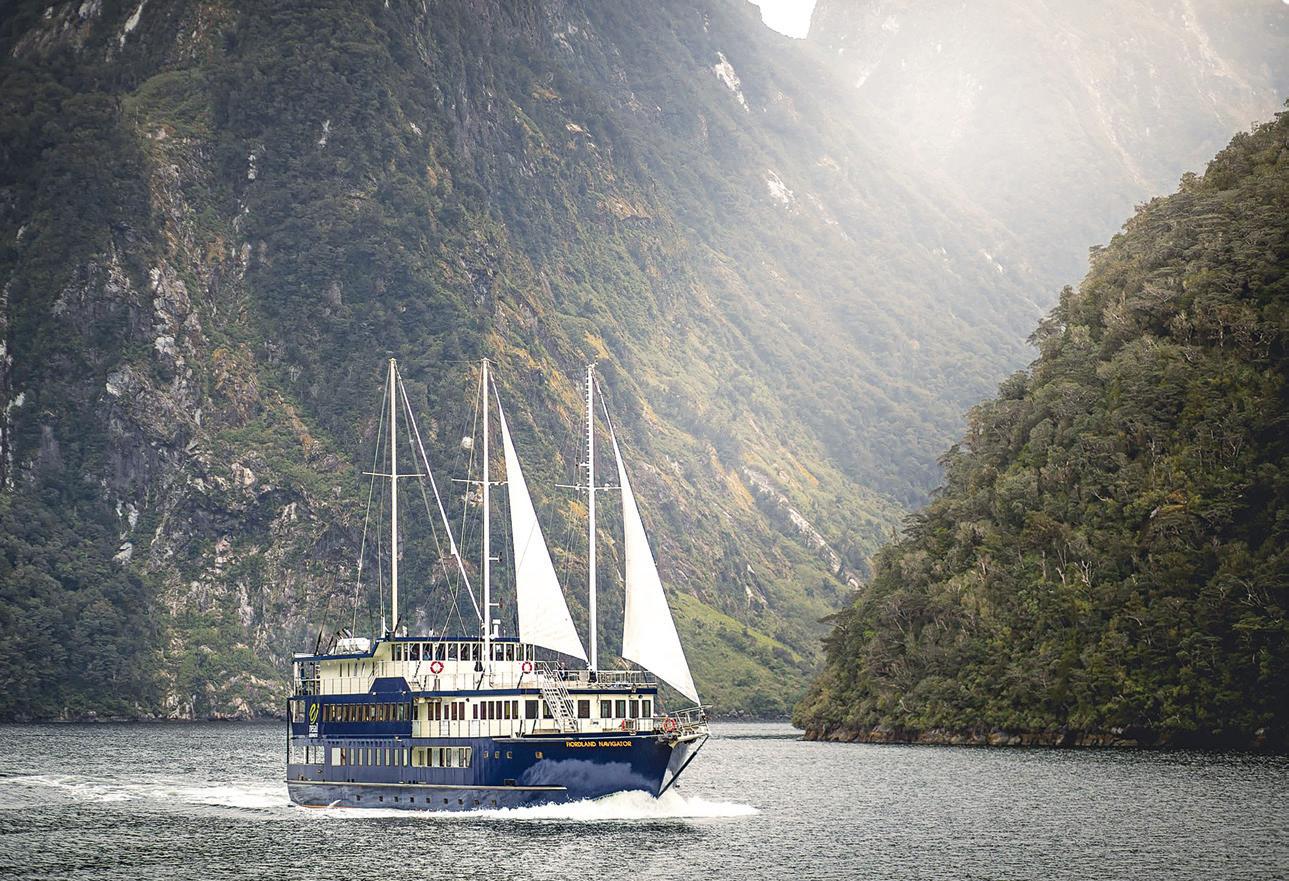

by donating time and money to trapping predators in the region, specifically where vulnerable Fiordland Crested Penguins are known to nest.
Visit the elusive tokoeka (southern brown kiwi) in its natural habitat on Stewart Island or Rakiura (which can be translated as “land of the glowing skies” in Māori). The island is just 30 kilometres south of New Zealand’s South Island, accessed by a short ferry from Bluff to Oban. Take RealNZ’s Ulva Island Explorer tour and travel by catamaran out to Ulva Island – one of Stewart Island’s
smaller, satellite isles. Here, you can walk through the native bush, listen to the sounds of rare bird species and soak up the peace of a predator-free bird sanctuary. Spend the night at the Stewart Island Lodge, which features six guestrooms looking out to Halfmoon Bay and Foveaux Strait. If you’re lucky, you might even glimpse the aurora australis (the Southern Lights) from the island, which has been accredited as a Dark Sky Sanctuary.
For more information visit realnz.com
Skyhome, the largest penthouse suite in the Southern Hemisphere.
Dial back the adrenaline aboard the 120-year-old coal-fired steamship TSS Earnslaw (realnz.com) for a 90-minute cruise around Lake Wakatipu to Walter Peak High Country Farm; extend it with a farm tour or gourmet lunch.
If a quick meal is in order, Fergburger (fergburger.com) is a cult destination for the finest burgers in town (veggie options include the Ferg-lafel, which can be made vegan). For a more refined experience, visit Amisfield Restaurant (amisfield.co.nz), 30 minutes from Queenstown, where executive chef Vaughan Mabee plates dishes starring Central Otago produce, such as Fiordland wapiti and local truffle brioche, accompanied by award-winning wines.
If you want to stay a while
Milford Sound may be more famous but Doubtful Sound, also in Fiordland, is the more dramatic. Explore its waters by kayak, spotting aquatic wildlife, or spend a night aboard the Southern Secret (doubtfulsound.com) and learn why they call this area the Sound of Silence. Tours depart from Manapouri, just over two hours from Queenstown via car or coach.
An hour in the opposite direction, Wānaka is a kind of mini Queenstown with its own stunning lake and alpine views. From here, it’s just 15 minutes to Lake Hāwea Station (lakehaweastation.com), a luxury retreat on a working farm. Breathe deeply as you watch the sun rise over the Southern Alps, reflecting on the lake’s mirror-like surface.





A hotel in New York’s coolest borough. A luxury getaway in the heart of Sydney. Or perhaps an immersive adventure through southern Italy. Earn or use Qantas Points when you book with Qantas Hotels and Holidays to make planning your next trip better, easier and more rewarding.
PORTOFINO HOTELS I PACKAGES I LUXURY I CRUISES I TOURSI’m looking for the world’s best stays

Earn 3 Qantas Points per $1 spent 1
Choose from more than 460,000 hotels around the world
Save your cash and use points to book
4
I’m looking for value and the ease of booking flights and hotels together

Earn 3 Qantas Points per $1 spent plus Status Credits on flights 2
Bundle your hotel and flights to save
Save your cash and use points to book
I’m looking for all the luxury extras
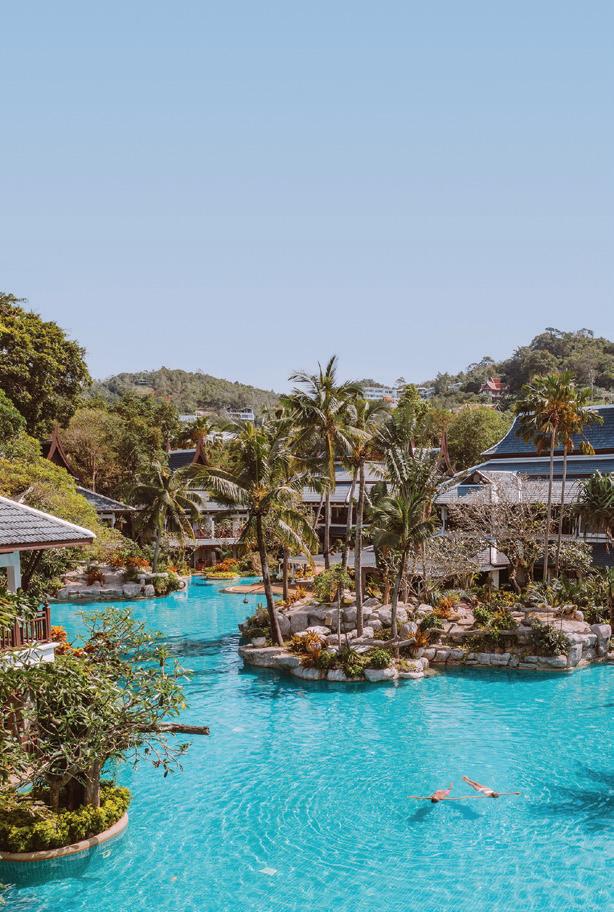
Earn 3 Qantas Points per $1 spent plus Status Credits on flights 2
Luxury offers packed with value exclusive to Qantas
Save your cash and use points to book
QANTAS LUXURY HOLIDAYSWant to sail through the turquoise waters of the Mediterranean or switch to island time in Thailand? Find your perfect getaway at Qantas Hotels and Holidays
I’m looking for an epic cruising experience

Earn 1 Qantas Point per $1 spent 8
Award-winning cruise specialists
Access special rates and offers from 20 top cruise lines
I’m looking for a curated itinerary to really immerse myself in a place



EARN QANTAS POINTS ON AIRBNB STAYS
Choose from more than seven million homes worldwide and earn 1 Qantas Point per $1 spent on your next Airbnb booking. All you have to do is start your search at qantas.com/airbnb and enter your Qantas Frequent Flyer details. New to Airbnb? You’ll earn 500 bonus Qantas Points on your first booking. 3
Earn 3 Qantas Points per $1 spent plus Status Credits on flights 9
Premium private or small group tours curated by Qantas
Save your cash and use points to book
PAGE 12 PAGE 14


MAKE ECO STAYS EVEN MORE REWARDING
Look out for the Green Tier icon when booking your next hotel. By choosing eligible eco-accredited stays, you’ll get closer to unlocking Qantas Green Tier status and a new range of benefits. For more information, visit qantas.com/greentier
QANTAS TOURSCastles overlooking the ocean, epic rooftop pools and sky-high hotels in the heart of the city: make the world’s best stays even more rewarding with Qantas Hotels
The borough of Brooklyn is New York’s capital of cool, with Williamsburg its epicentre. The Williamsburg Hotel (hotel.qantas. com.au/thewilliamsburghotel) epitomises its namesake neighbourhood’s hipster vibe with its industrial-chic interiors (think exposed brick and parquetry floors), excellent bistro and buzzing rooftop pool. The 147 rooms come with many surprises such as Brooklyn-crafted Apotheke toiletries and white-noise machines. Some rooms also have outdoor terraces with views of Manhattan, just a five-minute subway ride away.
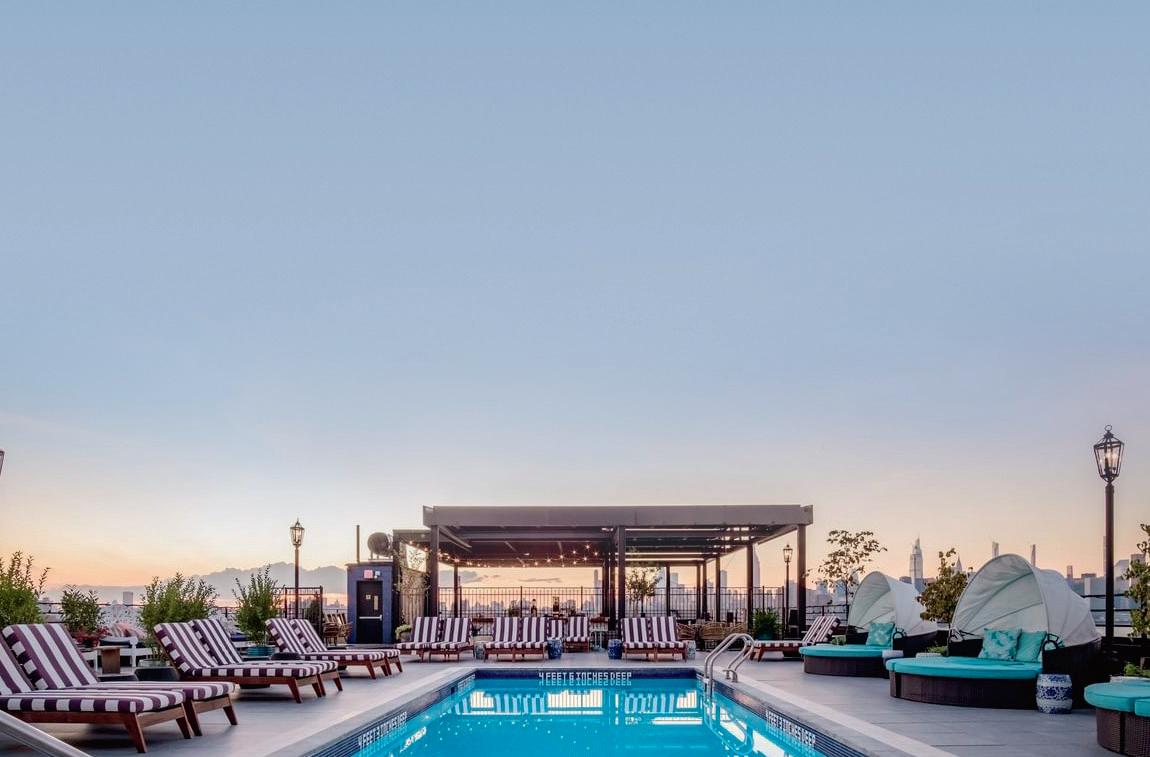
Sip cocktails at the city’s coolest rooftop bar
Step off the eclectic streets of Manhattan’s Lower East Side and you’ll stumble across zen-like Public (hotel.qantas.com.au/ publicnewyork), with its muted tones, pale wood and minimalist lines. The ethos here is “everything you need, nothing you don’t” so check-in is DIY and room service is pre-order with pick-up at the ground-floor eatery Louis. There are six bars and restaurants and communal spaces such as a front garden and blossom-filled back terrace that encourage mingling. The brainchild of Studio 54 impresario-turned-hotelier Ian Schrager, Public also features a 24-hour fitness club, retail store and rooftop “microclub”.


Just beyond the bright lights of Broadway, you’ll be transported to the New York of old-time movies. Hotel Edison (hotel.qantas. com.au/hoteledisontimessquare) opened in 1931, a year after the Chrysler Building, and the hotel’s marquee lights were switched on by none other than Sir Thomas Edison himself. Almost a century later, it has retained its elegant Art Deco style. There’s live jazz onsite at The Rum House, a piano bar where cocktails are accompanied by delicious soft pretzels, while old-world Italian-American Bond 45 restaurant offers thin-crust pizza, steak and antipasti.
Did you know? Qantas Hotels has over 540 hotels to choose from in Manhattan.
Crowning the tiny medieval village of Èze, between Nice and Monaco, Chateau Eza (hotel.qantas.com.au/chateaueza) is a fairytale castle with just 14 suites, a Michelin-starred restaurant and sparkling views of the Mediterranean. Sold? There’s just one catch: to reach this French Riviera fantasy, the final leg of the journey must take place on foot. But don’t worry, the climb takes just 10 minutes and you’ll be rewarded with epic views of Cap Ferrat. Breakfast is on the terrace overlooking the turquoise waters and you’ll want to return for lunch – a three-course affair of local delicacies and market-fresh seafood.

Choose from more than 460,000 stays worldwide with Qantas Hotels and earn 3 Qantas Points per $1 spent.1 Book at qantas.com/hotels today and keep track of your trip in the Qantas App.
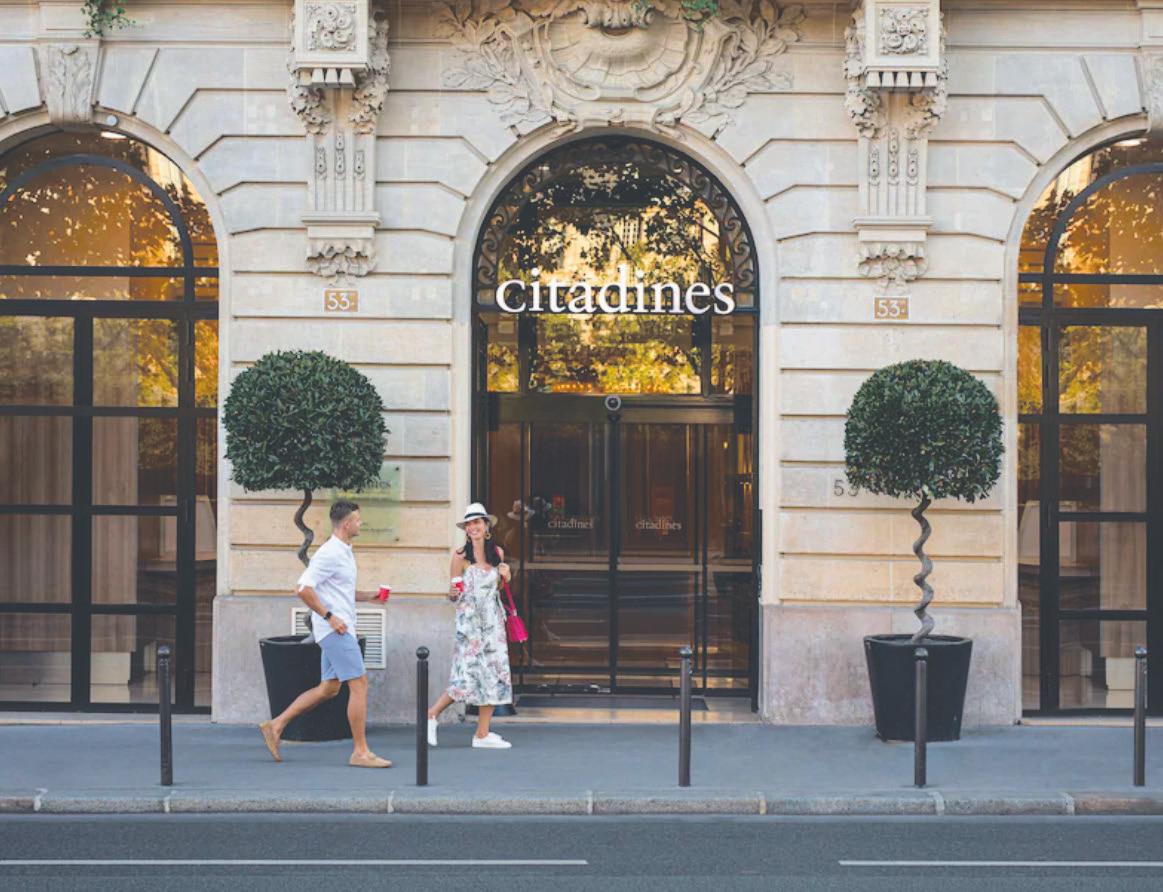
Situated in the 6th arrondissement, Paris’s Latin Quarter, Citadines SaintGermain-des-Prés (hotel.qantas.com. au/citadinesaparthotel) is the ideal Parisian bolthole. Surrounded by bookshop- and café-lined streets – and with views over the Seine – the hotel provides a comfortable sanctuary after days spent exploring nearby Notre Dame, the Louvre and the Luxembourg Gardens. The 204 apartments and studios have kitchenettes so guests can prepare any baguettes, cheese and paté they’ve picked up on their travels – and chill the champagne, of course. Choose a Studio (Seine View) for a comfy living area and pinch-me views.
Dreaming of Paris? Qantas Hotels has over 2000 hotels to choose from in Paris.


Try out the French art of living with your own maison, pied-à-terre or dreamy chateau. Search the “Countryside” category on Airbnb to discover a range of rural properties including an 18th-century villa in Provence or a castle in Thilouze. You’ll earn 1 Qantas Point per $1 spent 3 when you book your Airbnb through qantas.com/airbnb


Opened in 2016, Sofitel Wellington (hotel.qantas.com.au/ sofitelwellington) has a prime position near the city’s Botanic Garden and is steps away from the CBD and Lambton Harbour. The opulent bronze lobby, velvet upholstery and gold-edged mirrors speak of French sophistication, while floral-themed artworks and wallpaper nod to the gardens nearby. All rooms feature Sofitel’s famous MyBed mattresses, French amenities and rain showers. Splash out on a Junior Suite for a separate living area and city views.

Perched on the shore of Lake Wakatipu, The Rees Hotel and Luxury Apartments (hotel.qantas.com.au/thereeshotel) makes the most of its spectacular Queenstown location. Each of the 60 rooms, 90 apartments or five three-bedroom, three-bathroom Lakeside Residences has a balcony or patio with views across the lake to the snow-capped peaks of The Remarkables mountain range. Inside, décor is sleek and simple with merino carpets, superking-sized beds and heated bathroom floors. The hotel offers a base for epic activities like the Ultimate Queenstown Heli Wine Tour, where you’ll fly over the Gibbston Valley and Kawarau Gorge before tours and tastings at two wineries and lunch.

Be wowed by this opulent harbourside gem
The Park Hyatt Auckland (hotel.qantas. com.au/parkhyattauckland) opened to much acclaim in late 2020 on the western side of Viaduct Harbour, a short walk to the city and the buzzing Britomart precinct. The lobby, with its soaring seven-storey atrium, sets the tone for the 195 rooms that are equally spacious –standard rooms have a 47-square-metre floor plan, while some of the 23 suites offer views of the viaduct from balconies or floor-to-ceiling windows. The signature restaurant, Onemata, showcases local dishes with menus designed around seasonal availability from fishermen, farmers and artisan producers. Cross your fingers that the scampi risotto with crayfish bisque is on the menu.
Ready to discover Auckland and beyond?
Qantas Hotels has over 800 hotels to choose from in New Zealand.
NEW ZEALANDSave time – and money – when you package your flights and hotel with Qantas Holidays Follow our guide and the perfect getaway is as simple as 1, 2, 3.



Mantra PortSea in Port Douglas is light-filled, comes with three pools and a swim-up bar, is a 15-minute walk into town and, most importantly, it’s just a hop, skip and jump from Four Mile Beach.
The Grand Hyatt on Collins Street is flanked by the city’s best shopping, dining and arts precincts. The five-star hotel is a monument to luxury with its enormous suites, marble bathrooms and sophisticated bar Ru-Co.
Hilton Fiji Beach Resort and Spa has seven pools, a luxurious day spa and four restaurants to choose from – and it’s located on two kilometres of private beach on Denarau Island.
Make the most of the reef with a Full Day Reef Cruise with Scenic Heli Flight (qantas.com/activities). Visit two dive sites and see the almost-neon blues, whites and greens of islands and reefs from a chopper.
ACMI’s (acmi.net.au) Goddess: Power, Glamour and Rebellion celebrates screen legends like Pam Grier, Tilda Swinton and Marlene Dietrich and displays never-before-seen costumes, sketches and footage. Until 1 October. Pass local villages while boating down the Navua River, swim beneath a rainforest waterfall and have a traditional lunch when you book a Fiji Combo Day Tour (qantas.com/activities). Receive the best value by booking your hotel and flights together at Qantas Holidays. You’ll
For best value, bundle your hotel and flights to save. You’ll earn 3 Qantas Points per $1 spent 2 on your whole trip. Plus, you’ll also earn Qantas Points and Status Credits on your flight. Visit qantas.com/holidays TAKE A ANDPICTURE LATERBOOK
Private beaches, designer interiors and grander-than-grand swimming pools. Your next stay comes loaded with even more extras when you book with Qantas Luxury Holidays before 31 May 2023.

LUXE POOL
Sofitel Bali Nusa Dua Beach Resort
If your holiday plan is to spend maximum time in swimwear, Sofitel Bali Nusa Dua Beach Resort (qantas.com/sofitelnusadua) – newly refreshed after a revamp – is the place. At its centre is an enormous 480-metre-long water feature, a complex network of lagoons, waterways and pools. Delightfully, most of your needs can be met from within this body of water. Guests with lagoon-access rooms can swim directly to their doors and in the mornings a butler, if requested, can deliver a floating breakfast tray with fresh fruit, eggs and pastries.
X U R Y
Emerge for dinner at the poolside fine-diner Cucina for Italian-style fare such as seared bistecca, milky burrata and local seafood with tomato and white wine sauce. If you fancy a nightcap, you won’t have to go far. Manarai Beach House by Ismaya Group, located in the left corner of the hotel, is a grown-up beach club by day and sophisticated bar after dark, where there are cabanas for lounging, a restaurant serving international and Balinese cuisine, two more pools and a swim-up bar (just in case you were starting to dry off).
QANTAS HOLIDAYS LIMITED-EDITION OFFER
Book through Qantas Holidays to enjoy:
Daily breakfast
IDR3,000,000 resort credit
4pm late checkout
Three cocktails per person Yoga class for two guests
From $1867 per couple twin share for five nights
SAVE 38% or book using Qantas Points. 3 For best value, bundle with a flight to save.
Offer ends 31 May 2023. Visit qantas.com/ sofitelnusadua for more.
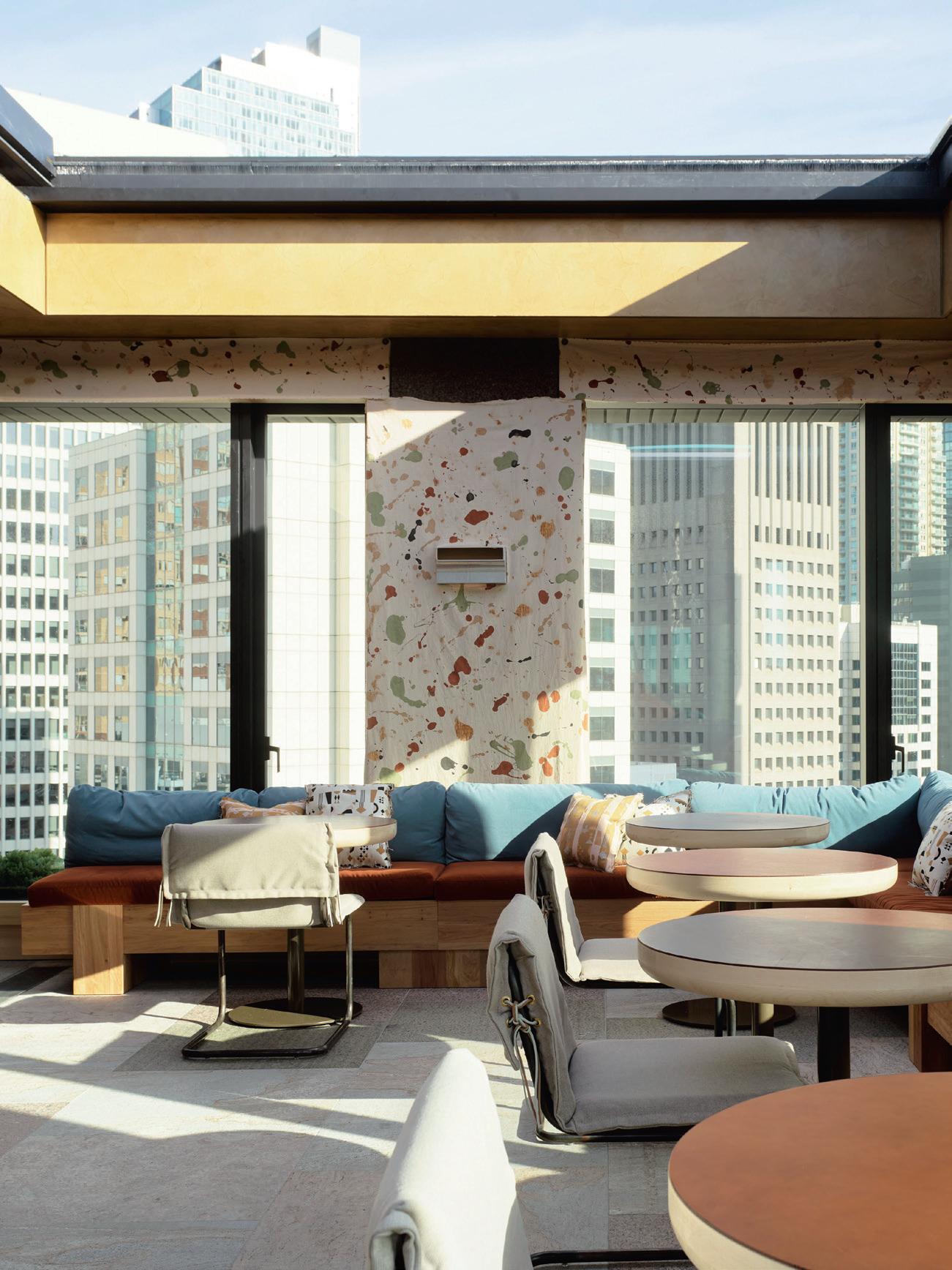
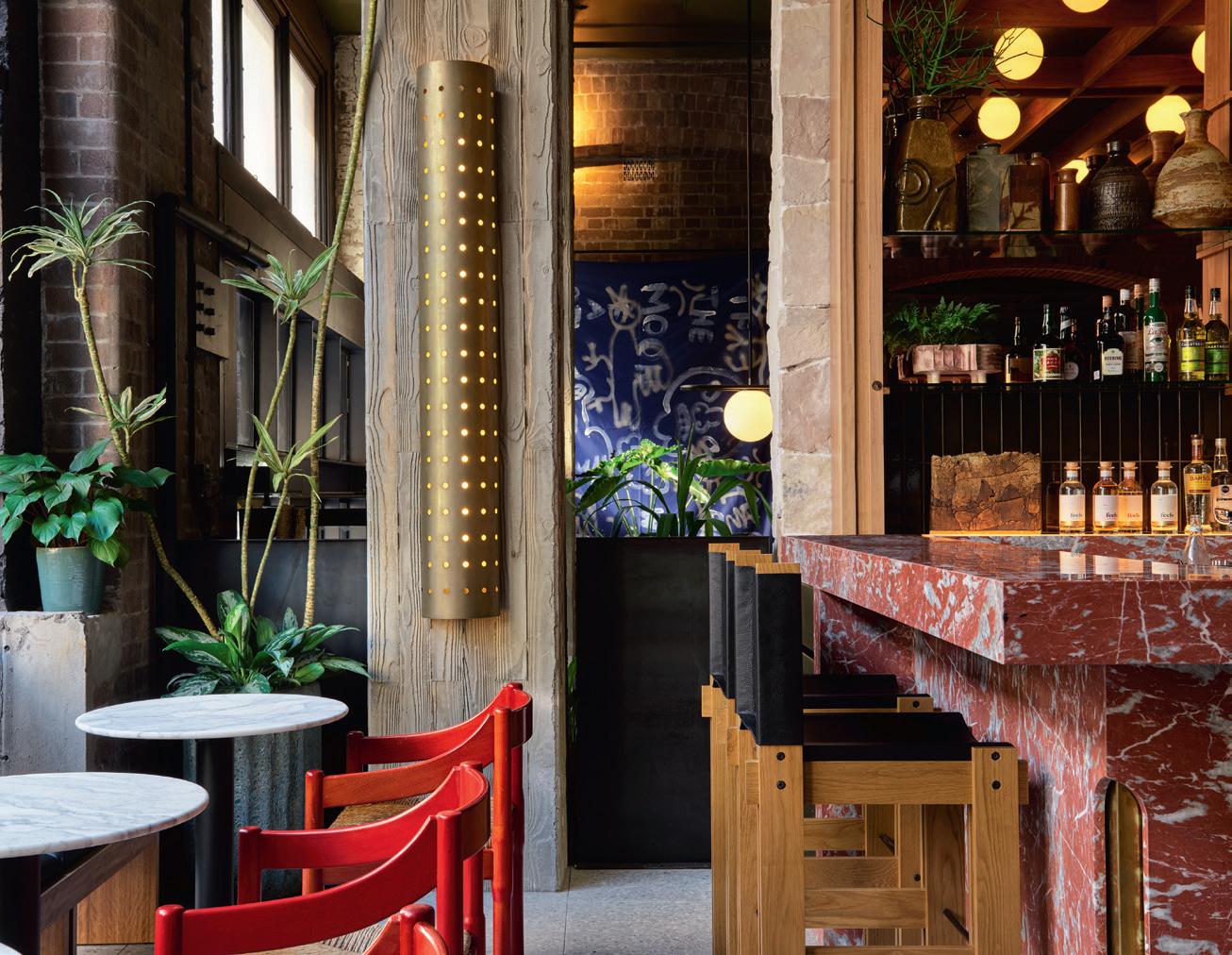
Seattle-based Ace Hotel Group is known for its unconventional approach and appeal to creative types so it’s fitting that the first Southern Hemisphere outpost is in Sydney’s Surry Hills (qantas.com/acehotelsydney).
This storied, inner-city neighbourhood is a hub for some of the town’s coolest bars and restaurants and is a short walk into the CBD.
Melbourne-based Flack Studio designed the Ace’s chic interiors with exposed brick, desert colours and the work of local artists like Nadia Hernández on display throughout. An ochre-coloured marble staircase leading from the lobby to the first floor will catch your eye, as will the front desk, which is studded with colourful ceramic blocks.
The slick vibe continues to the rooftop, where a retractable roof, paint-splattered walls and gilded ceiling help make restaurant Kiln, helmed by ex-Acme chef Mitch Orr, one of Sydney’s most playful dining rooms.
Music is a defining theme at Ace Hotels. Here, a 1970s vibe permeates, owing to the sunken lounge in the ground-floor bar and the record players and vinyl selections in rooms. Suites also come equipped with D’Angelico acoustic guitars. If an impromptu jam session happens, fuelled by a Lobby Bar cocktail designed by Mike Bennie (of P&V Merchants fame), don’t worry – the walls are soundproof.
Book through Qantas Holidays to enjoy:
Daily breakfast for two at LOAM
Two welcome drinks in The Lobby bar
5pm late checkout
10% discount on in-house food and beverage
From $599 per couple twin share for two nights
SAVE 51% or book using Qantas Points. 4 For best value, bundle with a flight to save.
Offer ends 31 May 2023. Visit qantas.com/ acehotelsydney for more.
Book your stay with Qantas Luxury Holidays and receive premium extras like late checkouts, cocktails and airport transfers. Enjoy value that can’t be found anywhere else. Don’t miss out and book today at qantas.com/luxuryholidays

voco Melbourne Central
Its heart-of-the-city location is just one of the reasons to love voco Melbourne Central (qantas.com/vocomelbourne). Part of the 380 Melbourne skyscraper, voco is sleek and modern, featuring chic interiors – a neutral palette with pops of teal and mustard – and
it’s those views over the metropolis that give you that Melbourne vibe.
The hotel is surrounded by the Garden City’s famed laneways and shops and there’s a fresh take on the city from all its vantage points, whether it’s the sixth-floor lobby’s skyline outlook or the 180-degree vistas from Blacksmith Bar & Grill’s rooftop terrace and kitchen garden (its herbs are used in meals and cocktails).
Many of the 252 rooms have views, too – particularly magical at night – thanks to floor-to-ceiling windows (even in some of the bathrooms). Plus, the windows open, reducing the need for air-conditioning and allowing the breeze to flow.
Book through Qantas Holidays to enjoy:
Daily breakfast for two Welcome drink for two 1pm late checkout
From $545 per couple twin share for two nights SAVE 38% or book using Qantas Points. 5 For best value, bundle with a flight to save.
Offer ends 31 May 2023. Visit qantas.com/ vocomelbourne for more.


QANTAS HOLIDAYS LIMITED-EDITION OFFER
Book through Qantas Holidays to enjoy:
Daily buffet breakfast at Marisa Terrace Restaurant
Palm-fringed shores, towering limestone monoliths and turquoise water: southern Thailand boasts some of the world’s most spectacular beachscapes. Not willing to share your stretch of sand with others? Thavorn Beach Village Resort & Spa (qantas.com/ thavornbeachvillage) is one of the few remaining resorts in Phuket that comes with its own private beach. The property is spread over five-and-a-half hectares of tropical gardens along the exclusive Nakalay Beach between Kamala Beach and Patong.
Choose a Tropical Garden View room for a bungalow surrounded by orchids and a short stroll to the water.
Get adventurous during the day and dive Nakalay Reef, 300 metres offshore. It was once thought to be extinct but the vibrant coral now teems with marine life, thanks to the conservation efforts of the hotel and the Department of Marine and Coastal Resources. Be sure to keep your eyes peeled for manta rays and hawksbill turtles.
Two three-course dinners per person
Five poolside cocktails with snacks per person
Two 30-minute massages per person
One-way airport transfer for two
From $1199 per couple twin share for seven nights
SAVE 50% or book using Qantas Points. 6 Offer ends 31 May 2023. Visit qantas.com/ thavornbeachvillage for more.
TAKE A ANDPICTURE LATERBOOK
When you book your next getaway with Qantas Luxury Holidays, you’ll receive premium extras – from room upgrades to spa treatments – that you won’t find anywhere else. You’ll also earn 3 Qantas Points per $1 spent, plus Status Credits on flights. 2 Don’t miss out and book today at qantas.com/luxuryholidays

Drift through the Mediterranean and float through the peaceful waters of Tahiti. Choose from the world’s best cruise lines, access special rates and offers, plus earn Qantas Points when you book your voyage of a lifetime through Qantas Cruises
Hit the seas with Windstar, an award-winning, premium, all-suite cruise line with immersive experiences. You can expect specialised, small-ship tours, an innovative dining and culinary program and the opportunity to chat with the crew and captain through their Open Bridge Policy. Highlight trips include the 12-day Great Barrier Reef & Beyond, 15-day Tasman Sea Treasures and 7-day Dreams of Tahiti.
Book your trip with Qantas Cruises before 31 May 2023 to earn Triple Qantas Points.7 Call 1300 766 566 to book.
7 days
Windstar Cruises
Departs 3 August 2023
From $6223 per person
Melt into the leisurely rhythm of island life as you glide through Tahiti and discover the luxuries of small-ship cruising, from hyper-attentive staff to rooms with ample space to unwind. From Papeete, French Polynesia’s buzzing capital, you’ll anchor in Moorea, where you can pedal past waterfalls and pineapple plantations and swim with stingrays. An overnight stay in Raiatea allows plenty of time to visit the UNESCO World Heritage-listed temple Taputapuātea marae, harvest your own pearl or search for the tiare apetahi, one of the world’s rarest flowers. A sweet, delicate fragrance hangs thick in the air in Taha’a, known as the “vanilla island” for its vast plantations of vanilla orchids, which you can tour before snorkelling technicolour reefs. In Bora Bora, bask in crystal waters or take them in from above with a heli-tour affording glimpses of manta rays and lemon sharks. With the ship docked for the night, you’ll also have the chance to see traditional fire dancing or watch the sun set into the lagoon from an overwater bungalow.

Travel in absolute luxury when you join a Seabourn cruise. The award-winning, all-suite cruise line features intimate small-ship experiences and curated voyages to all seven continents. Highlight trips include the 14-day Thailand, Vietnam and Malaysia Holiday, 32-day Hawaii and South Pacific Discovery and 25-day Mediterranean Intrigue.
Book your trip with Qantas Cruises before 31 May 2023 to earn Triple Qantas Points.7 Call 1300 766 566 to book.
Athens
18 nights
Seabourn
Departs 11 October 2023
$13,496 per person
Climb ancient castle ramparts, visit fabled sites that blur the line between reality and mythology and watch historic ports come into view from the deck. The ancient world is brought back to life as the Seabourn Encore plots a course from Athens along bejewelled coastlines, stopping off at cities and timeless villages in Italy, Malta, Croatia and beyond.
You’ll visit Greek wonders such as Naxos, the archetypal whitewashed Greek island,
and Monemvasia, a rose-tinted wonder on the south-eastern coast of the Peloponnese. Wander the narrow streets of Syracuse, Sicily’s south-eastern city, sampling gelato in sundappled piazzas. In Turkey, spend a morning at the pretty port of Marmaris on the Turquoise Coast with its fantastical Marmaris Castle dating back to the 16th century.
Malta’s tiny capital of Valletta is a golden sprawl from a distance; up close, it’s dense with late-Renaissance splendour. Take in the old town of the famously well-preserved 9thcentury Croatian port of Dubrovnik and glide through Venice’s Grand Canal. At day’s end, it’s bliss to leave the crowds for the calm luxury of the all-suite Encore ship with its pool, Patio Bar and excellent restaurants – try The Grill by Thomas Keller for steakhouse classics.
Access discounted rates and exclusive offers when you book your voyage of a lifetime through Qantas Cruises. Plus, you’ll earn 1 Qantas Point per $1 spent.7 Book today at qantas.com/cruises
Curated itineraries, local guides and bucket-list adventures await when you book your next trip with Qantas Tours


Includes return flights to Tokyo with Qantas
10 nights 4-star hotel accommodation
Daily breakfast
Local English-speaking guides
DAY 1 : Australia – Tokyo
DAY 2: Yokohama – Hamamatsu
DAY 3: Hamamatsu – Osaka
DAY 4: Osaka
DAY 5: Osaka
DAY 6: Osaka – Gifu
DAY 7: Gifu – Matsumoto/Suwa
DAY 8: Mt Fuji – Tokyo
DAY 9: Tokyo
DAY 10: Tokyo
DAY 11: Depart Tokyo
DAY 12: Arrive in Australia
$4999 per person twin share10
(From $416 per person per day)
SAVE 31% or book using Qantas Points.
Beginning in the exciting capital of Tokyo, this trip captures the elusive spirit of Japan, from its high-tech cities to its ancient wonders. First stop is Yokohama and a visit to the Cupnoodles Museum (yes, you make your own cup noodles here) before taking in a green-tea plantation in Shizuoka Prefecture.
You’ll visit Hamamatsu and sample the delicacy unagi (freshwater eel) then take a walking tour around the ancient capital of Kyoto. Board a bullet train to Osaka and join the after-work crowd in the Dotonbori district to find okonomiyaki (savoury pancake with dried bonito) and takoyaki (fried octopus balls).
On day six you’ll visit Nara, famed for its free-roaming deer, and nearby Tsumagojuku and Narai-juku, two perfectly preserved towns dating to the Edo period (1603-1868). Ascend Mount Fuji for commanding views of the Fuji Five Lakes before cruising Lake Ashinoko. Finally, you return to Tokyo for two days at leisure. Don’t miss ramen at Michelin-starred Tsuta and karaoke just about everywhere.
13-DAY TOUR
Tuscany, Rome and Amalfi Coast
Includes return international flights with Qantas 10 nights 4-star accommodation 14 meals, including daily breakfast Return airport and private boat transfers
DAY 1 : Australia – Rome
DAY 2: Rome
DAY 3: Rome
DAY 4: Rome
DAY 5: Rome – Sorrento, Amalfi Coast
DAY 6: Amalfi Coast
DAY 7: Capri
DAY 8: Sorrento – Naples
DAY 9: Naples – Tuscany
DAY 10: Montepulciano – Florence
DAY 11: Florence – Rome
DAY 12: Rome – Australia
DAY 13: Australia
$7999 per person twin share11
(From $615 per person per day)
SAVE 23% or book using Qantas Points.
With so much to see and do (and eat) in Italy, this perfectly planned 13-day trip gives visitors a taste of la dolce vita Set off with your small group on a guided tour of the Eternal City before lunch overlooking the Colosseum.
Travel south from Rome to Sorrento, with its maze of narrow alleys, charming café-lined Piazza Tasso and spectacular views of the Bay of Naples. Next it’s a boat tour along the famous Amalfi Coast, where you’ll stop at Positano, one of Italy’s most delightful coastal towns that features colourful buildings clinging to the cliffside.
After sailing north, you’ll head inland to wander around fascinating Siena and climb the 14th-century Torre del Mangia for views of the surrounding Tuscan countryside. In the medieval hilltop town of Montepulciano, visit historic cellars and sample the region’s best drops. The final destination is Florence, famous for its distinctive Duomo, shopping, galleries filled with priceless Renaissance artworks and terracotta-coloured palazzi.

Planning an unforgettable holiday is easy when you book your trip with Qantas Tours Each tour has been curated by Qantas with 4- to 5-star hotels, Qantas or oneworld® flights and premium experiences. Plus, you’ll earn 3 points per $1 spent. 9 Book your trip today at qantas.com/tours


The world’s best hotels. Expertly curated tours and cruises. Exclusive luxury packages. The next time you’re ready to travel, come to Qantas Hotels & Holidays.
Choose from more than 460,000 hotels around the world.
EARN 3 Qantas Points per $1 spent.1 USE points or Points Plus Pay.
Pack more value when you bundle your stay with Qantas flights.
EARN 3 Qantas Points per $1 spent, plus Status Credits on flights. 2 USE points or Points Plus Pay
Access exclusive luxury offers loaded with VIP inclusions.
EARN 3 Qantas Points per $1 spent, plus Status Credits on flights. 2 USE points or Points Plus Pay.
Unlock discounted rates and offers from the top cruise lines
EARN 1 Qantas Point per $1 spent.7
Make an immersive holiday easier with expertly curated guided itineraries.
EARN 3 Qantas Points per $1 spent. 8 USE points or Points Plus Pay.

Qantas Holidays
The amount you earn depends on your flights, fare class and member status. Points will be credited within 8 weeks of hotel check-out. Qantas Points can be earned on cash-only purchases and the cash component of Points Plus Pay purchases on eligible bookings and will not be earned on cancelled or refunded bookings. Conditions apply. 3 Airbnb: Qantas Frequent Flyer members will earn 1 Qantas Point per A$1 value for all Airbnb stays booked through qantas.com/airbnb. 500 bonus Qantas Points will be awarded to Qantas Frequent Flyer members who make their first Airbnb booking. 4 Sofitel Nusa Dua: Offer ends 11:59pm (AEDT) 31 May 2023, unless sold out prior. Valid for stays from 1 May 2023 to 31 March 2024. A 5-night minimum stay applies. Blackout dates apply. From price available for stays 1 May 2023 to 31 March 2024. Surcharges may apply to other dates. Offer is subject to availability, which may be limited during weekends, school holidays and major sporting events. Flights and transfers are not included. Booking cancellations and changes are permitted up to 14 days prior to check-in, after this time, you will be charged the full rate of stay unless you are entitled to a refund or other remedy under the Australian Consumer Law. This offer may be extended, changed or cancelled without notice. Prices correct as at 27 March 2023. 5 Ace Hotel: Offer ends 11:59pm (AEDT) 31 May 2023, unless sold out prior. Valid for stays from 2 May 2023 to 29 December 2023. A 2-night minimum stay applies. Blackout dates apply. From price available for stays 2 May 2023 to 29 December 2023. Surcharges may apply to other



Big Pilot’s Watch TOP GUN Edition “Mojave Desert”. Ref. 5060: The U.S. Navy pilots’ flying suits and China Lake’s barren desert landscape inspired this Big Pilot’s sandcoloured ceramic case. It is the product of a complex process in which zirconium oxide is mixed
and formed with other metallic oxides before sintering in an oven and houses an IWC-manufactured 52110 calibre with a seven-day power reserve. Together, it all adds up to a pilot’s watch optimized for uncompromising performance.
IWC. ENGINEERING BEYOND TIME. SINCE 1868.


DOWNLOAD THE IWC APP FOR VIRTUAL TRY-ON
IWC-manufactured 52110 calibre · Pellaton automatic winding · 7-day power reserve · Date display · Central hacking seconds · Water-resistant 6 bar · Diameter 46 mm
IWC BOUTIQUE · 84 KING STREET · SYDNEY
STORY BY
PHOTOGRAPHY BY DAVID CROOKES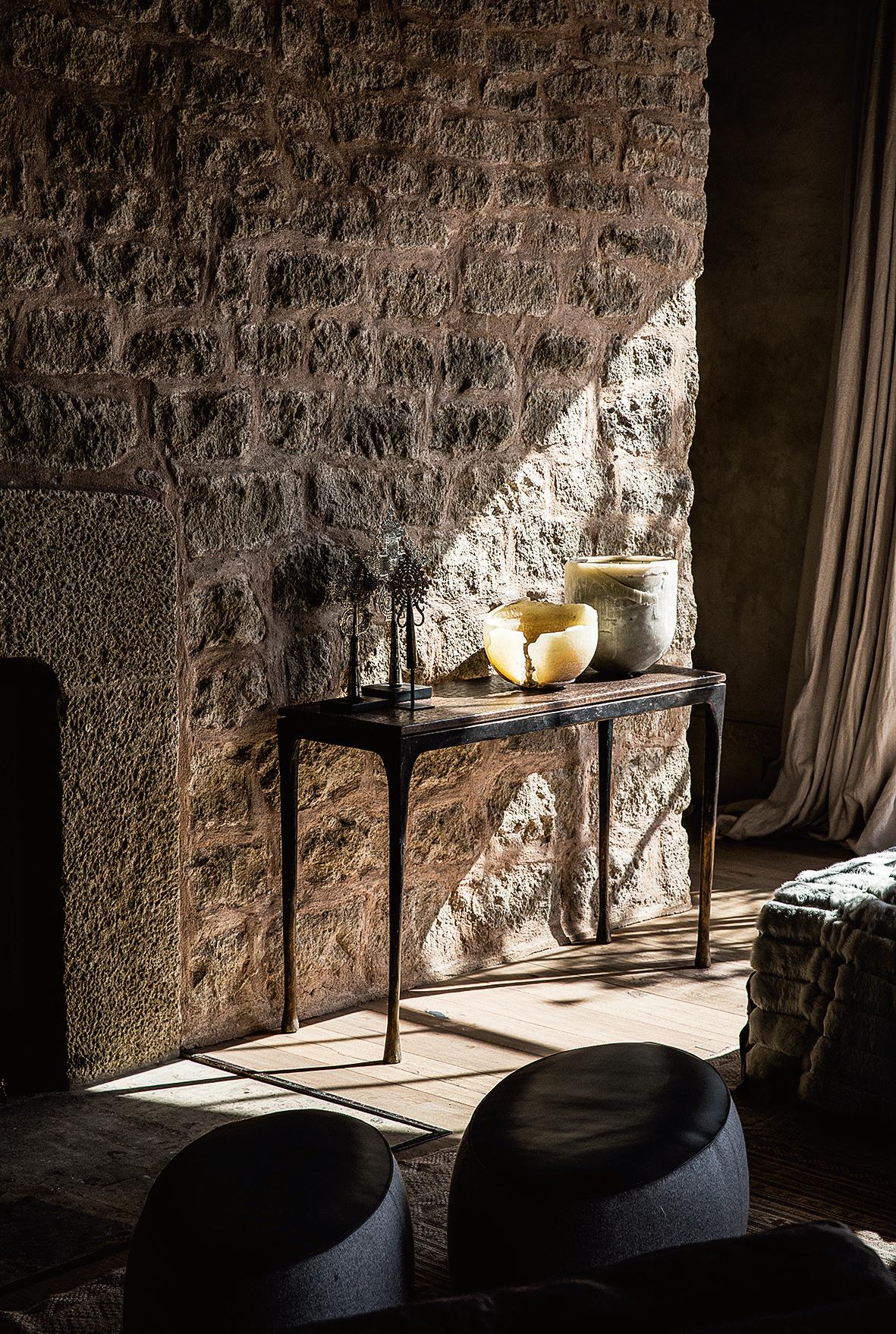
An exquisite stay that blends seamlessly into the Kenyan landscape and welcomes elephants at the pool.
“There are places you go that humble you,” says London-based architect Alex Michaelis. An hour’s flight north of Nairobi, in the foothills of Mount Kenya, Arijiju (arijiju.com) is one such place. Bordered by mountains, forest and desert, “it has such an enormous, incredible landscape that you feel quite small,” says Michaelis, who spent a decade working on the project.
Constructed with local stone, the retreat blends so seamlessly into its surroundings, guests often don’t spot the house until it’s right in front of them. That “small” feeling is magnified by the fact that the only people around are a maximum of 10 guests and an unobtrusive team of staff.
The five-suite exclusive-use property is a masterclass in understated elegance, with copper bathtubs, open fireplaces and crumpled linens. “Within a couple of days you change your beat. It’s calming and there’s hardly any signal so there are no interruptions.”
Well, not from the modern world. “When the birdsong starts in the morning, it’s like a symphony. It’s quiet in the warmest parts of the day then it starts again in the evening. The animal noises are incredible.”
Built in the Borana Lewa Conservancy, the retreat allows for the free movement of wildlife. “You see lions, buffalo, zebra and lots of different antelopes. And the elephants have decided they quite like to drink from the pool so you can be swimming or having a coffee out there and they appear five metres away. It’s more magical than a game drive.”

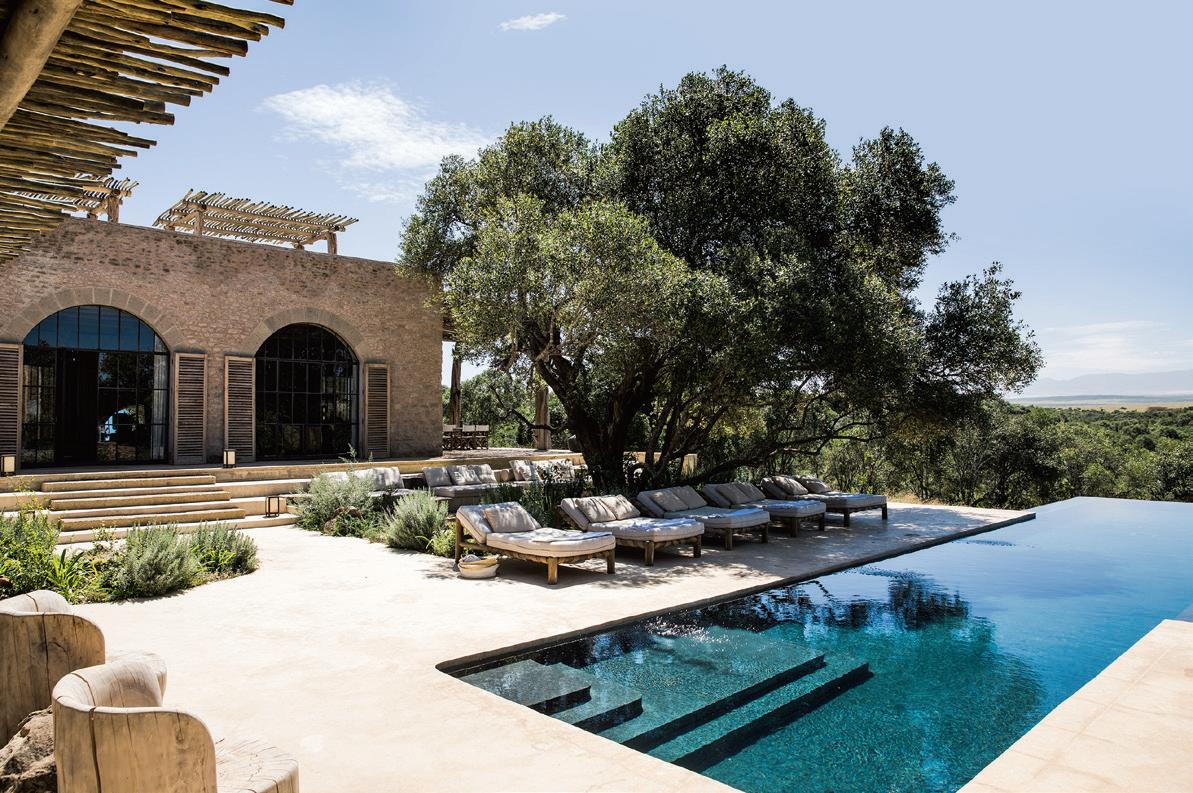


Clara Adolphs spends much of her time trawling through op shops and deceased estates, eBay and dusty encyclopedias, looking for old photos to inspire her art. She can’t explain what she’s looking for but she knows it when she sees it – usually a picture that dates from the 1940s to 1960s, one with a mysterious, universal quality that makes the anonymous figures seem somehow familiar. “I like when you can’t really see where it’s from,” she says. “It keeps me guessing and can keep the audience guessing.”
Intrigued by notions of time and memory, the 37-year-old UNSW Sydney fine arts graduate has become known for her dreamy impasto paintings, often of people swimming, skiing or sunbaking. The photos she starts with lack detail – like fuzzy memories – so when Adolphs blows them up into works sometimes 2.7 metres wide, she has to fill in the blanks: if they’re black and white, she opts for a muted palette that won’t distract from her subjects; she might take figures out or add others in. She works speedily with brushes and palette knives to capture the feeling of a fleeting moment. “I like to keep the painting alive by working quite quickly – I don’t get bogged down in detail,” says Adolphs, who is based in the NSW Southern Highlands town of Bundanoon and has an exhibition at Adelaide’s Hugo Michell Gallery until 20 May. “You allow the paint to do its own thing. I’m trying to discover what the truer evidence of time is – the photograph or the painting?”
Like old photos, Adolphs’ paintings allude to a constancy, suggesting that our experiences aren’t so different from those of our grandparents. “The wider world and society might change but the human condition doesn’t.” The youngest of three girls who grew up in Sydney’s suburban north, Adolphs has always savoured flipping through her family’s photo albums so she finds it shocking, and a bit heartbreaking, that so many snapshots are thrown away. “They just get chucked out because people don’t know what to do with them. It’s almost like I’m saving them.”
In her nostalgic paintings, this artist uncovers the constancy of human nature.
Exhibited at:
HOTA, Gold Coast; Chalk Horse, Sydney; Hugo Michell Gallery, Adelaide; Art SG, Singapore.
Awards:
Eva Breuer Travelling Art Scholarship, 2017; Archibald Prize finalist, 2016 and 2019; Sulman Prize finalist, 2019 and 2021; Wynne Prize finalist, 2022; Brett Whiteley Travelling Art Scholarship finalist, 2012, 2013, 2015 and 2016.
Breakthrough moment:
As part of the Eva Breuer Travelling Art Scholarship, Adolphs was awarded a residency in 2018 at the Cité Internationale des Arts in Paris, where she reinvigorated her arts practice.
What the critics say:
“In transforming faded memories into contemporary paintings, Adolphs invites her viewers into a stranger’s world, where the narrative possibilities can be pushed and pulled as readily as paint across canvas.”
– Chloé Wolifson, Vault magazine
Foundations
AS TOLD TO RACHEL LEES
PHOTOGRAPHY BY RORY GARDINER

In spa country, a shed containing a hidden world has captured the imagination of Fremantle architect Emma Williamson.

In 2019, I was on the jury for the National Architecture Awards. Over two weeks, four jury members and I raced around Australia looking at a shortlist of projects. Daylesford Longhouse had won the Victorian chapter award [Residential Architecture]. We arrived on a cold, windy day and the owners opened a large sliding door so we could drive inside. The idea that you could drive your vehicle into a house felt crazy; it was like going into a spaceship or something.
The building has a recognisable shed vernacular on the exterior. Inside is a beautiful, intimately scaled interior world that’s a combination of buildings and gardens, which are all interconnected. The 110-metre-long shed has a private residence, agricultural space, commercial kitchen and vegetable garden. It’s so flexible; it has the capacity to be both a public space and quite private.
What struck me was the scale of the house. It was almost like a small apartment with very modest spaces, the minimum you need to sleep, make a meal for two or sit by the fire. The owners wanted to collect a certain amount of water so they calculated what the size the roof would need to be and that determined the scale of the house. It didn’t come from an “I want” or “I need” consumption of space.
The inventiveness of taking an ordinary, ubiquitous element of the Australian landscape – the shed – and creating a world inside it is beautiful. It’s reflective of the work of Timothy Hill, the principal architect of Partners Hill, who has the capacity to have a big idea then take it down to the details so you get moments of delight. Take the commercial kitchen, where workshops are held in pickling, butchering, cheesemaking and the like. The house can also be rented as an Airbnb.
This project uses ordinary materials in inventive ways. It doesn’t depart much from the material palette you might expect to find in a shed but consideration has been given to the junction of timbers and the way openings are framed – some of those elements feel quite Japanese. It has both a spectacular scale and a modesty of scale and one sits inside the other to create this world. The project is so singular, it holds its own while having a humility to it.
Emma Williamson co-founded TheFulcrum.Agency (thefulcrum.agency) in Fremantle in 2018, a creative consultancy that addresses inequality using evidence-based design thinking.

If things had gone to plan, Frank Gehry’s whimsical cardboard Wiggle side chair may only have been found in trailer parks and college dorms across the United States. Originally conceived as a cost-conscious design, it came out in 1972 as part of the Los Angeles-based architect’s 17-piece Easy Edges series. The New York Times labelled it “paper furniture for penny pinchers” and predicted that the then US$37 chair would ultimately end up in low-income housing. Instead, the fanciful furniture-art combo landed in New York’s Museum of Modern Art and the homes of discerning design-lovers around the world.
With its unconventional material and curvy form, the Wiggle encapsulates Gehry’s design genius. Born in Canada in 1929, the Pritzker-winning architect is perhaps best known for such blockbusters as the titanium-clad Guggenheim Museum Bilbao in Spain and the wavy stainless-steel Walt Disney Concert Hall in downtown LA.
Once an innovative example of frugal design, this playful piece now sits in museums.

The Wiggle is fashioned from layers of corrugated cardboard glued together in alternate directions, making it so strong Gehry said it could “support a small car”, and was designed as an antidote to what he called the “ponderous, overpriced and tyrannical” furniture of the time. It proved so popular, however, that Gehry stopped production after only three months, fearing its success would dwarf his reputation as an architect. The chair is now produced under licence by the Swiss design firm Vitra and is available in Australia for $2215 at Living Edge (livingedge.com.au).
“It’s exactly how Frank Gehry designs buildings – it has that curve and sway to it,” says Melbourne interior designer and stylist Zoë Murphy, who owns a Wiggle side chair and stool. She notes that the 1970s aesthetic is growing in popularity, including hero pieces such as the Wiggle. “That era of furniture was a little bit outrageous.” Just as Gehry aimed to “humanise” his buildings, he created the Wiggle with its own character, as big on comfort as it is on quirkiness.











flooring design for a better environment







The Little Black Dress
When a garment gets its own acronym, you know it’s here to stay. And the LBD has long been shorthand for chic simplicity.
A classic is born
In 1926, Gabrielle “Coco” Chanel, who had already introduced ease into women’s wardrobes, designed a dress in black crêpe de chine with long slim sleeves and a drop waist and that fell just below the knee. A sketch of the dress appeared in the October 1926 edition of American Vogue, which described the style as “the Chanel ‘Ford’ – the frock that all the world will wear”, in reference to Ford’s then ubiquitous Model-T car. The use of black was the most shocking element – until then the colour was reserved for women in mourning or those in religious orders. From this point on, it was co-opted into the wardrobes of women the world over.
Fashion changed dramatically after World War II; skirts became shorter and women embraced more casual attire, including pants. Christian Dior’s New Look of 1947 transformed the face of fashion and the LBD was reinterpreted with cinched waists and full skirts throughout the 1950s. In the 1960s, Spanish designer Cristobal Balenciaga turned the concept upside down, literally, with the inverted triangle “envelope” dress of 1967, crafted from silk gazar. Not to be outdone, French provocateur Yves Saint Laurent created a scandal the next year with his see-through chiffon gown, adorned with a well-placed belt of ostrich feathers.
Arguably the most iconic LBD of all time was the result of one of fashion and film’s greatest pairings: designer Hubert de Givenchy and actor Audrey
Hepburn. He said she gave life to the clothes and she said his designs – which she wore on screen and off – were the only ones she felt the most like herself in. Having first met creating costumes for the 1954 film Sabrina (in which Hepburn wears a delightful bow-trimmed LBD), the duo again worked together on the 1961 classic Breakfast at Tiffany’s. In the opening scene, Hepburn as Holly Golightly steps out of a New York taxi in the early morning to gaze into the windows of Tiffany & Co., pastry in one hand, coffee in the other. Her black column dress, while simple from the front, featured a cut-away detail at the back (left). In 2006, the dress went for auction at Christie’s in London, where it sold for £467,200 (about $870,000), more than six times the estimate.
In the 1990s, the LBD’s minimalist style appealed to designers Helmut Lang and Calvin Klein, while Versace –never one for understatement – propelled Liz Hurley to fame when she accompanied then boyfriend Hugh Grant to the premiere of Four Weddings and a Funeral in 1994 wearing the brand’s safety-pin dress. But it was Diana, the Princess of Wales, who turned it into a statement that same year, wearing an off-shoulder design by Christina Stambolian. Diana wore her LBD to a gala on the same night an interview with Prince Charles, in which he admitted he’d been unfaithful, aired on British TV. Her dress, cut above the knee, was dubbed “the revenge dress” and is obsessed over to this day.








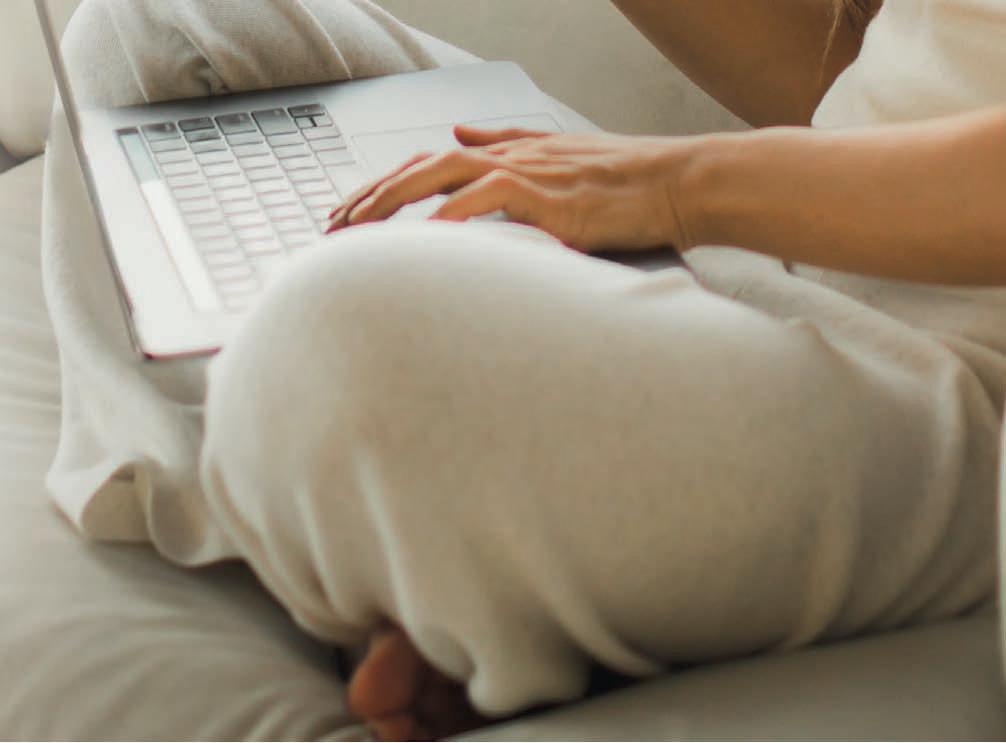
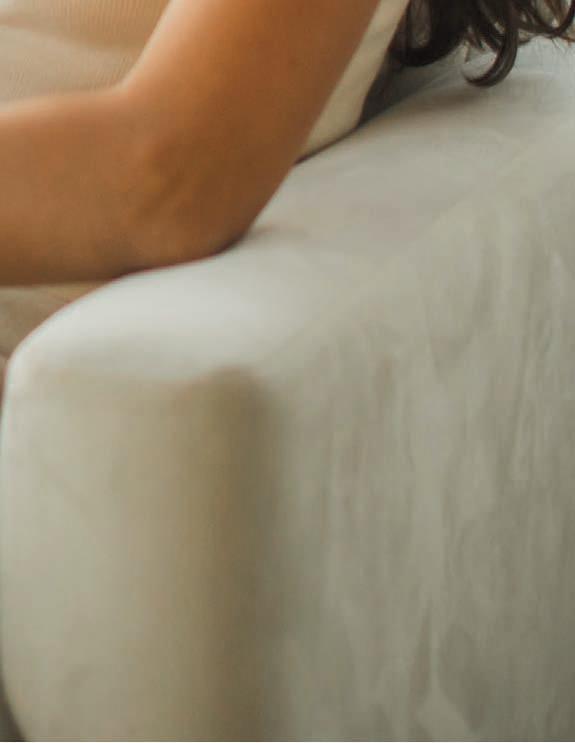





The piece: Christian Kimber Fitzroy chore jacket

Editor’s note: With a cut taken from Industrial Revolution France, responsibly sourced suede from Tuscany and a colour seemingly baked under the sun in Australia, where it was conceived, this ready-for-everything jacket has global credentials stitched into its reinforced seams.
Wear it with: This is slow fashion for a fast-paced life so a textural mix of rich tones, interesting finishes and considered detail is what’s required. The straight cut through the body means it can shrug over T-shirts and shirts, as well as knitwear when it’s cooler. Team with jeans of any shade.
Price: $1750 / christiankimber.com






With influences ranging from the Queen of Naples to American muscle cars and Japanese craft, these are the latest releases in the world of watches.
When did a stranger last stop you in the street and ask if you could tell them the time? Back in the day, this was hardly an unknown occurrence. The question was sufficiently established to even have its own performative ritual – the inquirer furrowing their brow in a quizzical manner while using their forefinger to lightly tap the outside of their wrist.
Such encounters rarely happen now, of course. For as well as facilitating a diverse range of vital functions – banking, scrolling Instagram, playing Wordle – our phones tell the time with a level of precision that would make a watchmaker weep.
You’d expect that this would have made traditional watches redundant. Our wrist-bound sidekicks should’ve gone the same way as fish knives, fax numbers and affordable housing in places you actually want to live. Weirdly, though, that hasn’t happened. The watch industry continues to thrive.
In fact, people seem to get more excited about the release of a new watch than they ever did before. Last year, when Swatch collaborated with Omega to launch the Bioceramic MoonSwatch, police were called to Melbourne’s Chadstone shopping centre to subdue the jostling crowds, who were lined up and desperate to nab one of the $380 timepieces. And demand has also intensified
at the top end of town, with waiting lists for many luxury watch brands now an inevitable part of the purchase experience.
In March, the Watches and Wonders fair in Geneva reflected this sharpening interest. Patek Philippe, Cartier and the like presented their latest novelties and this year’s event broke attendance records with 43,000 visitors, including 12,000 members of the general public stumping up $113 for a ticket.
What’s driving this hunger? Partly there’s a greater awareness of the potential investment returns from reselling covetable timepieces on the secondary market. Plus, the rise of digital media has made the watch world more accessible and buyers much better informed. Counterintuitively, the Apple Watch may also have stimulated demand. Some years back, I asked Jean-Claude Biver, the industry legend and former president of the LVMH Watch Division, whether he believed smartwatches posed a threat to the Swiss watch industry. “Not at all,” he replied. “They’ll bring the attention of a new generation back to the wrist.”
I thought this was wildly optimistic then but I’m less sceptical now. The wrist – that often overlooked articulated joint connecting our hands to our forearms – may finally be having its moment in the sun.


1
Grand Seiko Spring Drive
Lightly textured and coloured a beguiling shade of midnightblue, the dial on the SLGA021 model is inspired by Japan’s Lake Suwa at dawn. But a poetic backstory is well supported by robust functionality courtesy of the Spring Drive movement’s power reserve of five days.
$13,600 / grandseikoboutique.com.au
2
Breitling Top Time Classic Cars
Breitling’s Top Time collection pays tribute to four legendary cars, from the Ford Thunderbird to the Shelby Cobra. But only one, the Chevrolet Corvette (pictured), will have you whistling Prince’s classic anthem about the aftermath of a one-night stand.
$10,890 / breitling.com
3
Van Cleef & Arpels
Sweet Alhambra
Subdued tones of rose-gold meet the scarlet intensity of carnelian gemstones in this jewellery watch made up of nine interlocking fourleaf clovers, the Alhambra motif. Inside the biggest of these is an unobtrusive watch dial, beckoning you into a horological game of hide-and-seek.
$27,800, available from June / vancleefarpels.com
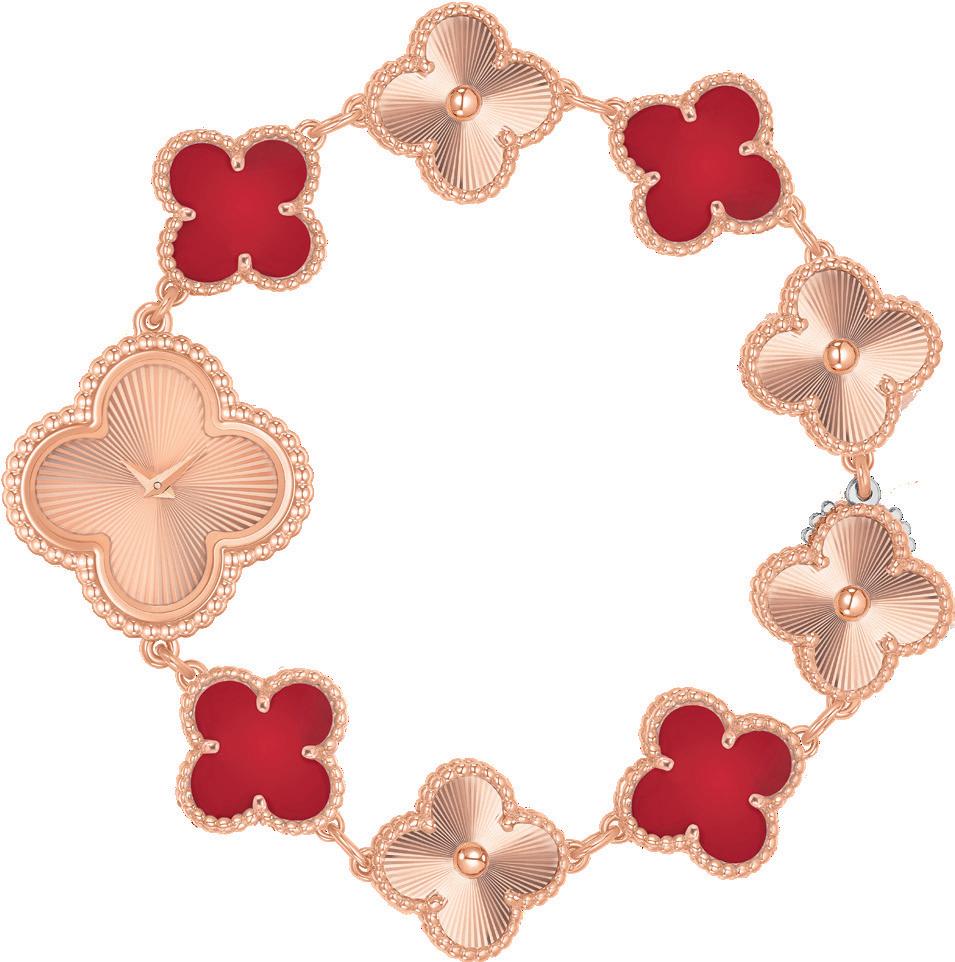
1

Panerai Radiomir Otto Giorni
Remaking its 1936 prototype, Panerai applied a PVD coating to the 45-millimetre case to give it a suitably tarnished look. Rather less old-worldly is the watch’s eight-day power reserve, courtesy of a manually wound movement that’s visible through the sapphire display case back.
$14,800 / panerai.com
2
Longines Spirit Flyback
The Spirit line already offered some of the best-value pilot’s watches around. Now comes the Flyback chronograph –a complication that Longines invented in 1925 – featuring a stopwatch that can be halted, reset and restarted with one push.
$6725 (on strap) / $6900 (on bracelet) / longines.com
3
Breguet Reine de Naples
In 1810, the Queen of Naples commissioned the world’s first wristwatch from Abraham-Louis Breguet. The influence of that relationship is still ticking along with this mother-of-pearl dial housed in an 18-carat gold case bedecked with 118 diamonds, including a glittering standout at six o’clock.
$55,800 / breguet.com




Bulgari Serpenti Seduttori
The Serpenti’s bi-metal form of stainless steel and rose-gold winds delicately around the wrist, a hexagonal pattern on the bracelet resembling the scales of a snake. A lacquered black dial mimics the reptile’s head, while the quartz movement inside prevents the price tag from taking the hiss.
$12,700 / bulgari.com
TAG Heuer Carrera Date
The Carrera celebrates its 60th birthday this year. Retaining the neat case size of the original at 36 millimetres, this unisex model proves that there’s still plenty of life in the collection yet, with a neon-coloured dial that’s not so much hot-pink as blazing flamingo.
$4600 / tagheuer.com
3
Seiko Presage
Urushi lacquer is an ancient decorative art used in Japanese craft on fine objects such as furniture and tableware. Now its magic is brought to the wrist on this glossy copper-brown dial set off by details in white and gold.
$2950 / seikowatches.com

3


IWC Pilot's Watch Chronograph 41 Top Gun Oceana
You know your favourite pair of jeans? Well, this watch is an even better shade of blue. The case once again highlights IWC’s expertise with coloured ceramic, while the matching blue rubber strap is topped with a denim finish. Sized at 41.9 millimetres, it’s seriously wearable, too.
$17,300 / iwc.com
The latest remix of the Santos de Cartier delivers a bottle-green dial, its dark hue glowing moodily against the polished steel case. In two sizes – 35.1 millimetres and 39.8 millimetres – the watch comes with both a steel bracelet and a green alligator strap.
$11,200 (medium) / $12,200 (large), available from June / cartier.com.au
2
Hublot Square Bang Unico Black Magic
Menacing and futuristic, this Square Bang is the sort of watch a killer robot might wear. Inside the 43-millimetre ceramic case, the open dial exposes the Unico 2 chronograph movement to give both an architectural sense of depth and bags of wrist presence.
$36,600 / hublot.com


Patek Philippe Calatrava Pilot Travel Time Chronograph
From a technical perspective, Patek’s Pilot watch line receives a first-class upgrade in the form of this flyback chronograph with dual time and date indications. Visually, the retro swagger is intact on the blue-grey dial, housed in a white-gold case.
$110,600 / from J Farren-Price, jfarrenprice.com.au
2
Chopard Alpine Eagle 41 XPS
The Alpine Eagle spreads its wings in an ultra-thin model that measures just 3.3 millimetres thick but still has a chronometercertified movement. Further upping the elegance factor is the salmon-coloured dial, which would go beautifully with a copy of the Financial Times
$35,800 / (02) 8197 6007
3
Vacheron Constantin Overseas
Chronograph Panda Panda dials are so called because the black sub-dials on the white face evoke the beloved bamboocrunching bear. Here, the highcontrast design is amplified by the polished bezel and brushed steel case to deliver a luxury chronograph experience.
$51,500 / vacheron-constantin.com
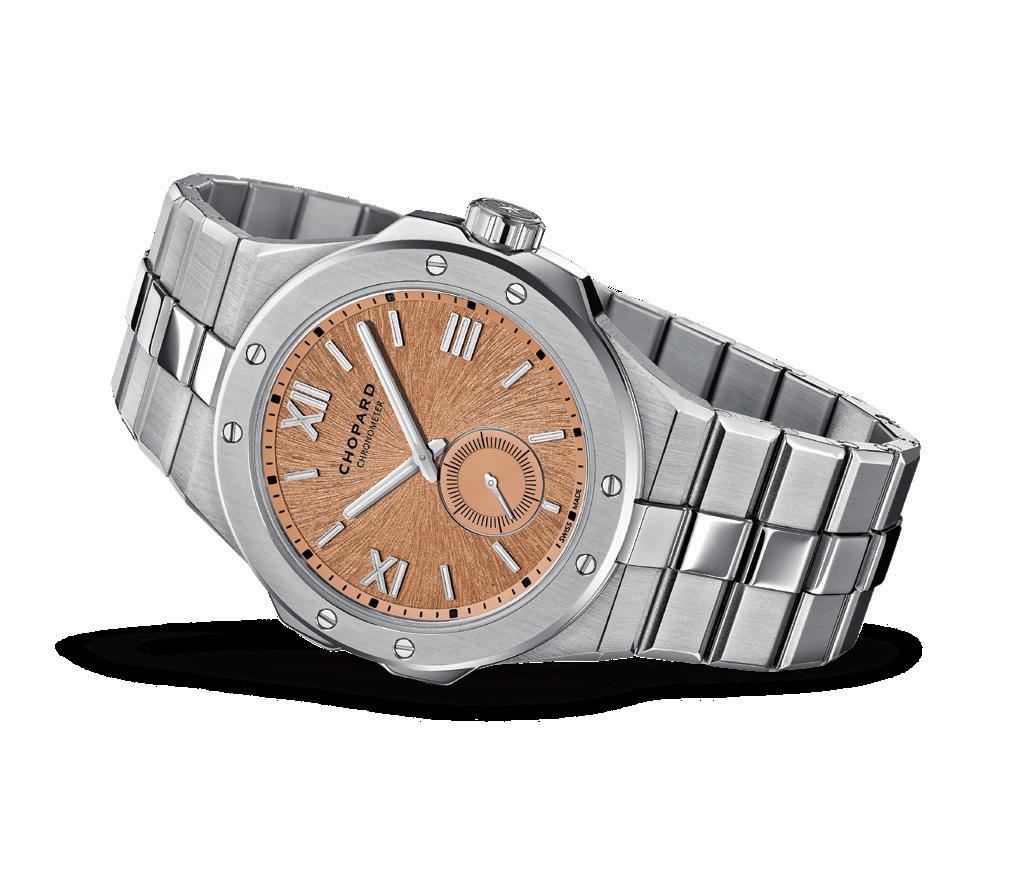

A family beach escape. A luxe resort. Or maybe an off-grid adventure. Whatever holiday you’re dreaming of, make it a reality sooner by boosting your Everyday Rewards points to earn more Qantas Points.

Download the Everyday Rewards app
Your Everyday Rewards Card will always be in the palm of your hand so you never miss a scan. Plus, have easy access to points boosters, which are special personalised offers that help you collect more points.
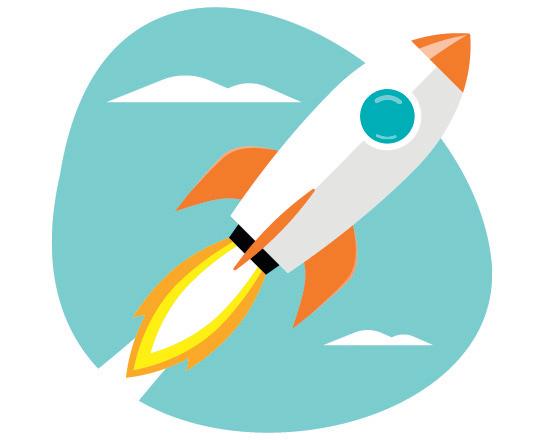
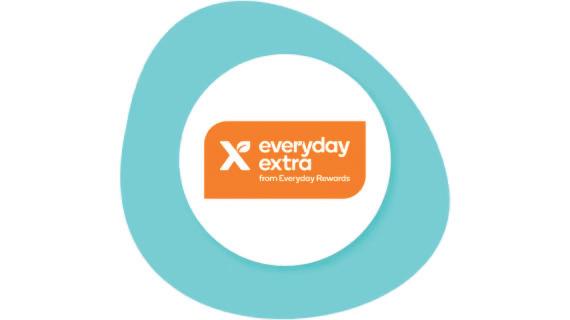
Remember to hit “boost” before you shop at Woolworths, BIG W, BWS and more. You can do this through the Everyday Rewards app or via email. Members who regularly boost collect seven times more points on average than those who just scan their card. That’s an extra 24,500 Qantas Points a year.*
Join Everyday Rewards and link your Qantas Frequent Flyer account
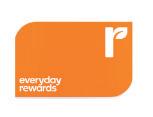
Earn three times the Everyday Rewards points
Subscribe to Everyday Extra online or via the app to get 10 per cent off one shop every month at both Woolworths and BIG W. You’ll also receive three times the Everyday Rewards points on every Woolworths and Big W shop. Try it for free for 30 days then pay just $7 a month.
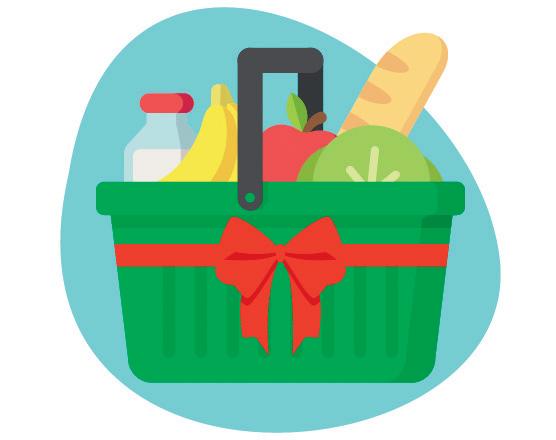
Spending big? Claim those points
Keep an eye out for when big-ticket items and gift cards have boosting offers to maximise your Qantas Points conversion. You’ll find these offers in the Woolworths catalogue or your local store.
3. Shop and convert Shop at Woolworths, BIG W, BWS and more




What are the risks and rewards of leaders jumping from one industry to something completely different? Three people who were courageous enough to make the change share their learnings with Jane Nicholls.
Executive education is overflowing with courses to upskill leaders as they navigate the challenges of transitioning to management roles. There’s precious little guidance, however, about moving from one industry to another.
“Australian corporates tend to play the safe game and appointments from outside the sector are not common,” says Gregory Robinson, managing partner at executive search firm Blenheim Partners. But an outside appointment can signal a mandate for change, he adds.
Robinson acknowledges there are significant challenges for people who lack company- and industry-specific knowledge. “Going into the new environment, they will have to build relationships and further develop their understanding of the business and its customers. There will naturally be detractors so inspiring confidence with the workforce is another challenge.”
Nevertheless, he still sees potential for upsides. “The senior manager who has only seen one sector or company may stick to the tried and tested. Complacency is a killer.”
Here, three leaders who have made a significant sector skip reveal how it happened – and how it’s going.

PREVIOUS Market director (ANZ), Tiffany & Co.; head of retail,
“I was good at maths at school so I fell into accounting,” says Penny Ferguson of her early career as a chartered accountant. “But I really like people and being part of a business.”
In 2008, she joined Tiffany & Co. as finance manager. “I love working on one business in a team, rather than me saying, ‘Here’s your tax return’.”
During her almost 14 years at Tiffany, Ferguson had three children and became
market director, before joining luxury Australian pearl company Paspaley in 2021 as head of retail. But her feet were itchy for “a change of industry, outside of luxury retail”, she says.
So in 2022, Ferguson “put the feelers out” with recruiters for a range of different industries and Jaguar Land Rover came knocking. “I could see a lot of change was happening in auto, particularly with electrification, and I thought I could apply my skill set. That’s how I ended up leaping from pure-play retail into automotive.”
There were nerves, she concedes, but she went into it with “an open mind and willingness to learn”.
After more than a decade building up a network in luxury retail, she had to start “from ground zero and build credibility and trust with key players”. The automotive industry, she says, “looked so huge from the outside, I wondered how I would get to understand how it operates – all the products, so many acronyms. It’s like another language.”
But although Ferguson says she found the move “overwhelming, particularly in the first few months”, she discovered
that the industry was smaller than she imagined and she was “blown away” by the generosity of their retailers and investors, as well as managing directors from other brands.
Could it be that automotive is less cutthroat than luxury retail? “At Tiffany, you wouldn’t get caught talking to anyone from Cartier. But this is really different –we meet all the time, share things we’re struggling with, things that are working. It’s much more collaborative.”
Ferguson was able to apply her financial brain to a very different P&L and balance sheet, courtesy of essential retail investors “who would sit me down and show me key things about the industry – there are a lot more zeroes”.
Learning new things has been a thrilling part of the ride. “It’s been hugely rewarding to learn and grow and have my eyes opened to new things.” And that definitely flows two ways. “A fresh perspective gives you a different angle and my focus always comes back to putting our clients at the heart of everything we do.”
Arriving at a time of transition is perhaps more comfortable for an outsider, too, and Jaguar Land Rover’s sustainability push – including the rise of EVs – aligns with her personal values and calls for different thinking. Ferguson wants to “engage with change and be at the

NOW CEO of CRC TiME (Cooperative Research Centre for Transformations in Mining Economies)
PREVIOUS Academia, biodiversity and agriculture program management
The career trajectory of Dr Guy Boggs could appear to be well-planned but his decisions to move on – and try new things – have all been based on personal values and interests.
“
It’s been hugely rewarding to learn, grow and have my eyes opened to new things. A fresh perspective gives you a different angle.
”
forefront of it”. She’s certainly happy with how her change of gears has worked out.
“We should be doing it more; you can get pigeonholed,” Ferguson points out. “You can apply so many skills across different industries and the reward of continual learning in another industry is amazing. It really is refreshing personally and for the business that you move across to. But you need to have an open mind, be humble and understand that you don’t know everything. It’s okay to sit in a meeting and say, ‘Sorry, can you go through that again?’ If you sit there and pretend, it’s going to be a lot harder.”
In 1995, Boggs began a Bachelor of Science at The University of Western Australia (UWA), wanting to “work with different communities to improve how we manage the environment”. He moved to the Northern Territory when he applied for a job and a PhD scholarship there. “The scholarship was based in Kakadu National Park and I took it not because of a career objective but because it sounded like the most fantastic experience.”
Despite the PhD, he hadn’t thought about academia until his former supervisor suggested he return to UWA, where he became a lecturer in the School of Earth and Geographical Sciences. “I loved the freedom of the research environment and teaching,” he says. “Universities are an interesting environment for open thinking – and also the energy that comes from students exploring their own way in the world – and working with other academics.”
He returned to the NT as a senior lecturer at Charles Darwin University but after about eight years, “I thought, ‘Hang on, I’m teaching information systems for business and government and I’ve never worked in industry or government myself.’ I felt I lacked a bit of credibility so I got a job in natural resource management in sustainable agriculture.”
Everything shifted. “I went from valuing how many publications you wrote and how much grant funding and how many PhD students you attracted, to being funded to deliver on-the-ground outcomes and completely different measures for success. It was a shock but one of the best learning experiences I’ve had.”
While academic colleagues told him that time in another industry “won’t be valued” and even had the potential to hold him back, he held fast to the change. “I thought that stepping out of academia would bring value for the next part of my career – and it did.”

Glencore is one of Australia’s largest suppliers of coal, cobalt, copper, nickel and zinc. We support the energy needs of today while supplying the metals required for advancing tomorrow. Advancing everyday life.
glencore.com.au
The first year was a steep learning curve, which he climbed by being open about what he didn’t know while also being confident in the worth of his scientific knowledge. “I sought out mentors and people with shared values.” As the newcomer, Boggs says it’s important to “constructively manage” the strengths you’re bringing and to understand the success measures for the industry and how your work can contribute to them “to build credibility and trust”.
His journey into agriculture also revealed broader opportunities. “There’s a sweet spot to optimise industry and academia,” says Boggs, who joined The Western Australian Biodiversity Science Institute (WABSI) in 2016. “It’s government-funded and is there to get universities working
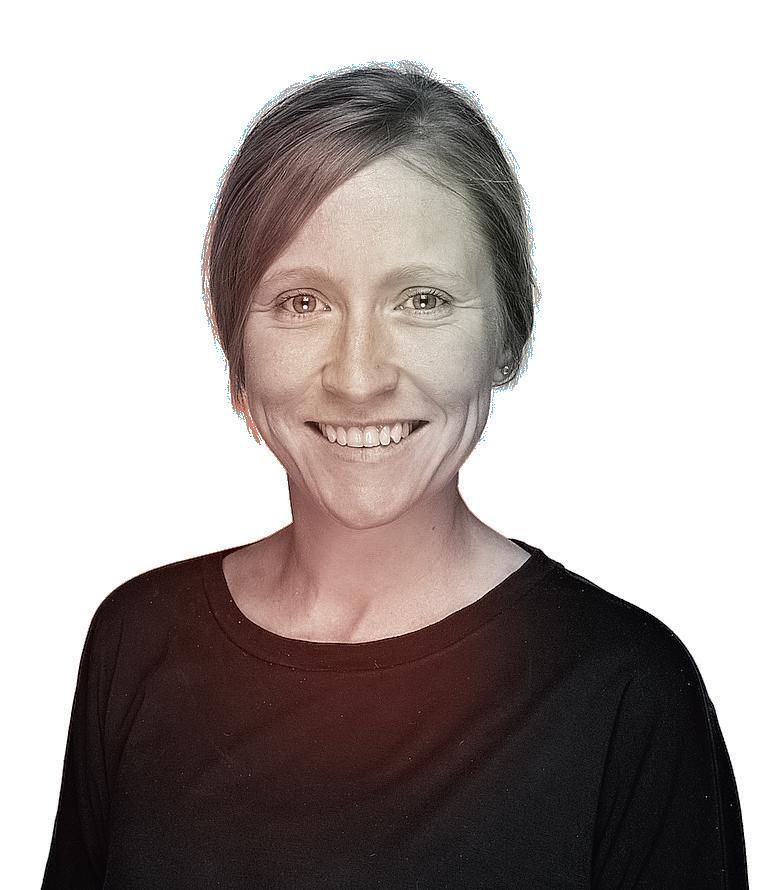
with industry more collaboratively,” he explains. When he left academia, “I didn’t think it was necessarily aligned with my career but I was looking for a new challenge and it set me up for where I am now.
“Through my role at WABSI, I got involved in the development of the CRC and I could sit down and talk with industry and government. Establishing the CRC was like a startup, seeking funding from business partners and the government.”
CRC TiME – a coalition of dozens of mining and mine-servicing companies, governments, regional development organisations and research partners – is now a world-leading centre finding positive and innovative ways to address global challenges of mine closure, for the benefit of people and the environment.
“Agriculture and mining are two very different industries but there’s so much that’s transferable,” says Boggs. He believes that applies to individuals crossing to fresh sectors, too. “It is a risk to move between industries and sectors but there’s so much value that you can bring. As employers, we need to recognise that, too. Sometimes we might think, ‘Oh, hang on, they haven’t been working in the mining industry for the past 30 years’, when actually they can bring in new thinking.”
Boggs says following his gut instincts has meant that his career moves have lined up perfectly. “Stay true to your own values and what you’re trying to get out of life and then find the jobs that help deliver on that. If it means moving between sectors then go for it.”
George Kenley pursued her natural aptitude for STEM subjects at The University of Melbourne, where in 2001 she started a double degree in engineering science. “I did internships at architecture firms and I liked that industry,” she says. “I swapped to engineering, property and construction, which was better suited to where I was going.” A graduate role at Lendlease “was the best foundation”, she
says. “My first graduate role was working on the new Royal Children's Hospital in Parkville, Melbourne, and I got to be involved in the project from breaking ground to the clinical move.”
During almost a decade spent at Lendlease, Kenley says she “lent into” similar specialised projects, including Bendigo Hospital and the Green Chemical Futures building at Monash University, before an unexpected switch to medtech came while she was on maternity leave with her daughter.
Neural engineer Dean Freestone – an old friend of the family – approached the Kenleys to invest in his startup. “He said, ‘I’ve got this great idea to use technology to break epilepsy monitoring free from the shackles of hospitals and improve accessibility.’”
The Kenley family – business partners and friends with Freestone’s family in regional Victoria going back decades –became “cornerstone shareholders” in Seer Medical and agreed to bring the business strategy.
With her brothers busy in the wider family business, George stepped up. “I filled that void while I was on maternity leave and it interested me so much that I didn’t return to Lendlease. I was sad to go but this was such an opportunity that I had to take the plunge.”
Kenley’s modus operandi was simple: trust in the experts to do their jobs. “There’s no point in me stepping outside
my skills to micromanage – we’ve built the team to complement our skill sets.”
Since January 2017 – and the first Australian patient that May – Seer Medical has grown to more than 220 employees, with the device now approved or cleared for use in America, the United Kingdom and Europe. Coming from an established business meant that Kenley had to find her startup groove. “It took me a while to become comfortable, going from the discipline of rigorous procedures, processes and frameworks to the fast-paced nature of a startup. I’ve learnt that process for the sake of process slows things down but I’m now more confident about when you need it and when you don’t.”
Now that Seer Medical is past the startup stage, she’s drawn on some of those established ways of working. “We’re a more mature business and with so many people working across different geographies, we need to implement some of those disciplines. I’ve learnt to be more comfortable bridging the gap between areas where it needs to be flexible and those where we have to revert to the slower, more process-driven frameworks.”
Kenley didn’t go looking to shift jobs, let alone industries, but offers her counsel. “You can’t partially make the leap – you have to go all-in. Obviously that depends on your life situation but if you really give it a go then even if you find it’s not for you, what you take away from having tried will be so much more.”
A family holiday to the Daintree Rainforest sparked Belinda Everingham’s passion for native botanicals. Soon after, Bondi Wash took flight and a series of game-changing meetings brought its products to the world.

In 2013, Belinda Everingham launched Bondi Wash, a range of natural home, body, baby and dog products that now sells in more than 34 countries. The brand, which harnesses the powerful ingredients of Australian botanicals, was inspired by nature but born of a real need.
“I got a headache using commercial spray on my kitchen bench and was getting rashes from mainstream shampoo,” says Everingham.
“I thought, ‘Gosh, if they are doing this to me, what are they doing to my children and the environment?’
My ‘A-ha!’ moment came a few years later on a holiday to Tropical North Queensland in July 2012, when we visited a fruit farm and a rainforest in the Daintree and saw all these trees I’d never heard of before. I’ve always loved fragrance and I wondered whether we in Australia could make beautiful products from our unique natives, like Tasmanian
pepper and lemon tea tree. With the help of a professional chemist, I worked to develop scents and formulas, starting with a kitchen bench spray.”
More products followed and Bondi Wash was born. “I live in Bondi and I was inspired by the crystal-clean wash of the waves at our local beaches. I also wanted a name that said ‘Australia’ in a fresh, modern way.”
Fast-forward a decade and “we now have 130 Australian stockists and 400 around the world, as well as our ecommerce site.”
Since 2019, her business has grown 400 per cent – the Bondi Wash Bench Spray alone hits sales of 100,000 units annually. And just like the seed that was sown on that inspiring family getaway, the business has taken off with the help of several game-changing trips made since, as Everingham explains.
“Not long after I launched Bondi Wash, I flew to Hong Kong. I wanted to find a stockist there and I happened upon 10/10 Hope. It was a tiny store with a range of natural products from around the world and I gave them my business card. It was a chance discovery that changed so much for Bondi Wash. Unbeknown to me, 10/10 Hope had 17 shops in Taiwan, three more in Hong Kong and was launching in China. Six months later we launched Bondi Wash in Asia and now China is 20 per cent of our business. I’ve travelled up there many times to meet our distribution team, run events and to visit shops where we’re stocked. Right now, I’m planning on launching retail stores in Hong Kong, Taiwan and China. I must say, the Qantas Club Lounge in


Hong Kong is one of my favourites. I always have a shower before my next flight and I’ve gotten to know the menu – they have the best gluten-free brownies! We save on Qantas Club membership as part of Qantas Business Rewards so several of our team have been able to sign up. Access to lounges makes travel so much more comfortable and productive for us all.”
“It was 2015 and my first time in Japan. In the shops, absolutely everything was of such high quality and there was a gentleness to the people. I just loved it. I’d previously turned down a Japanese distributor but he’d offered to meet and give me advice. We took a train to Kanagawa, he took us to lunch and we ended up forming a partnership that’s still going strong today; we have more than 50 stockists in Japan. There are some things you just can’t pick up over Zoom so travel is a must. We get savings on flights through Qantas Business Rewards and it helps us travel more frequently than we otherwise would.”
“Travelling to meet people face-to-face is much more powerful than email or video calls. I’ve learnt so much on these business trips about how different markets operate, which I could never have understood unless I was there on the ground. The Qantas Points our business earns make these connections happen.”
“This is a frequent trip for our team because our manufacturer and warehouse are in Melbourne. Our products are 99 to 100 per cent natural and we’re rigorous about testing the efficacy of our formulas. Being there in person is vital when working on new products. Ideas come from trying and seeing new things. We were looking at samples with our packaging company and there was a pearlescent finish on a sample on his shelf, which wasn’t in the samples he’d initially sent us. This set us on the path to a new look and feel for the products, which we wouldn’t have found if we hadn’t been there. Typically, we use the Qantas Points we earn through Qantas Business Rewards to book our flights. It’s a good-value way to use the program and we can book and access it all from the Qantas Business Rewards dashboard.”
“We seek inspiration all over Australia. In April 2021, we flew to Perth and then on to Paraburdoo to four-wheel-drive into Karijini National Park. It was the most amazing trip. While I was there I picked up a brochure from the information centre in the Pilbara which profiled many of the local plants and their healing, antibacterial or insect-repellent properties. For my other brand, Wash Wild, we collaborated with CSIRO to develop a blend of native oils that are potently effective against a range of bacteria and moulds. The Qantas network makes it easy to reach regional and remote areas as we undertake research about native botanicals. I’ve been down south of Perth to Denmark and Albany and the diversity of plants in Western Australia is incredible. There’s so much more that our business – and our country – can share with the world.”
Are your Qantas Points helping you save on business travel?
Qantas Business Rewards lets you earn points with 50+ partners on everyday business expenses, such as flights, credit card spend, fuel, car hire and hotels.1 Use these points to book flights and upgrades with ease.2
Save on travel costs for your business
Turn your business’s Qantas Points balance into your next business flight by redeeming your points to book Classic Flight Rewards or Points Plus Pay flights. 2
Request an upgrade for your team
With Classic Upgrade Rewards, you can use your business’s Qantas Points to upgrade your next flight directly from your Qantas Business Rewards account. 2
Save on business expenses
Travelling with samples and stock? Use your business’s Qantas Points to pre-purchase additional baggage directly from your Business Rewards account for you or your travellers. 2
Discover how other members unlock more for their business at qantas.com/businesspassport
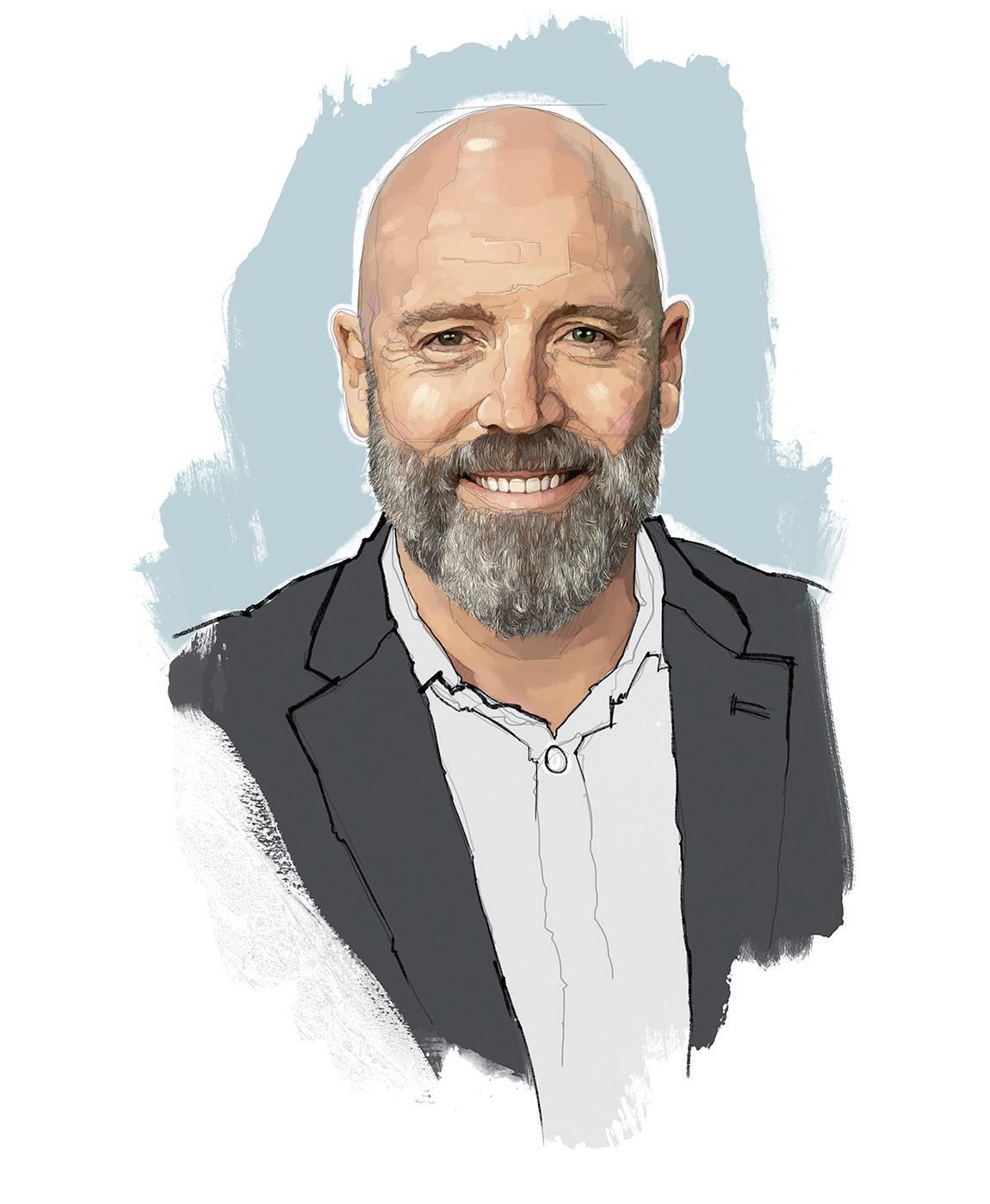
The Blackmores CEO says he constantly feels outside his comfort zone – and that’s just the way he likes it.
CURRENT ROLE Group CEO and managing director, Blackmores
TENURE Three years, seven months
AGE 50
PREVIOUS ROLES Senior vice-president – APAC, Latin America, Middle East and Africa, Coty; regional vice president – APAC, Latin America and global distributor markets, Procter & Gamble; managing director and general manager, Wella China
How do you define good leadership?
It’s ensuring you have a clear vision for the team and you’re surrounding yourself with talent that is diverse enough to be able to achieve the best possible results.
When you look at diversity, are you thinking about the make-up of the team or the diversity of the thinking?
It’s a bit of both. It can be cognitive, ethnic, gender – the richer the mix, the better. We operate in 13 markets across Asia and one of the things we talk about a lot is that the leadership group should mirror the consumers we’re serving.
Are you satisfied with the diversity you have now?
It’s always a work in progress. From a gender point of view, Blackmores is in a pretty good place – 60 per cent of our board and about 50 per cent of our executive team are female. The one area that is always an opportunity for an Australian company is ethnic diversity. We want to develop and cultivate talent inside our organisation and allow people to reach their ambition and potential.
When you were hired as CEO of the health company in 2019, Marcus Blackmore – the former chair and son of the founder – said companies do too much box-ticking when it comes to hiring CEOs and forget about gut instinct and people skills. How did you win him over?
I was living in Dubai at the time so I only had a couple of opportunities to meet Marcus face-to-face. The second meeting we had was in a restaurant and I met Caroline,
Marcus’ wife, as well. It struck me that Marcus and Caroline were both conducting the interview so for me it was more about just being myself. No matter how senior you are or how important you think you are, at the end of the day you’re just like everybody else so having that humility and ability to connect with people is always important.
Marcus Blackmore is a very vocal shareholder. How do you balance the needs of shareholders with your customers and employees? Our major shareholder [Blackmore] has about 20 per cent of the shares and almost 60 years’ experience with the company but there are plenty of other shareholders who also have their say. We try to make sure that we treat all shareholders equally where we can… You can’t please everybody and you’re not going to be able to reach a consensus across all those varied stakeholder groups but you have to do what you think is right for the company and for the majority of shareholders and stakeholders. The skill of a public CEO is being able to balance all of those groups. If you get pulled in one direction too often because someone is louder or they have a strong point of view, that can lead you down a path where you’re not bringing in collective thought and using that to inform decisions.
Is that the hardest part of your job? I think it is. Ken MacKenzie, the chairman of BHP, once said, “When you get to the position of CEO you think you’ve reached the top of Everest but actually, you’re only at base camp.” You’ve had 20 or 30 years of experience as an executive and you’ve been very successful up to a certain point but the world of CEO is very, very different to that of a senior executive and a lot of it is stakeholder management.
One of the things that’s really important to all stakeholders is ESG. You’ve linked about half of your bank loans to sustainability and environmental targets so you’re rewarded with lower interest rates if you meet those targets. How are you tracking? We’re on track to meet those sustainability linked targets and our KPIs are linked to that. We set ourselves a goal of net-zero emissions by 2030 back in 2020. We were in the middle of closing out an acquisition of a manufacturing site in Victoria, down in Braeside, and we decided that rather than baulk at setting those targets – because being a manufacturer, the emissions and energy usage are much higher than if you’re sourcing products from contract manufacturers, as most brands do in our industry – we wanted to set them. The sustainability linked loans with our financiers were a good way of aligning with our company KPIs, too. We know that if we hit our targets internally, we will then be able to deliver on our commitments as part of those loans. Our carbon emissions are down by four per cent in the last 12 months; half of our waste was diverted but now it’s up to more than 64 per cent. The linked loans are on 50 per cent of our banking facilities, which gives us enough skin in the game without overcommitting ourselves.
Do you think companies need to link targets to financial outcomes? Absolutely. I’m a big believer in you get what you measure. Gone are the days of profit over the environment. It has to have that triple bottom line – profit, people and the planet.
Pre-pandemic, Blackmores had jaw-dropping success in the China market. It must have been so difficult to see that opportunity fall away. How are you re-engaging with China now that borders are back open? We’re full steam ahead. There’s still so much potential in that market. Our business has shifted a lot since 2015 and 2016. We had what I would call a once-in-a-generation event, where we saw [President] Xi Jinping and the government encouraging their citizens to get a passport and go and visit the world. I don’t think we’ll see that wave of travel as much as we did back in 2015 but the good news is that we’re expecting student numbers to return back to the levels that we saw pre-pandemic. It’s an opportunity for Blackmores to re-engage with those students and travellers inside Australia but we’ve also been building strong capabilities directly with the China market.
How do you look after your own health? I understand you’ve run the Great Wall of China marathon and hiked the Kokoda Track? I turned 50 this year so I ensure that I focus on four areas – it’s mental, physical, emotional and social. For me, physical is really important. I get up most mornings at about 5.30 and do a high-intensity training class or walk the dog or go for a surf. Variety is really important and that hour and a half in the morning is my time and an investment in my physical health. The emotional side is the interaction you have with those around you. For me, it’s about being fully engaged in the moments that matter most. If you’re in a conversation, then you are in that conversation and not distracted by other things. That’s a big challenge for us in a digital world.
People really know when you’re not in the moment, don’t they?
One hundred per cent. It could be a shifting glance; it might be asking, “Could you just repeat that?” Focus and attention on the individual is really important. There’s no more important time than right now.
Were you always determined to be a CEO? What was your plan? My father was a senior executive at ExxonMobil and our family moved every three years. So I grew up in different environments, different cultures and different communities. That made me the person I am today. My primary objective was to continue to live my life with those different experiences. I was always ambitious and very goal-orientated but my goal was not to be a CEO. That really only came into focus later in life, when I could see there was an opportunity. For me, it’s always about stretching yourself as far you can go. Get outside your comfort zone. I’m still climbing that mountain.
Do you still feel outside your comfort zone?
A lot, yes. More often than not you’re feeling outside your comfort zone as a CEO. How you deal with those situations and how you manage yourself both internally and externally is part of the skill of being a good CEO.
What’s the one piece of advice you’d give a brand-new CEO? Be curious and open-minded. Asking the right questions is a real indicator of a good CEO. It’s not always having the answers – it’s actually asking the right questions.
INTERVIEW BY JANE
NICHOLLSPHOTOGRAPHY BY NIC
WALKER
The creative director and producer has brought Mardi Gras, festivals and football ceremonies to life. Her mantra? Connect, whatever the challenge.
Leave no-one behind 2021-present
Festival director, Vivid Sydney
“Last year was our first back since COVID and 2.58 million people came to Vivid, which is the biggest audience we’ve ever had. I knew some Sydneysiders had disconnected from the event and I wanted to find out why. I did the research and it was clear that the 2018 and 2019 events had been hamstrung by the light-rail development. The first thing I did was create a lot more real estate for the light walk; there’s now a 8.5-kilometre illuminated band of light that goes all the way from the Opera House to Central Station. Vivid gives me the opportunity to work on the extraordinary canvas of my adopted city that I love. I had tears in my eyes on opening night last year, seeing the city back to life. This year our theme is Vivid Sydney, Naturally, inspired by the natural environment. Artists have responded incredibly to that theme. The quest throughout all my jobs is to constantly reinvent, refresh, connect and leave no-one behind – to work to lead an audience into new experiences. Those are the lessons that keep whacking me over the head.”
Vivid Sydney 2023, 26 May to 17 June; vividsydney.com
Research the audience and tell the right story
2017
Creative director, Rugby League World Cup opening ceremony
“This was an opportunity to translate my skills into another environment. I had to do research and I went to a few rugby league games. We had a show before the first game and Casey Donovan – one of the biggest talents in this country – carried it. There were people from all over the world watching. We had to make sure that the show connected with the rugby league audience in the crowd and the TV audience. It was a live broadcast and that’s a whole other set of challenges. We shared stories about the different nationalities and diversity of people who come together to play the game. It taught me that human beings are all very similar. We have an innate desire to be a part of stories, to dance, to love music and bright, shiny things – all the things that make us think and laugh and connect with each other. I made sure we had all those ingredients.”
Build trust and the sky’s the limit
1999-2015
Various creative director and producer roles, City of Sydney
“I went in on a three-month contract for the [Sydney 2000] Olympics and was there for nearly 15 years. That job taught me how to adapt to doing an event anywhere – once even on a roundabout. It also refined my skills in how to galvanise support for ideas – dealing with a politician is in some ways no different to working with a local community group or residents who are annoyed because you’re going to close their street for an event. I learnt from my mother that there are some things you will never change. She’d say, ‘Save your breath to cool your porridge and move onto something you can [change].’ The key to being successful is to articulate your vision in a really accessible way. When you do that it just takes one or two successful examples and you build trust. Once you have that, the sky’s the limit.”
Understand that risk doesn’t mean unsafe
2013-2015
Creative producer, Dark Mofo
Be brave and take the leap
2015present
Gill Minervini Creative
“I was engaged by MONA the year before Dark Mofo to be part of the creative team. It was walking into another world and another way of doing things. They asked me to develop a community centrepiece. With my creative team, we came up with the idea for the Winter Feast and it has remained a really significant part of Dark Mofo ever since. A lot of my family live in Tasmania and my brother’s a chef so I understood the food culture there. I loved the fact that we could have open fires and nobody got hurt. While still taking every precaution, we could expand the audience experience into a food event that was unlike any other I’d been to anywhere in the world. Sometimes I think it helps to do something for the first time in a smaller place. Risk is a funny thing – for some people it’s open fires, for others it’s huge crowds.”
“In some ways setting up my own consultancy was an obvious step but it was a massive leap in self-belief. For the previous few years I’d worked at the City of Sydney part-time and was building a range of other events. The City was happy to let me do that because it’s important to keep honing your skills. I was offered a contract to direct the opening celebrations for Barangaroo – it was three months of events in 2015. That was the tipping point that gave me enough self-belief to leave my job. Now when I look back, maybe I should have done it earlier. It’s eight years now and I’ve got better at working out my worth, though if you were to cost out every hour, no-one could afford you! It’s a two-way street. I get a lot out of what I do. The financial reward is only one part of it.”
Being yourself takes you a long way
2000-2004
Panellist, Beauty & the Beast , Network 10 and Foxtel
“[The late] Stan Zemanek was the first ‘beast’ I worked with. I was the resident lesbian and he was deliberately provocative but never homophobic, although you probably couldn’t do that show today. It honed my TV skills and refined my position on a lot of things – being provoked can open up the right to have your say. I think I was the only out lesbian on mainstream TV and I’d get letters from viewers about them coming out and from mothers saying that seeing me helped them to understand their gay daughters. Some young gay kids in Queensland started a fan club for me – how bizarre! I think having that visibility back then was important. It also reinforced to me that you get a lot further with being kind and being yourself. And it was fun . There was a parade of incredible women through that show. I’m very lucky to have been there.”
Make meaningful connections
1989-1992
Festival director, Sydney Gay & Lesbian Mardi Gras
“This job changed my life. I had only been in Sydney for a couple of years, working in theatre. I was just 26 so the opportunity seems incredible now. They asked me to come for an interview and called me back that afternoon to say I had the job. I thought, ‘Gee, what do I do now?’ I’ve had a lot of jobs where I’ve learnt on my feet. They took a chance on someone they thought showed promise. I was given a very long rope and we created a serious arts and cultural festival running over three weeks. I’d never directed a festival but I come from Adelaide so I’ve always been a festival junkie and the Adelaide Festival has had a lot to do with where my life’s taken me. I understood inherently that connection with your audience is the most important thing.”
Sinéad Burke is the Dublin-based founder and CEO of Tilting the Lens, an accessibility consultancy with a focus on disability. She spends her hours coaching individuals while changing the world.
0 6:15
I get a sense of what’s happening in geopolitics and the industries I’m most rooted in by reading newsletters from the Financial Times, The New York Times, Vogue Business and Women’s Wear Daily
0 7:30
No matter where I am in the world, every day at 7.30am GMT I walk five kilometres, talking with my friend [business consultant] Rowena Neville. Leading an organisation can be a lonely journey and having that time to share concerns or successes with somebody I trust and respect has been powerful. She teaches that every issue is a communication issue – so often challenges and errors are due to poor communication, over-communication and a lack of shared understanding.
0 9:00
I am fortunate to live at home. I help my nephew and niece with their breakfast, putting on their shoes, just creating a connection. There’s great joy in being able to instigate fun and chaos with two toddlers and then leave and hide away in your office.
0 9:30
One-hour call with a member of the team, roadmapping the week’s objectives. We are a team of five – in Dublin, London, Glasgow and Berlin – and interviewing for number six. Most of our team identify as disabled, with visible and invisible disabilities. When we look at the pipeline of disabled

talent, we talk about transference of skills because many university campuses are physically inaccessible; education may not be designed to set up people who are neurovdivergent for success. So how can we look at a CV, see the potential in people and carve out the supports they need to succeed?
What I’d love is for the company to become an incubator, for people to spend time with us to add value to our organisation and our clients but then go off and do expert things.
1 0:30
Workshop about recruitment. Workshops are accessible; where required, there’s a sign-language interpreter, live captions, an opening with a visual description for those who are blind. The slides are accessible in terms of colour contrast.
We’ve analysed the client’s employment platform. If a job description is a PDF, that’s an explicit symbol of exclusion – it might not be accessible to those using screen readers. We highlight barriers in the client’s day-to-day practices and provide solutions. Education is the true way of creating change, rather than us being some sort of vital supply to the organisation forevermore.
On this day a person raises their hand and self-identifies as having an invisible disability, being autistic. None of their colleagues knew but immediately began to join the dots in terms of how this person prefers to communicate, the activities that would be more accessible to them. This is a highlight of my career. We created a space wherein that individual felt comfortable for the first time to share who they are.
[See Unspoken, right.]
1 3:00
Tomato soup and a toasted bagel with prosciutto and mozzarella. Try not to answer emails.
1 4:00
Call about redesigning a playground. The team’s approach is not just thinking about disabled children but what would this look like from a disabled parent’s perspective? It’s rare to think about the sight lines needed for a deaf parent or how a parent who uses a wheelchair gets to the seating.
We bring in disabled people for a focus group, ensuring they are paid and their learnings are not only listened to but implemented in the design. Intersectionality is a key part of our work. We look to our community database for a texture of perspectives so it’s not just white, cisgendered, non-queer. The most innovative solutions come from immersing the work in the breadth of the community.
1 4:30
Call with an American client. How do we embed digital accessibility within their new ecommerce and app development that doesn’t just look to compliance but also creativity? How can we look to alt text as poetry?
1 5:00
Weekly team meeting. We start it by asking: what are you bringing to the meeting today? Everybody can answer based on their current feelings, from a personal or professional context.
We track both corporate and community impact using boards and the productivity tool monday.com.
1 6:30
Mentoring call. Across the month, five senior leaders each give me 30 minutes to vent or query them. I reciprocate by meeting with disabled people at different levels of their profession.
In the US, more disabled people were in employment during the pandemic than ever before, due to greater flexibility and the in-built accessibility of tools like Google Meet, Microsoft Teams and
I don’t see my sharing of vulnerabilities as a weakness. Empathy is limited by what we can imagine, whereas vulnerability is rooted in what we don’t know. It creates a capacity to learn more from others.
Zoom. There was frustration from the disabled community that this flexibility of working is something disabled people have been asking for for decades. The world of work said no, it was impossible. And it was impossible – until it benefited non-disabled people or capitalism.
The return to work can be perceived as disappointing to disabled people because all the learnings around the need for greater balance between life and work are being cast aside.
1 8:00
Work with partners on a fund we’re launching to support disabled people accessing third-level [tertiary] education. We can look at the barriers of the office environment but the greatest barrier of all is education: school systems, assumptions, teachers’ mindsets.
1 9:00
Dinner with family, talking about everything other than work. Watch Abbott Elementary and send voice notes and texts to friends.
2 1:00
My eyelids are heavy. The physical exercise and emotional investment and divestment that take up my day stretches me and leaves me needing at least nine hours sleep.
Sinéad Burke, who will speak at Sydney’s Semi Permanent festival in June, describes the “code-switching” required of an employee who conceals a disability “just to do their day”. Someone with autism, for example, might see a risk in asking for a quiet work area, lower lighting, a permanent space in a hot-desking office, even an agenda before a meeting. Beyond stigma or assumed stigma, accessibility accommodations for one person could be perceived as a burden on another. “They are constantly trying to shape themselves into a non-disabled space, to appear as everybody else,” says Burke.
Once a subset of business management and strategy, supply chain planning has risen from the deep in recent years. Missing transport links due to COVID, tangled in geopolitical tensions and bogged down by complacency, supply chains began groaning for attention as inputs ground to a halt and customers were deprived of products they wanted.
Teresa Cutter, co-founder and creative director of The Healthy Chef, a multimillion-dollar 10-person company supplying supplements and ingredients to healthconscious buyers, says the disruptions are “diverse and numerous”. War in Ukraine, for example, has radically reduced supply of sunflower lecithin, an allergy-friendly, natural emulsifier in hot demand. Extreme weather events have also had an effect.
Since the pandemic struck, the time taken for Cutter’s imported ingredients to arrive in Australia “has increased in lead time; what took two months now takes four or five”. Her immediate response was to order big, despite the risk to cash flow.
A boom in people’s attention to healthy living meant the strategy paid off in her ability to meet higher demand. Plus, she says, “I’m working with our production team to find alternative solutions and products that are better or work just as well.”
Gillian Summers, managing director of Brain Industries, which engineers, makes and supplies equipment, such as conveyor pulleys and airloader pumps, to landbased mining and offshore oil and gas clients, says the cost of sourcing specialised parts and materials has surged, sometimes two-fold, in the past few years. But in an upside to rising prices and overseas supply chain interruptions, Summers has been able to turn her passion for boosting skills in NSW’s Hunter Valley region – where the company is based – into action.
Pre-COVID, Brain Industries typically sourced steel pressings from China twice a year but “when the cost of an import sea-freight container quadrupled and transport time doubled, it made the Chinese materials’ price prohibitive”.
Tim McLean, managing director of global manufacturing and supply chain consultants TXM Lean Solutions, says supply chain disruptions are more frequent than many realise. He outlines three key strategies

1 Focus less on the unit price and more on how much it could cost you in gross margins if you’re out of stock of a particular input for a month and can’t manufacture your product.


Smart businesses are breaking free of supply chain issues with systems that promise liberty in the long term.
Mid-2021, the company switched to a local supplier at a cost that was lineball with the total cost of importing. “Product arrived much faster,” which helped to meet customer needs in a more opportune way. Brain Industries’ ability to deliver led to orders for airloader pumps in new markets, including Nigeria and Norway.
Fresh strategies, such as taking on minimal debt, have made Brain Industries more “nimble”, says Summers, enabling the business to work around supply chain issues, like paying for airfreight, as they arise. It has also forged alliances with non-competitive suppliers, including labour-force providers, to share industry intel. One company gives Brain Industries advance notice of maintenance shutdowns at mines so it can be poised to supply them rather than wait for an order.
Both Cutter and Summers are optimistic that the supply climate will soon normalise. But some of the innovative workarounds they’ve developed to solve supply chain issues are here to stay.

2
Longer intervals between orders increase the risk of supply chain failure. More frequent ordering can add to your freight costs but this might be moderated by having a lower inventory.


3
Nurture relationships with your suppliers – develop ordering routines that make it simpler for them to supply your business and collaborate with them to change product design and make delivery easier.








Need to know
Founder Kevin Rumble, 80
CEO Richard Jagger (pictured)
First customer Agreement for commercial development signed in October 2021 with Evergreen Garden Care

What’s the startup? Antibiotic resistance is a well-known global issue; bacteria become drug resistant. Pest resistance to insecticides is a similar “impending catastrophic problem”, says Richard Jagger, CEO of Bio-Gene Technology. “We’re addressing that with the development of insecticides based on unique, naturally derived chemistry.” The ambition is that Bio-Gene will be the basis for new solutions for insect control in crops (including grain storage), public health, livestock and pet health, along with household insecticides for cockroaches and flies, and personal insect repellents.
As pests become increasingly resistant to chemical insecticides, this Australian agtech company’s naturally derived products are attracting global attention.
Investors
Retail investors via the ASX (BGT)
Headquarters Melbourne
Staff
Nine
Market valuation
$20 million
Where did the idea come from? In 2000, researchers from Western Sydney University identified a molecule in oil extracted from the leaves of Gympie messmate, a rare cultivar of an Australian eucalypt that grows in Tropical North Queensland (TNQ). They believed it had insecticide potential. Patents were filed on the Qcide molecule in 2002 and Perth-based adman Kevin Rumble – who’s also a plant science advocate and had originally set up Bio-Gene to work with boronia oil – acquired the IP.
How did it get off the ground? “Kevin worked really hard to get things rolling,” says Jagger. “He put a board together, created enough interest for an IPO and I came onboard from the big ag sector.” The company listed on the ASX in 2017. “It gave us enough money to develop the studies to demonstrate the value of the technology.”
What have you learnt? The Bio-Gene team works with university teams and private research contractors around the world, running projects on everything from breeding pesticide-resistant insect populations to test Qcide to the complex science that has mapped how the molecule disrupts an insect’s nervous system. “We have confirmed our unique mode of action, which shows it works very differently to the chemistry currently used in insecticides. That has huge implications in addressing the problem of resistance.”
Next steps? Bio-Gene has engaged farmers in TNQ’s Atherton Tablelands to grow the Qcide cultivar for oil and collaborated with CSIRO to develop and patent Flavocide, a “nature identical” molecule to Qcide that can be mass-produced synthetically. In January, it signed an agreement with Israel-based STK Bio-Ag Technologies to fund the registration of Qcide in return for non-exclusive access. “STK is focusing on biologicals and they need natural molecules to develop their products,” says Jagger. “The normal model would be for us to register the active ingredient and licence it – for our little company, registration is a significant cost.” It’s a complex journey. “Our road map conservatively projects registration about three years from now.” In the meantime, Bio-Gene can license the molecule to other companies to develop products in readiness for registration.
bio-gene.com.au
The Snowy Scheme is giving a new generation of Australians the opportunity to develop their skills as they build a vital renewable-energy project for the nation.
For two years, mechanical engineer Stacy Bugeja’s “office” has been in the NSW Snowy Mountains as she helps to build the largest committed renewable energy project in Australia. Linking the Tantangara and Talbingo reservoirs, Snowy 2.0 is expected to generate enough electricity to power three million homes over the course of a week and provide 4000 direct jobs over the life of the project. Bugeja talks about her work with the project’s principal contractor, Future Generation Joint Venture (FGJV), and how it has broadened the scope of her career.
What do you do on Snowy 2.0?
I’m a project engineer for the plant and equipment department. Right now, I’m working on the disassembly and reassembly of the tunnel-boring machine (TBM) at Talbingo. We call this TBM the Lady Eileen Hudson. She finished one tunnel last year and next she’ll excavate the six-kilometre tailrace tunnel that will feed into Talbingo Reservoir.

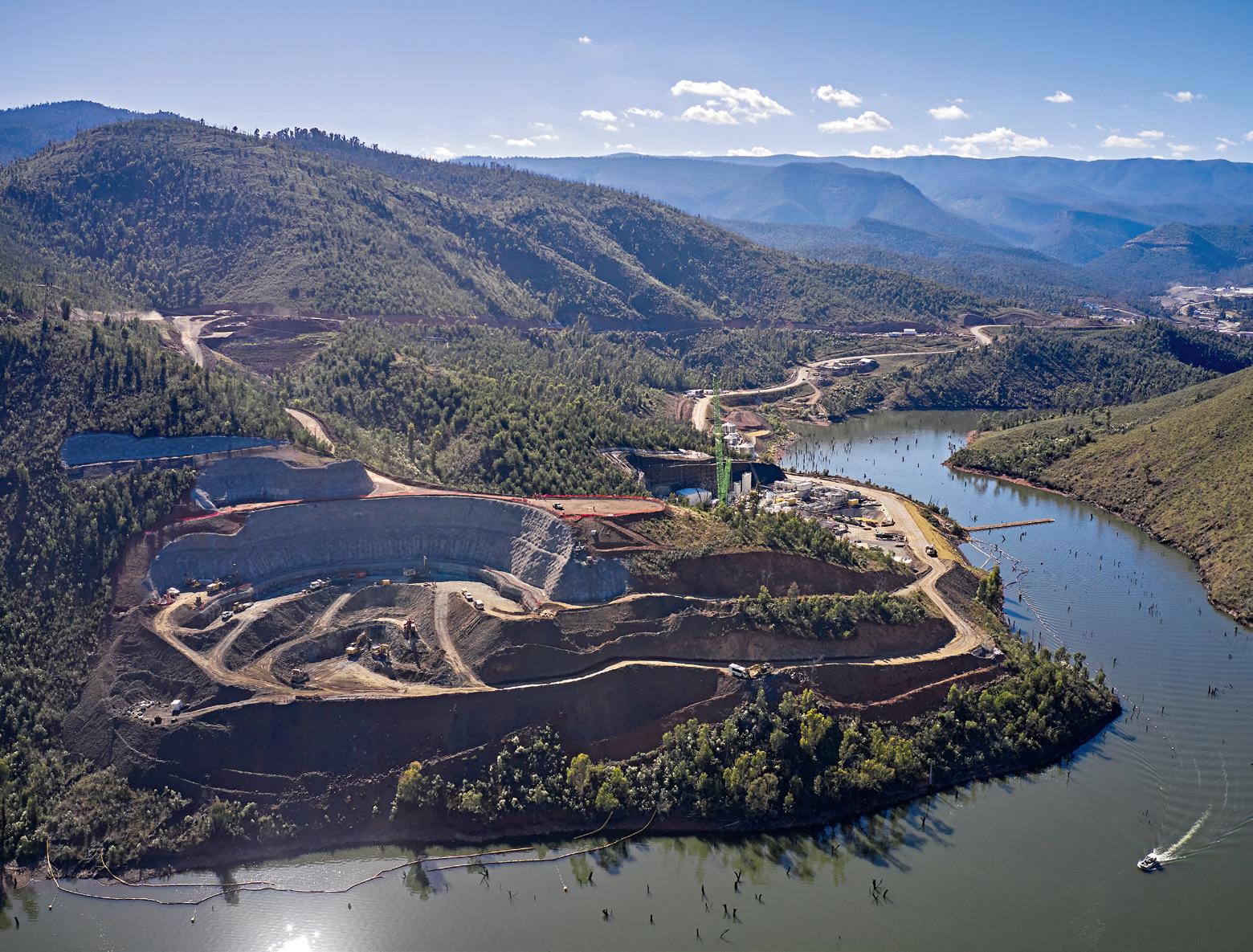
EXPLORE OUR NATION-BUILDING CAREER OPPORTUNITIES
That sounds complicated...
It’s great because I’m getting right back to the core of my discipline as a mechanical engineer. The disassembly and reassembly of such a huge machine has been so interesting and it’s something you don’t get to do very often.
What other projects have you worked on?
I’ve done everything from drill and blast to working on turbines. You wouldn’t get this scope of work on any other kind of job. It’s an iconic project and I love the diversity that comes with Snowy 2.0. What they did with the first project in the Snowy Scheme was impressive so it’s exciting to be a part of the next phase. The scale, complexity and learning opportunities of this hydro-power project are amazing. You can’t compare the Snowy Scheme with anything else.
What do you enjoy about being a fly-in, fly-out (FIFO) worker?
FIFO suits my lifestyle and you make really good friendships – you see your colleagues every day and they become like family. In
Snowy 2.0 is an internationally recognised project using engineering innovation to enhance the iconic Snowy Scheme. Future Generation Joint Venture provides work-life balance, FIFO rosters and charter flights from Melbourne, Sydney and Brisbane. Now hiring Drill and Blast personnel, Technical staff, Engineers, Supervisors, Superintendents and more.
a different job, I did FIFO four weeks on, one week off. At Snowy 2.0, we work two weeks on, one week off, which I prefer. I grew up on a property in Queensland so I enjoy being remote and it’s good to get away from the city.





Think. is Qantas magazine’s thought leadership series that combines smart conversation with good food and wine. This event, at the harbourside restaurant Sala in Sydney’s Pyrmont, featured a panel discussion moderated by Kirsten Galliott, Editor-in-Chief of Qantas magazine and Travel Insider.
Three Australian leaders discuss why diversity, equality and inclusion matter and what businesses need to do to make genuine progress.
(Below from left) John Good, managing director of LSH Auto Australia, Tim Fung, CEO of Airtasker, Lisa Annese, CEO of Diversity Council Australia, Lisa Pile, vice-president and general manager Asia Pacific of Regent Seven Seas Cruises, and Paul Zahra, CEO of the Australian Retailers Association

In association with


The chief executive of the Australian Retailers Association, Paul Zahra has been in retail for more than 40 years, including as CEO of David Jones. A leading voice for diversity, equality and inclusion in the workplace, he is a past chair of PwC’s Diversity and Inclusion Advisory Board and the founding chair of The Pinnacle Foundation, which provides scholarships for disadvantaged LGBTQIA+ youth.

The CEO of Diversity Council Australia since 2014, Lisa Annese has had a long career leading debate on diversity and inclusion across the corporate, government and not-for-profit sectors. She’s led a broad array of evidence-based research, including Australia’s first national index on workplace diversity and inclusion, as well as seminal research on the economics of the gender pay gap.

Founder and CEO of Airtasker, tech entrepreneur Tim Fung transformed Australia’s gig economy through the online marketplace, which is now 11 years old. He is passionate about diversity and creating an inclusive culture at his company. Fung is also the co-founder and director of tech startup co-working space Tank Stream Labs.




Diversity, equality and inclusion (DEI) mean different things to different people. Briefly, could you each tell us what it means to you.
TIM FUNG: We’re a small organisation so for us, inclusion means being able to bring your whole self to work and feel safe to do your best work.
LISA ANNESE: The goal is no matter who you are, no matter what your gender, sex, race or disability, whether you’re First Nations or LGBTQIA+, you’re able to realise your full potential in the workforce and in life and that you have genuine choice. Talent, ability and ambition is found across all pockets of the population so the fact that we don’t see people who are more diverse represented in leadership or in particular industries doesn’t have much to do with merit. Inclusion means there are no barriers to people fulfilling their potential.
PAUL ZAHRA: It’s about being valued and welcomed. That sounds simple but for many people, there’s high anxiety when they walk into a boardroom and they’re the only woman or only gay person in an all-white male environment. A sense of being valued and welcomed can only come from having that sense of diversity. Diversity is a strategy and inclusion is the outcome.
Lisa, what does an organisation that prioritises diversity and inclusion look like?
LA: We run a national Inclusion@Work Index every two years and it shows empirically that if organisations focus on diversity and inclusion, they become more productive, more innovative, their staff are less likely to leave, they report higher levels of wellbeing and they’re less likely to have experiences of workplace harassment, including sexual harassment. There’s no downside. The index also shows that when a workplace focuses on gender equality, men and women benefit – the workplace becomes safer for everyone, there’s a reduction in bullying in the culture, it becomes more flexible and processes become more transparent. It breaks open that club mentality.
Paul, you’ve said that we need to get gender diversity right to solve the other diversity pillars.
PZ: If you can’t get gender equality right in a corporate situation then the other pillars of diversity – whether that’s cultural, LGBTQIA+, people living with a disability – don’t have a hope. We’ve come a long way but there’s more to do.
How do you push that? Is it hard to call it out sometimes?
PZ: Not for me because I’m used to doing it. For people who come from minority groups, it’s easy

“
There is anxiety – people are scared of something so they stay away from it. It’s okay to get things wrong. If you feel that you’ve offended somebody, apologise and show your vulnerability.
”
Paul Zahra

to see it and call it out. It’s a really important visual statement when you do. I’ve been asked to be on all-male panels and I’ve refused.
Tim, the tech industry might have some cultural diversity but there are some parts that are very much a boys’ club. Is that your experience?
TF: That’s not changing in a hurry, unfortunately. Particularly in Silicon Valley, where the people making the investment decisions tend to come from one kind of cohort. It’s an entrenched boys’ club, which sadly I think is going to take quite a long time to unwind.
What’s been the result for Airtasker when you’ve brought in more diverse thinking?
TF: Airtasker serves an entire community – our audience is literally all of Australia. So it’s terrible if we have this thin wedge of people making all the decisions about how the product works.
Do you think your staff expect you to stand up and make diversity and inclusion a big thing for Airtasker?
TF: Yes, I think so. As a technology organisation, we skew a bit younger – we’ve got a lot of folks coming in fresh out of university and the average age of an Airtasker is about 30 years old so they definitely have expectations about that. Which is a really good thing. It keeps us honest and accountable about making that change. We’re trying to create an inclusive space but even this topic can be a difficult thing to talk about because people almost don’t feel safe. Ironically, that’s another thing that needs to be solved –we need to be able to talk about it [diversity and inclusion] openly.
There’s an expectation from consumers about diversity now, isn’t there, Paul?
PZ: Absolutely. When I joined David Jones in the 1990s, there was one female board member, yet about 75 per cent of discretionary shopping is done by women. The obstacles that were ahead for David Jones could have been avoided if they’d had better gender equity at the board level. Consumers today, particularly among the younger generations, are very much shopping around their personal values and diversity is important to them. People are loyal to brands if they know their values are aligned to them.
Lisa, companies often put diversity beyond gender in the too-hard basket. Where should they start?
LA: It helps to take a narrow, targeted view. This work is tough to do and people tend to
underestimate its complexity. They think, “Well, we’ll do something for International Women’s Day”, or “We’ll put a Pride network together or take a float in Mardi Gras.” As lovely as those things are, this is about transformational culture change. Anyone who’s tried to do this in an organisation knows that you almost need a theory of change approach. If organisations want to be successful at it, they first have to identify why. Make sure that you can answer that, not just in moral terms but in business terms. If you can’t articulate it in business terms, you’re never going to engage all the stakeholders you need to in order to ensure this transformation is successful.
PZ: Corporates are generally big beasts and can only do one thing at a time. I encourage companies to focus on one, possibly two pillars. Gender is the must-do and then they can focus on something that’s aligned to their business strategy. In my experience, when companies try to do the whole thing, they do it really badly. Their idea of International Women’s Day is morning tea and there’s no effort or reference around what equality really means and actually driving change. It’s important that companies don’t take on everything then deliver on nothing.
The chair of Diversity Council Australia, Ming Long, was the first woman of Asian heritage to lead a top 200 ASX-listed company. She’s said that she dislikes people saying they’re “colourblind” about race; she wants people to recognise her cultural identity and embrace it.
LA: I think people are well-meaning when they say they’re “colourblind” but when someone says it to Ming – who has lived experience of racism – it undervalues what she’s been through. It diminishes the lived experience of anyone who’s experienced racism or homophobia or sexism or any of those other isms because that’s their real life.
What’s the biggest challenge for a company that wants to embrace DEI?
LA: Step one is figure out why this matters to your business. It’s not hard to formulate a business case around talent recruitment and retention, markets, meeting the standards from regulators and so on. But you’ve got to identify why DEI matters and prioritise it because as Paul said, if you try to tick every box, you’ll just do a whole lot of ticking but have made no change. That can be hard for leaders. For example, this year they might say, “We’re going to support the yes campaign for the Voice”, which is what the Diversity Council and a lot of our members are doing. You’ll need to invest energy in that and it’s going to mean you
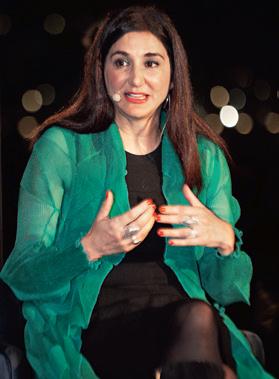
“
You’ve got to build capability and put in the effort to learn. Otherwise,
how are you, as a CEO, going to talk about something like racism, which is hard? If you don’t understand what it is, if you haven’t spoken to people with lived experience, if you can’t even define race or racism, you won’t be up to the challenge.
” Lisa Annese
can’t do other things. People will say, “What about this? What about that?”. It doesn’t mean you don’t care about accessibility or working parents or mental health. But you have to pick one or two at a time – never more than three – do them well and build capability.
Tim, what do you suggest when the applicant pool is not diverse?
TF: The biggest area of recruitment and talent acquisition for us is software engineering and the pools there tend to be very skewed towards men. We take proactive action to change the marketing channels when we go out to recruit – we use different advertising boards, we’ve sponsored women in tech events and female coding academies. Hitting 50/50 is pretty challenging in this area because of the dynamics of the graduates.
Have you ever brought in diversity training to your business and is it worthwhile?
TF: The providers vary in quality but we have invested in diversity training, particularly in leadership. It definitely cascades down through the organisation. It builds awareness of some of the biases that exist in how we operate our business, the way we do talent acquisition, things like that. Creating awareness of those biases is powerful in its own right.
I read some interesting reports from the United States, questioning whether diversity training makes an impact. What are your thoughts on that, Lisa?
LA: I agree with Tim that the providers vary – that’s an understatement! It all depends on what you want to achieve. We have knowledge programs at DCA – we don’t call it training; it’s about building knowledge. It can be very effective but you’ve got to know what it is you’re trying to fix. If you think you’re going to remove bias, put that dream away – it’s not going to happen. All you can do is build capability, expose people to new ideas, present them with the business case and show them what’s in it for them. Everyone who manages people knows that you’re only as good as your team. If you have a diverse team that’s really creative and innovative, you’ll be more successful.
Paul, a question from the floor for you: “My company is pushing back on Acknowledgment of Country and pronouns. How do I fight this?”
PZ: You’ve got to go to the CEO and have a conversation about the importance of it and




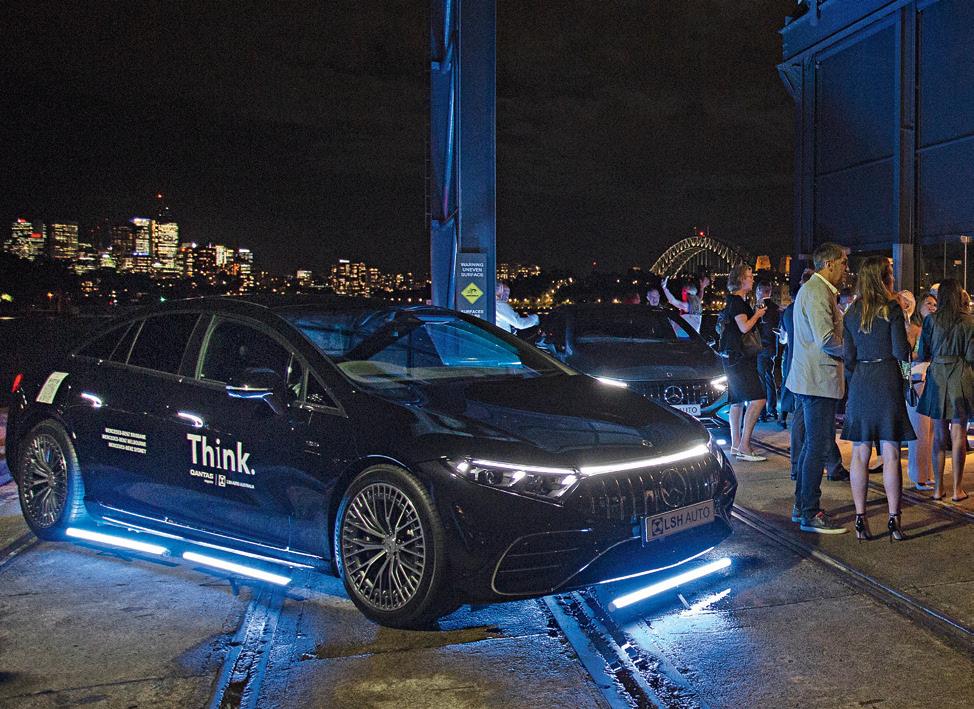
then it filters through. Acknowledgement of Country is such a beautiful thing to do. It comes from the heart and everybody puts their own spin on it. It gives us a moment to reflect on the country that we’re in and the people who have come before us. When it comes to pronouns, that’s a little tougher because a lot of people struggle with it, mainly men. It’s a hard concept for many people to get their heads around. It’s as simple as this: most of us identify our gender from our genitalia but not everybody thinks that way. It’s dealing with a minority group and it’s really important to them that they feel comfortable and people can self-identify. The use of pronouns becomes really important and it’s the ultimate litmus test of inclusivity.
Should we ask each of our employees what their pronouns are or wait to be told?
PZ: I think there’s no harm in asking. I recently went through this with our board where I asked them for their pronouns to put on our website. I had one individual who said, “I don’t agree with that. I don’t want to use pronouns.” I said, “Absolutely. That’s your choice.” But there’s no harm in asking.
LA: We’re very quick to jump on people and say, “You’re not being inclusive, you’re a bigot.” That person will stop listening and just shut down. When I hear people who are frightened or uncomfortable, I try to understand why. People have to go on a bit of a journey. Not everyone’s immersed in this world – some people might have never heard of this pronoun stuff and they don’t understand it. So if someone says, “You must do this”, or “You’re transphobic”, hang on. How you do this work is important. This change journey is a big commitment and it’s about culture change and stakeholders have to be positively engaged with it. If leaders are fearful, they need to go on a bit of a journey. They’re often nervous about getting it wrong.

“
I’m a male, I went to a good school, I was born in Australia – so I’ve got a lot of privilege in these dimensions and I’ve felt pretty lucky. But there have been moments when I’ve stepped back and realised that I actually have been excluded from a network. I didn’t even know what I was missing until it was put in front of me.
”
Tim Fung
Though, like you, Paul, I don’t understand why there would be push back on the Acknowledgement of Country.
How do companies avoid looking tokenistic when they get behind issues?
LA: By not being tokenistic! Companies can’t jump on every bandwagon or you would be on bandwagons forever. You have to get back to “Why are we doing this and what does it mean to our business?” If something’s important to an organisation and the CEO and the board are committed to it, they will resource it. In the gender space, it’s always been the domain of women to create change because women are very good at collective action and lobbying for change. In best-practice organisations, the men are onboard as allies because nothing shuts down a sexist joke like a man calling out another man. When a woman calls it out, she’s “difficult” or she “can’t take a joke”. When a man calls it out, the behaviour stops. In organisations that have invested in leaders who act as allies, when they celebrate International Women’s Day the women know that it isn’t tokenistic. They feel safe in their workplace and know they have opportunities in their workplace.
That’s why Champions of Change has been so successful. Tim and Paul, if I can end with you, what’s one thing that you’d like people to take away from our discussion?
TF: If you’re talking in platitudes just to keep everyone happy, make a tick on a DEI checklist or to meet ASX standards, that’s toxic. Leaders need to slow down, do the research to understand how it applies to their business and be authentic.
PZ: For gender equality, I learnt in my work at PwC that you’ve got to set quotas and targets – being surrounded by accountants is the best place to do it! You’ve got to hardwire it in to make it happen because otherwise it will become lip service. Anything that’s budgeted for, people will have a sense of achievement and get there.
Our next Think. event will be in Brisbane on 24 July. For more information about tickets, visit thinkbyqantasmagazine. eventbrite.com.au Enquiries rsvp@mediumrarecontent.com

LSH Auto Australia has one of the most inclusive workforces in the industry. Managing director John Good explains why diversity is good for business.
LSH Auto is the country’s leading Mercedes-Benz retail group. Why is diversity in the workplace so important to the business?
We want to be an employer of choice and welcoming diversity is key. As a business, our focus is on the best possible customer experience so we need to be able to harness the best skills, knowledge and expertise. The automotive industry has always been very male-dominated, from the technical side through to the shop floor and management. I’m proud that we have strong female representation in the leadership team. We’re also attracting female recruits on the graduate side through our auto cadet program and have young female technicians on the workshop floor. Diversity is not only about gender but also age, culture and nationality. Diversity enriches the whole environment.
How do you measure diversity and equality at LSH Auto Australia?
When hiring, we have a deliberately blind selection panel process so we don’t know the name or the gender of the person. They’re assessed on their abilities and contribution; it’s only later we get to the point of identifying the individuals. With all elements of the business, we have respective scorecards for performance and KPIs. Diversity and inclusion is ingrained into the DNA of our culture.
What are the other benefits of having a diverse workforce?
It builds a strong community and, in turn, helps to drive the business. We extract the best talent without any preconceived bias and then our staff use their skills to add value to the business.

LSH has been recognised with a Diversity Award from the Australian Training Awards. What does this mean to the company?
Having the broadest possible representation among team members enables us to support those in the communities in which we operate. It is recognition of the selection process that we go through to ensure that we are inclusive; it means a tremendous amount to us.
Visit lshauto.com.au for more information.
































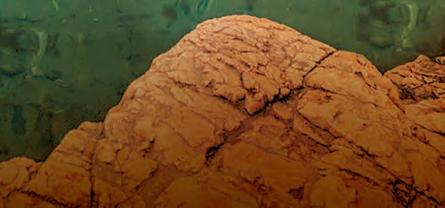





Premiere movies, hit TV shows and absorbing audiobooks


There’s something for everyone in this selection of new films.
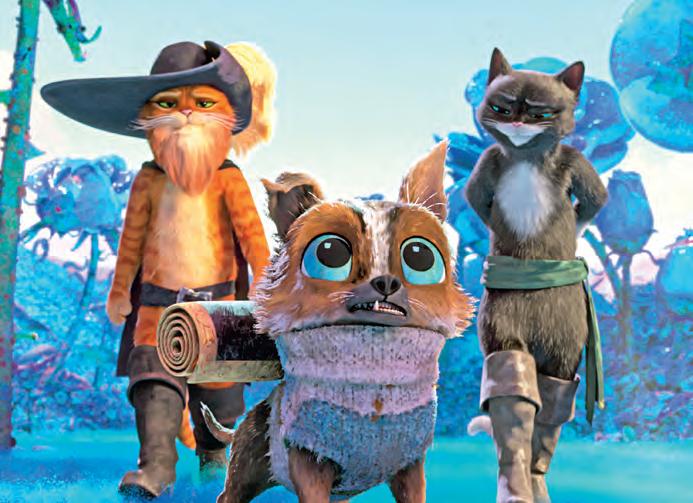

Anyone hoping for a realistic biopic of the zany mind behind such hits as Eat It (a parody of Michael Jackson’s Beat It) or Like a Surgeon (Madonna’s Like A Virgin) won’t find it in this frankly bonkers movie about the early life and success of the musician born Alfred Matthew Yankovic (played with unwavering conviction by Daniel Radcliffe, above, centre). In fact, huge chunks of the film are completely made up, based on the bios of other rock stars, which seems entirely fitting. With Evan Rachel Wood and Rainn Wilson (above, right). Rated M
Puss in Boots: The Last Wish
Hubris. Julius Caesar was guilty of it; so was Macbeth. And their excessive arrogance inevitably led to their downfalls. A fatal flaw that’s in full force when we first encounter our hero (voiced by Antonio Banderas deep in Zorro mode) in this sequel to 2011’s Puss in Boots. Yes, the feline so fierce he’s gone from a supporting player in several Shrek movies to two spin-offs of his own is partying hard on the beach in Del Mar, Spain. Showing off, acting as if he has 99 lives instead of just nine. That is, until he’s injured and, after learning he has only one life left, seeks solace at cat lady Mama Luna’s house. But his respite is cut short when the organised crime family, Goldilocks (voiced by Florence Pugh) and the Three Bears (voiced by Olivia Colman, Ray
Winstone and Samson Kayo), pursue him in their search for the Wishing Star. For those who may have forgotten, this is the one that Geppetto wished upon to turn Pinocchio into a real boy.
The star functions as a sort of Wizard of Oz – it’s hoped it will not only grant Puss all his lives back but also fulfil the desires of Goldilocks and her trio of henchmen. Slight problem: “Big” Jack Horner (John Mulaney) has the map and his own nefarious motivations for capturing the star. Another slight problem: Puss’s ex-lover, Kitty Softpaws (above, right, with Puss, voiced by Salma Hayek), also wants to harness the star’s power. Will Puss beat his rivals to make his dreams come true? Or is there a lesson to be learnt here about hubris and humility? Rated PG

Guy Ritchie, the filmmaker responsible for such swaggering crime movies as Snatch and The Gentlemen, once again turns Hugh Grant into a cockney buffoon. This time, he’s a sleazy billionaire arms dealer, Greg Simmonds, who’s in possession of weapons technology so dangerous, it could end the world. Enter special agent Orson Fortune (Jason Statham), who, along with a reliably merciless Aubrey Plaza, enlists the help of Greg’s favourite movie star (Josh Hartnett, above, left, with Grant) to smoke him out of his hole. Rated M
by Natalie Reilly
WordsBetween 2005 and 2009, the women and children living in an isolated Mennonite community in Bolivia were systematically raped by the men they lived with. The men, who used cattle tranquillisers to knock them unconscious, blamed demons. They were eventually arrested but after writer and director Sarah Polley read the book by Miriam Toews based on the horrific events, she decided to make a movie about what decisions the women made afterwards. Starring Rooney Mara (right), Claire Foy and Frances McDormand, this dark but compelling exploration of female subjugation and empowerment won Polley an Oscar for Best Adapted Screenplay. Rated M

Aftersun

Scottish director and writer Charlotte Wells was working in finance before creating this near-perfect movie, inspired by her own childhood experience. The film is a masterclass in directorial restraint – and acting. Paul Mescal has won critical acclaim and an Oscar nomination for his portrayal of Calum, a clinically depressed divorced father trying to provide a lasting, golden memory for his 11-year-old daughter, Sophie (Frankie Corio, making her stunning debut, left with Mescal), while on holiday at a Turkish resort. Told largely from adult Sophie’s point of view through pieces of video-camera footage she’s found of her dad and her own patchy memories of the holiday, Aftersun manages to be as vibrant and wrenching as any novel, with at least as much subtext. Rated M
Whatever your mood, there’s a show to match.

The Last of Us
This critically acclaimed series is based on the 2013 video game of the same name. It’s set in a post-apocalyptic 2023, after a pandemic caused by a mass fungal infection has wiped out civilisation, leaving only zombies and pockets of survivors, including Joel (Pedro Pascal). He’s been hired to smuggle a teenager, Ellie (Bella Ramsey, above, left), out of quarantine and across the United States. But as anyone who has tried to dodge real-life quarantine knows, that’s easier said than done. Rated MA15+

Inspired by John Ibrahim’s bestselling autobiography, this series details the rise of the nightclub owner and alleged underworld crime figure, from his impoverished childhood to the slick streets of Sydney’s Kings Cross. Rated MA15+
What if Harry Potter was a girl? And instead of the benevolent magic of Hogwarts, children were stolen by a sinister force, the Magisterium? That is the starting point of this sci-fi fantasy that follows Lyra Belacqua (Dafne Keen) as she fulfils an ancient prophecy and her world-changing destiny. Rated M

A mockumentary created by Jerome Clement about the (almost) totally banal lives of a group of vampires, who have shared an apartment for hundreds of years on New York’s Staten Island. Rated M

After years of imprisonment, Morpheus (Tom Sturridge), also known as Dream, is furious. He’s determined to stomp across worlds to restore order to the timelines and multiverses he’s been kept from. Rated MA15+

Tune into these compelling stories.

Young Allegra is surrounded by people who love her –grandmothers Joy and Matilde and father Rick – yet these same people don’t love each other. They all live in their own worlds, divided from each other by a tragedy that refuses to remain silently in the past. In her award-winning comingof-age debut novel set in 1970s Australia, writer Suzanne Daniel makes the conflicted Allegra the lens through which her splintered family is viewed.

The latest hilarious chapter of the adventures of young Charlie and his best friend, Hils, from Australian comic Alan Brough, begins with an interrupted story. Then a mysterious box that speaks and sings. Add unusually unusual teachers, incredible lurking from the Lurker, an insect orchestra and a bungling burglar and it’s up to Charlie and Hils to save three innocent bugs from the forces of evil. Suitable for kids aged seven to 12.

The end of the world is rumoured to be nigh and when Skye Rogers and her twin brother, Red, arrive in Manhattan, she’s asked to join the Secret Runners of New York, a covert society with access to a time portal into the future. What she discovers is frightening. This thriller, from bestselling Australian novelist Matthew Reilly, takes you on a race against (and through) time to change the future before it’s too late.
Enjoy unlimited access to theaustralian.com.au, afr.com.au and themonthly.com.au when you are connected to Qantas Wi-Fi onboard and in Qantas lounges.

Free Wi-Fi and Entertainment App
Once onboard, connect your own device to Qantas Free Wi-Fi on domestic flights in three simple steps to access the internet and Qantas Entertainment App.
STEP 1 Enable Aeroplane Mode and select the “Qantas Free Wi-Fi” network in your Wi-Fi settings.
STEP 2
Follow the prompts on the “Welcome Onboard” screen to connect.
STEP 3
Once you’re connected, you’re now ready to access the internet and the Qantas Entertainment App.
Having trouble connecting?
Make sure you are connected to the “Qantas Free Wi-Fi” network and go to wifi.qantas.com in your preferred browser to start exploring. Inflight entertainment varies by route and aircraft. Voice calls are not permitted inflight.
These exercises are designed to provide a safe way to stretch and enjoy movement in certain muscle groups that can become stiff as a result of long periods of sitting. They may be effective at increasing the body’s blood circulation and massaging the muscles. We recommend you do these exercises for three or four minutes every hour and occasionally leave your seat to walk down the aisles. Each exercise should be done with minimal disturbance to other passengers. None of these exercises should be performed if they cause pain or cannot be done with ease.
01
Start with both heels on the floor and point feet upwards as high as you can.
Ankle circles
Lift feet. Draw a circle with toes, moving one foot clockwise and the other counterclockwise at the same time. Reverse circles. Rotate in each direction for 15 seconds. Repeat if desired.
Knee lifts Lift leg with knee bent while contracting your thigh muscle. Alternate legs. Repeat 20 to 30 times for each leg.
Neck roll
With shoulders relaxed, drop your ear to your shoulder and gently roll your neck forward and back, holding each position for about five seconds. Repeat five times.
Knee to chest Bend forward slightly. Clasp hands around left knee and hug it to your chest. Hold for 15 seconds. Keeping hands around the knee, slowly let it down. Alternate legs. Repeat 10 times.
Mobile phones and electronic equipment: All transmitting electronic devices, including mobile phones, tablets and laptop computers, must be switched to flight mode* prior to departure. Smaller devices such as mobile phones, e-readers, electronic games, MP3 players, iPads and other small tablets may be held in your hands or stowed in a seat pocket. Unless otherwise directed by the captain, these devices may remain switched on and used in flight mode during take-off, cruise and landing. Larger electronic equipment such as laptop computers may only be used from when the aircraft seatbelt sign is extinguished after take-off until the top of descent. After landing, the cabin crew will advise when flight mode may be switched off.
Headsets: Do not use a personal single-pin audio headset in the Qantas inflight entertainment system unless it is supported by a two-pin airline headset adaptor. Personal headsets that connect via a cable
to a handheld device can be used at any time from boarding until arrival. Headsets and other devices that connect via Bluetooth must be switched off for take-off and landing but can be used during cruise.
*Flight mode enables you to operate basic functions of your mobile phone or personal electronic device while its transmitting function is switched off, meaning you cannot make phone calls or send an SMS.
Your wellbeing is our priority. Our Fly Well program brings together a number of measures to give you peace of mind during your flight.
Cabin air: Our aircraft air conditioning systems are fitted with hospital-grade HEPA filters, which remove 99.9% of all particles including viruses. The air inside the cabin is refreshed every few minutes, ensuring the highest possible air quality.
02
Put both feet flat on the floor. Lift heels high, keeping the balls of the feet on the floor.
03
Repeat these three stages in a continuous motion and at 30-second intervals.
Forward flex
With both feet on the floor and stomach held in, slowly bend forward and walk your hands down the front of your legs towards your ankles. Hold for 15 seconds and slowly sit back up.
Shoulder roll Hunch shoulders forwards then upwards, backwards and downwards in a gentle circular motion.
Inflight: The aircraft configuration, including the seats and galley, act as a natural barrier, and people are not seated face to face. The direction of inflight airflow is ceiling to floor.
Enhanced cleaning: Our aircraft are cleaned with a disinfectant effective against coronaviruses, with a focus on the high contact areas of seats, seatbelts, overhead lockers, air vents and toilets. Our people are trained in the latest hygiene protocols.
Face masks: Some destinations require you to wear a mask during your flight or at the airport. Ensure you check the latest government requirements before you travel. Your face mask needs to cover your mouth and nose, fit securely and must be worn unless you’re under 12 years of age or have a medical exemption.
Your inflight health: When flying, passengers can be seated and inactive for long periods of time. The environment can be low in humidity and the
Foot pumps (foot motion is in three stages)cabin pressure equivalent to an altitude of 2440 metres above sea level. The following advice helps you stay healthy during your journey.
The importance of inflight blood circulation and muscle relaxation: When walking, the leg muscle action helps return venous blood to the heart. Sitting in the same position for a long period of time can slow this process and, in some people, leads to swelling in the feet. Some studies have shown that immobility associated with travel of longer than four hours (by air, car or rail) can also lead to an increased risk of deep vein thrombosis (DVT), or clotting in the legs. Personal factors that increase the risk of DVT include:
A ge over 40 years
Personal or family history of DVT or pulmonary embolus
Recent surgery or injury, especially to the lower limbs, pelvis or abdomen
Cancer
Inherited or other blood disorders leading to clotting tendency
Pregnancy
O estrogen therapy (oral contraceptive pill or hormone replacement therapy).
There are a number of ways to help reduce the possibility of DVT, including the following:
Avoid leg-crossing while seated
Ensure adequate hydration
Minimise alcohol and caffeine intake before and during your flight
Wear comfortable, loose-fitting clothes
D uring your flight, move your legs and feet for three to four minutes per hour while seated and move about the cabin occasionally
D o the light exercises we recommend here (see above) and through the inflight entertainment system.
If you have concerns about your health and flying, or you feel that you may be at risk of DVT, Qantas recommends that you talk to your doctor before travelling. Additional measures such as well-fitted compression stockings or anti-clotting medication may be recommended for high-risk individuals.
Jet lag: Unlike other forms of transport, air travel allows for rapid movement across many time zones, which can disrupt the body’s biological clock. This is commonly known as jet lag. This disruption can affect various body rhythms such as the sleepwake cycle and the digestive system, leading to symptoms such as tiredness and lack of energy and appetite. In general, the more time zones crossed, the more disruption of the body clock and the more symptoms experienced after the journey. We recommend the following to minimise the effects of jet lag.
Before your flight:
G et a good night’s rest
During your flight:
Eat light meals
Wear loose, comfortable clothing and sleep when you can
S tay hydrated – drink plenty of water and avoid excess tea, coffee and alcohol
At your destination:
If possible, give yourself a day or two after arrival to adjust to the new time zone
G o out in the daylight and do some light exercise
Try to eat meals and do other social activities at appropriate destination times to adjust to the new time zone
Cabin humidity and hydration: Humidity levels of less than 25 per cent are common in the cabin, as the outside air that supplies the cabin is very dry. The low humidity can cause drying of the surfaces of the nose, throat and eyes and it can irritate contact lenses. If normal fluid intake is maintained during the flight, dehydration will not occur.
We recommend:
D rink water and juices frequently during the flight
D rink coffee, tea and alcohol in moderation
Remove contact lenses and wear glasses if your eyes are irritated
Use a skin moisturiser to refresh the skin
Cabin pressurisation: During flight, aircraft cabin pressure is maintained to a sufficient density for your comfort and health. As the aircraft climbs, the cabin may reach the same air pressure as at an elevation of 2440 metres above sea level. Cabin pressure does not pose a problem for most passengers. However, if you suffer from obstructive pulmonary diseases, anaemias or certain cardiovascular conditions, you could experience discomfort at these altitudes. These passengers should seek medical advice before flying, as some may require supplementary oxygen. Qantas can arrange this but requires at least seven days’ notice before travelling. The rate of change in cabin pressure during climb and descent is also carefully maintained and does not usually cause discomfort. However, children and infants, and adults who have sinus or nasal congestion, may experience some discomfort because of pressure changes during climb and particularly descent. Those suffering from nasal or sinus congestion because of a cold or allergies may need to delay travel. The following advice may assist:
To “clear” your ears, try swallowing, yawning or pinching your nose closed and gently blowing against it. These actions help open the Eustachian tubes, equalising pressure between the middle ear chamber and throat.
If flying with an infant, feed or give your baby a dummy during descent. Sucking and swallowing help equalise pressure in an infant’s ears. Give children something to drink or chew during descent.
C onsider using medication such as nasal sprays, decongestants and antihistamines 30 minutes prior to descent to help open up your ear and sinus passages.
Motion sickness: Air travel, especially if turbulence is experienced, can cause motion sickness, as it leads to a conflict between the body’s sense of vision and its sense of equilibrium. Maintaining good visual cues (keeping your eyes fixed on a non-moving object) helps prevent motion sickness. When the weather is clear, you should look out at the ground, sea or horizon. If the horizon can’t be seen, closing your eyes and keeping your head movements to a minimum will help. While over-thecounter medications are available, we recommend
you consult your doctor about the appropriate medications. More information can be found: At qantas.com.au/info/flying/intheair/ yourhealthinflight
Through the onboard entertainment system
O n our information leaflet available from Qantas or your travel agent
Smoking: Government regulations prohibit smoking on all flights operated by Australian-registered aircraft. The use and charging of all e-cigarettes and other personal vaporisers are not permitted on board an aircraft. There are smoke detectors in all toilets and penalties for regulation breaches.
Travelling with children: Please ask cabin crew for help if required. Baby food and nappies (diapers) are available on most flights, while some washrooms are fitted with baby change tables. Please dispose of nappies etc. in the waste bins.
Leaving flights: On international flights, the cabin crew will distribute the necessary Customs and Immigration forms. If you are stopping en route, you will need your boarding pass to re-board the aircraft. If you’re travelling as a domestic passenger on an international flight within Australia, retain your boarding card with the large D sticker. This will be required to clear Customs at your destination.
Transferring from Australian domestic flights numbered QF400 and above to international flights: At check-in you will be issued with your international boarding pass. Your international boarding pass and baggage will be tagged through to your final destination. There is no need to claim your baggage or attend check-in at the transfer airport. Follow the signs for international transfers passengers to the complimentary transfer bus (not necessary in Melbourne and Darwin).
Transferring from international to domestic flights numbered QF400 and above: On arrival at your Australian transfer port, go through Immigration and collect your luggage. Proceed through Customs and follow the signs to the domestic transfer area to re-check your luggage. A complimentary transfer bus (not necessary in Melbourne, Adelaide and Darwin) departs at regular intervals for the domestic terminal for your connecting Qantas flight within Australia. If your connecting domestic flight is numbered QF1-QF399, there is no need to clear Customs and Immigration. These flights depart from the international terminals. Customs and Immigration clearance will be completed at your final destination.
Transferring to a Jetstar domestic flight: If your next flight is with Jetstar (JQ) or a Qantas codeshare flight operated by Jetstar (QF5400-QF5999), you will need to collect your baggage and follow the signs to the Jetstar counter to check in for your flight and re-check your baggage.
The Qantas Group has a strict policy of denying boarding, or offloading any passenger who makes inappropriate comments or behaves inappropriately inflight or on the ground. Qantas will not accept any inappropriate comments as “jokes”. It will also seek to recover all costs incurred, including diversions as a result of security incidents, from those involved.
Security screening is subject to the laws and regulations of the country of operation. The Qantas Group ensures that its passengers, staff and aircraft are safe and secure through an outcome-focused, risk-based approach to security management. Qantas security standards apply across the business, including QantasLink and Jetstar.
A dedicated operations centre monitors global security events 24 hours a day.
Pa ck your own luggage
D o not carry any items for another person
C arry valuables, approved medication and keys in your carry-on baggage
A ll knives, sharp objects or cutting implements must be in checked baggage
S ecurity measures can include random frisk search after consent is obtained. Passengers may request privacy and must be searched by a screener of the same gender
Important note: Security screening is subject to the laws and regulations of the country of operation.
On all international flights to and from Australia:
E ach container of LAGs in your carry-on baggage must be 100ml or less
A ll 100ml containers must be placed in a single transparent one-litre plastic bag
P lastic bags containing LAGs are to be screened separately from other carry-on baggage
A ll powders must be screened separately with restrictions on the carriage of inorganic powders over 350ml (350g)
Pa ssengers may still carry prescription medicines or baby products sufficient for the flight
I f departing, transiting or transferring on an international flight at an Australian
international gateway airport, duty-free powders and LAGs must be sealed, with receipt, in a security tamper-evident bag issued at the time of purchase
T he Australian federal government has introduced full-body scanners at international gateway airports: Sydney, Adelaide, Brisbane, Cairns, Darwin, Perth, Melbourne and the Gold Coast
The Australian Federal Government has commenced introducing full-body scanners at major domestic airports: Adelaide, Brisbane, Cairns, Canberra, Darwin, Gold Coast, Hobart, Launceston, Melbourne, Newcastle, Perth, Sunshine Coast, Sydney and Townsville
At international gateway airports passengers refusing to pass through the scanner will be banned from entering the sterile area or boarding an aircraft for 24 hours
E xemptions apply for people with serious medical conditions, infants and small children, and people in wheelchairs
A s per advice, the energy exposure is comparable to that from a mobile phone several metres away
T here are no known safety concerns for people with pacemakers and metal implants or for pregnant women
Common items used every day may seem harmless but on an aircraft they may become dangerous. When the aircraft changes altitude, variations in temperature and pressure may cause items to leak, create fumes or catch fire.
Items that are forbidden on aircraft or have carriage restrictions include lithium batteries, other battery types, camping stoves, fuels, oils, compressed gases, aerosols, household cleaners, matches, lighters, paints, explosives (including flares, fireworks, sparklers and bonbons), emergency position-indicating radio beacons, radioactive material, biological and infectious substances and fuel-powered equipment. This list is not exhaustive so please carefully consider what items you pack for your next flight.
If you’re unsure about an item in your baggage, ask a member of our friendly cabin crew.
For further information, go to qantas.com or email dg@qantas.com.au.
Qantas is a partner in the Australian government’s Charter for Safe Travel. Travellers may obtain the latest travel advice for their destination by visiting smartraveller.gov.au.
Several countries are introducing automated immigration clearance procedures to cope with growing air-travel numbers. The goal is to provide a faster, smoother immigration experience to eligible passengers without compromising border security. Please note that some automated clearance options may not be available due to COVID. Countries providing facilities across our network:
Australia SmartGate: e-passport holders of Australia, Canada, China, France, Hong Kong, Ireland, Japan, Korea, Macau, New Zealand, Singapore, Sweden, Switzerland, UK and US
China e-Channel: citizens of China
Hong Kong e-Channel Residents: citizens and residents of Hong Kong
Hong Kong e-Channel Visitors: frequent visitors that are visa-exempt, including Australians
Indonesia Autogate passport gates: citizens of Indonesia
Japan Speedy Immigration: citizens and foreign nationals with re-entry and special re-entry permits
New Zealand SmartGate Plus: e-passport holders of Australia, New Zealand, UK and US
Singapore enhanced-Immigration Automated Clearance System (eIACS): citizens, permanent residents, work permit holders and APEC cardholders
UAE eGate: UAE citizens and residents
UK ePassport gates: e-passport holders of UK, Switzerland and European Economic Area (EEA)
USA Global Entry system: US citizens and permanent residents, Dutch citizens, South Korean citizens and Mexican nationals. Canadian citizens and residents with NEXUS membership
USA Automated Passport Control: for US, Canadian and Visa Waiver Program passport holders
Fee applies
Pre-enrolment required


Across
10. Masculine (6)
11. Fragrance (5)
12. Steal (6)
13. Actor, ... Cumberbatch (8)
14. Tomb marker (10)
15. Subatomic particle (6)
16. Snowy peak (3)
18. Vehicles for staff use (3,5)
19. Concerto section (8)
21. Episode (10)
24. Decree (4)
25. Hotelier (9)
27. Shape (4)
28. Likeable (10)
31. Avowed (8)
33. Ornamental tree (8)
36. Water scooter, jet ... (3)
37. Writer, ... Hemingway (6)
39. Penicillin or vancomycin (10)
41. Revolted (8)
42. Assert without proof (6)
43. Dulls (senses) (5)
44. Kayaks (6)
01. Of straight lines (6)
02. Minor road (4,6)
03. Insolence (8)
04. Experienced craftsman (4,6)
05. Ditty (4)
06. Weighs up (8)
07. Come into view (6)
08. Rostrum (8)
09. Salad herb (6)
17. Of inestimable worth (9)
20. Oxygen compound (5)
22. Ventilate (3)
23. Hold gently (5)
25. Actor, ... Stiller (3)
26. Pass off (author’s work) as one’s own (10)
27. Forefront of a controversy (6,4)
29. Sentry (8)
30. Bragging (8)
32. Microphone sound distortion (8)
34. Chronicles (6)
35. Dally (6)
38. The city of Malmö is there (6)
40. Arrived (4)
Across
10. Showing manly strength will stir up ill feeling after 6:00am (6)
11. Smell emanating from a drifter? (5)
12. Quietly rifle around and act like a petty thief (6)
13. Eggs prepared for the Pope? (8)
14. Memorial monument for most solemn individual (10)
15. Scientists see it as positive when paid sportsman puts on large amount of weight (6)
16. Circuit around mountain (3)
18. Commuter groups leave vehicles around swimming centre (3,5)
19. Motion proposed by political activists (8)
21. Part payment for chapter (10)
24. Official sanction issued by Italian car firm (4)
25. Ban the goalie from becoming US pub employee (9)
27. Class for beginning mathematicians (4)
28. Man or woman capable of being charming (10)
31. Upheld by a loud, unyielding publishing supervisor (8)
33. Main goal is to order flowering shrub (8)
36. How last three Bolsheviks get back down from the summit? (3)
37. Heartfelt speech for Mr Borgnine (6)
39. Bug killer prescribed for infection (10)
41. Pretty girl in crimson refused to conform (8)
42. Everyone, for example, starts examining claim (6)
43. What a local does for one in pain? (5)
44. No case was damaged in these boats (6)
01. Gasoline – a resource seen by some as one-dimensional (6)
02. It’s steered into back lane (4,6)
03. Rebelliousness of French husband-to-be (8)
04. Expert history teacher? (4,6)
05. Lyrics gave lad a great start (4)
06. What’s left in accounts stays steady (8)
07. Turn up as a social equal, I’m told (6)
08. Stage that’s slightly off-track (8)
09. Plant growing at either end of fencing panel (6)
17. It’s of tremendous value to set cost at lower amount (9)
20. Rust will make beast die, perhaps (5)
22. Provide publicity space (3)
23. Tend to translate runes (5)
25. He’s big in London (3)
26. I spare Gail the hassle and use someone else’s ideas (10)
27. Where you’re most likely to be injured in the retrenchment queue (6,4)
29. Lenin set out to find guard on duty (8)
30. Is it smart to stand behind a snake blowing your own trumpet? (8)
32. Pass ball to defender in response (8)
34. Records the annuals you removed (6)
35. Hang around waiting for oil to mix with some water (6)
38. You and I take part in send-off in northern Europe (6)
40. Arrived on a dromedary but missed the final (4)
Tough puzzle, simple rules: each row, column and 3x3
1-9.
Create as many words of four letters or more as you can using the given letters once only but always including the central letter. Don’t use proper nouns or plurals ending with “s”. See if you can find the nine-letter word using all letters.
20 G ood
30 Very good 40+ Excellent
Work out all the words needed to complete the names of these fictional characters and cross them off where you find them in the grid. The leftover letters will spell out two authors known for their stories containing talking animals.
D T R H A R E C
BLINKY BUGS
CHIP AND CRASH
DUCK
MR FOX PENNY
HUCKLEBERRY
THE FROG
LADY AND THE LIGHTNING
MAGILLA
MICKEY
MOUSE
PIGGY
MR TOAD OF PADDINGTON
PETER
PINK
PUSS IN BEAR SCROOGE SHERE SPEEDY
RUXPIN
TEENAGE MUTANT
THREE BILLY GOATS
SAM THE POOH WOODY
THE TURTLE

Can you spot the seven differences between these two images? Circle what’s changed on the image below.

01. In the military, what does NCO stand for?
02. What is the largest lake in Central America?
03. What is the stage name of the shockrocker born Vincent Furnier?
04. Which religious figure is associated with the Bodhi tree?
05. What is added to red wine to make the Spanish drink kalimotxo?
06. People from which world capital are known as Varsovians?
07. What is the only city to have hosted both the Summer and Winter Olympic Games?
08. Tony Curtis played Joe, Josephine and Shell Oil Junior in what classic comedy movie?
09. What is the most widely spoken language of Africa?
10. Bands The Hollies, Joy Division and Oasis all came from what English city?
11. What animal inspired the phrase “long in the tooth”, meaning old?
12. What car brand’s logo consists of four interlocking rings?
13. Haneda Airport serves what major global city?
14. Approximately how many people visited Antarctica in the last summer season: 10,000, 50,000 or 100,000?
15. Pedro Pascal and Bella Ramsey star in the TV adaptation of what video game?
16. Which cricketer holds the record for most runs scored in a Test innings?
17 And how many runs did that player score?
18 Hass and shepard are the main Australian varieties of what food?
19 Who was the 2022 Australian of the Year?
20. Angharad, Rhiannon and Rhys are names from what language?
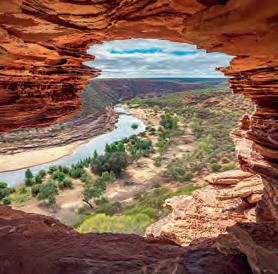
Get your daily dose of travel inspiration as we share the latest and greatest tips on where to go, things to do, what to eat and drink, and more.


If you’ve filled in the answers, please take the magazine with you so the cabin crew know to replace it with a new copy.
Crossword
Match-ups
Ache, Arch, Char, Chat, Each, Etch, Hard, Hare, Hart, Hate, Head, Hear, Heat, Heed, Herd, Here, Rhea, Tech, Thee, Ached, Chard, Chart, Cheat, Cheer, Death, Earth, Ether, Hated, Heard, Heart, Reach, Retch, Teach, There, Three, Adhere, Arched, Archer, Dearth, Detach, Etched, Etcher, Harder, Hatred, Heated, Rather, Reheat, Thread, Charred, Charted, Charter, Cheated
Nine-letter word: Chartered
Spot the difference
01. Front-left house changed to green.
02. Spire added to white church.
03. Light green house on hill duplicated.
04. Roof at top-centre changed to red.
05. Trees now obscuring building near church.
06. Chimneys deleted from front-right house.
07. Window on main church enlarged.
Blinky Bill, Bugs Bunny, Chip and Dale, Crash Bandicoot, Donald Duck, Fantastic Mr Fox, Henny Penny, Huckleberry Hound, Kermit the Frog, Lady and the Tramp, Lightning McQueen, Magilla Gorilla, Mickey Mouse, Mighty Mouse, Miss Piggy, Mr Toad of Toad Hall, Paddington Bear, Peter Rabbit, Pink Panther, Puss in Boots, Rupert Bear, Scrooge McDuck, Shere Khan, Speedy Gonzales, Teddy Ruxpin, Teenage Mutant Ninja Turtles, Three Billy Goats Gruff, Toucan Sam, Winnie the Pooh, Woody Woodpecker, Yertle the Turtle Solution: Lewis Carroll and Kenneth Grahame
Quiz
01. Non-commissioned officers 02. Lake Nicaragua 03. Alice Cooper 04. The Buddha
05. Cola 06. Warsaw, Poland 07. Beijing
08. Some Like it Hot 09. Swahili 10. Manchester 11. Horse 12. Audi 13. Tokyo 14. 100,000
15. The Last of Us 16. Brian Lara 17. 400 not out 18. Avocado 19. Dylan Alcott 20. Welsh






